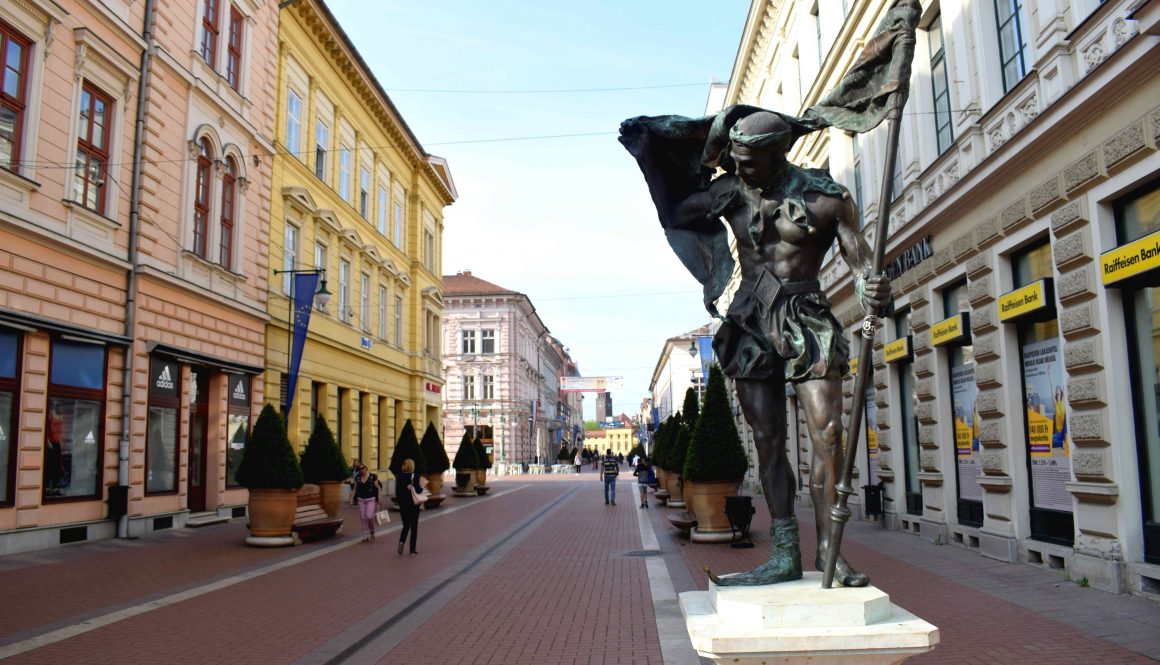Szeged: A cycling paradise in southern Hungary
In early May I got on a plane to head to the Balkans for a wedding. The cheapest way to get to the Balkans from Moscow is to fly with Wizz Air to Budapest and take a train.
I could have just taken a direct train from Budapest to Belgrade. It’s fast, cheap and comfortable. But being the adventurer that I am, I decided to make a trip out of it and visit some smaller cities in Hungary.
I was also a little selfish and wanted to save money by going the cheapest route.
So I took a train to Hungary’s third largest city in the south of the country. Here’s what I found.
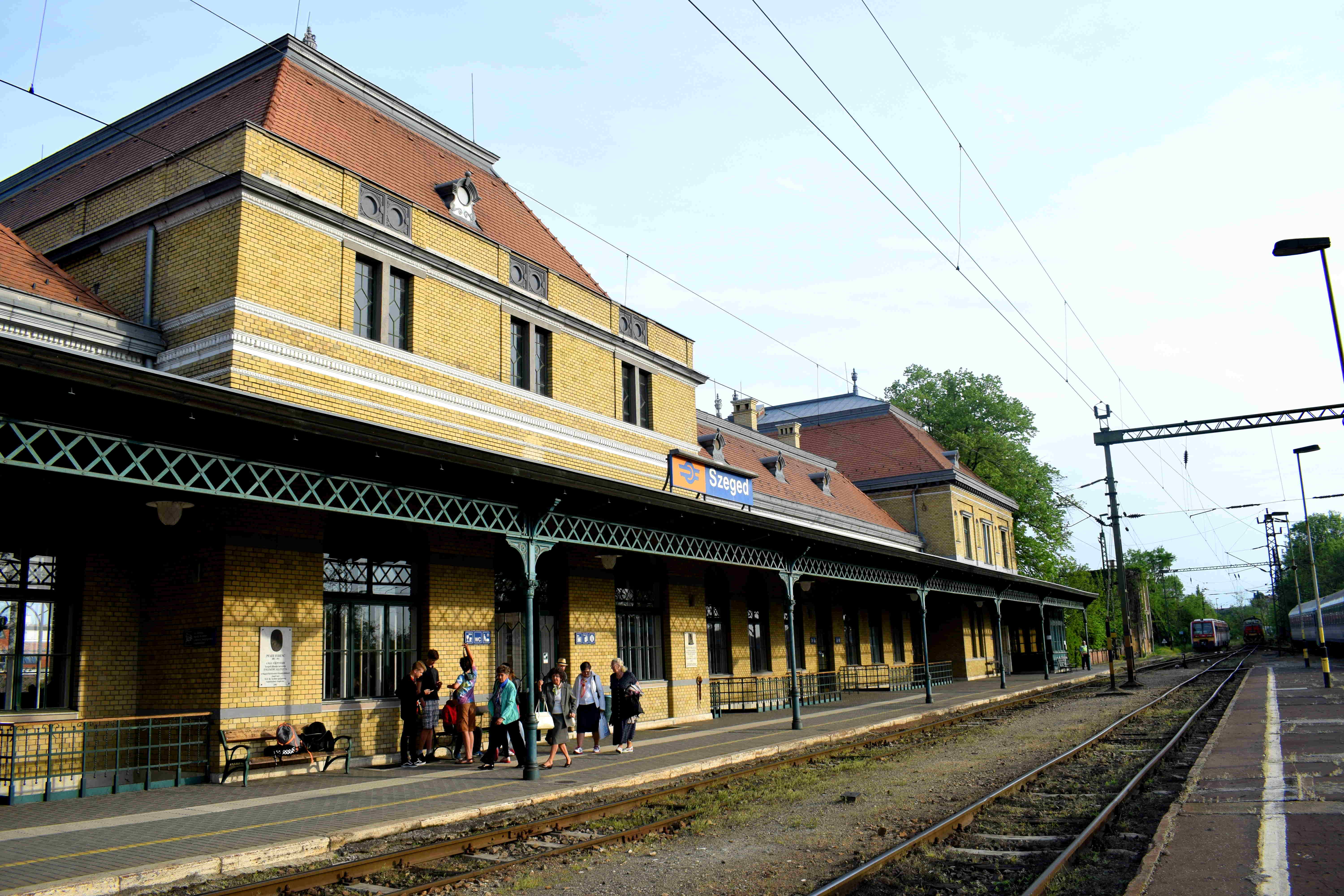 The train station is an old modest historical building. There’s a few things I judge a city by – biking, trams, pedestrian streets – and train stations are one of those.
The train station is an old modest historical building. There’s a few things I judge a city by – biking, trams, pedestrian streets – and train stations are one of those.
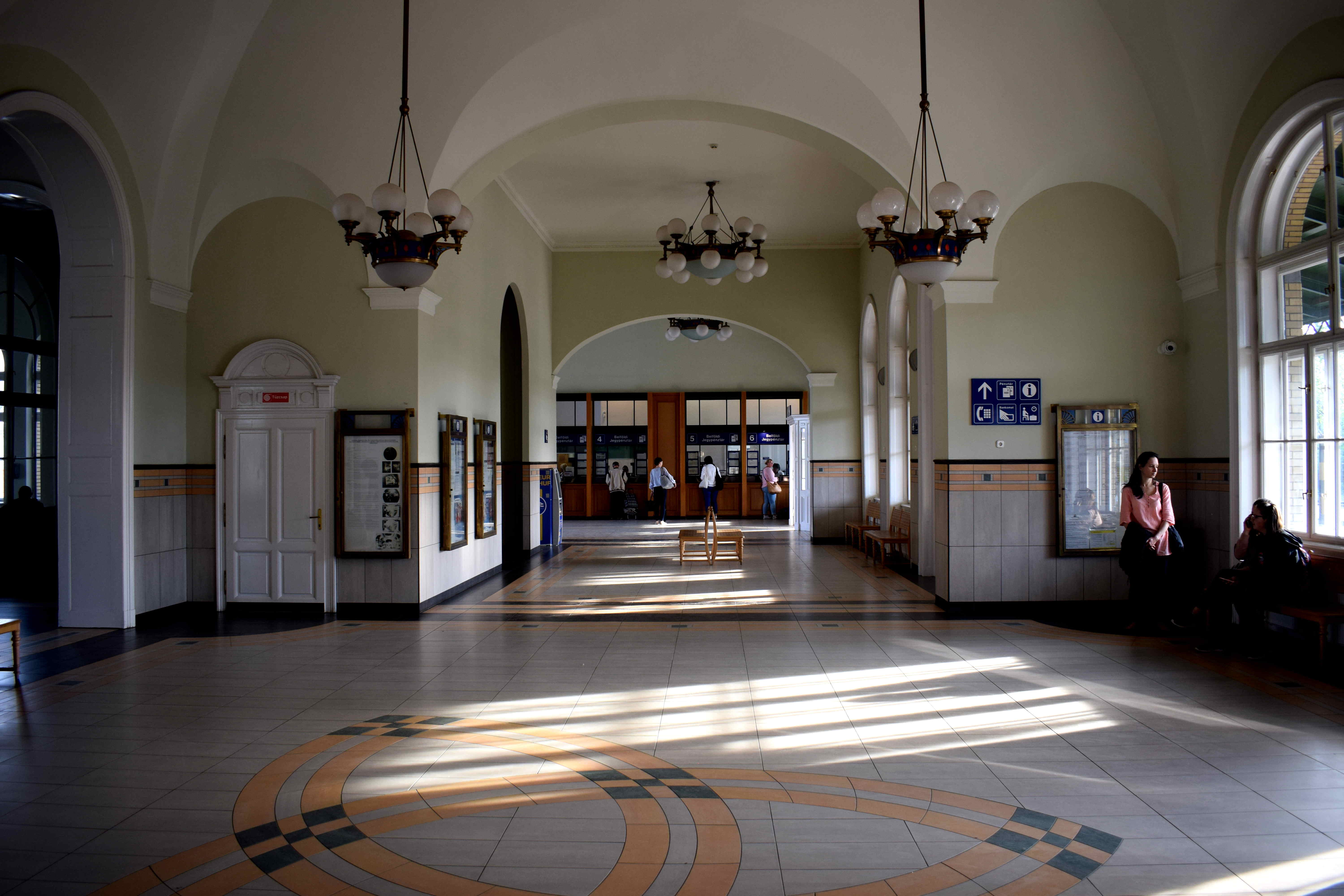 A historic train station means a historic city. And thankfully, Szeged’s train station is beautiful.
A historic train station means a historic city. And thankfully, Szeged’s train station is beautiful.
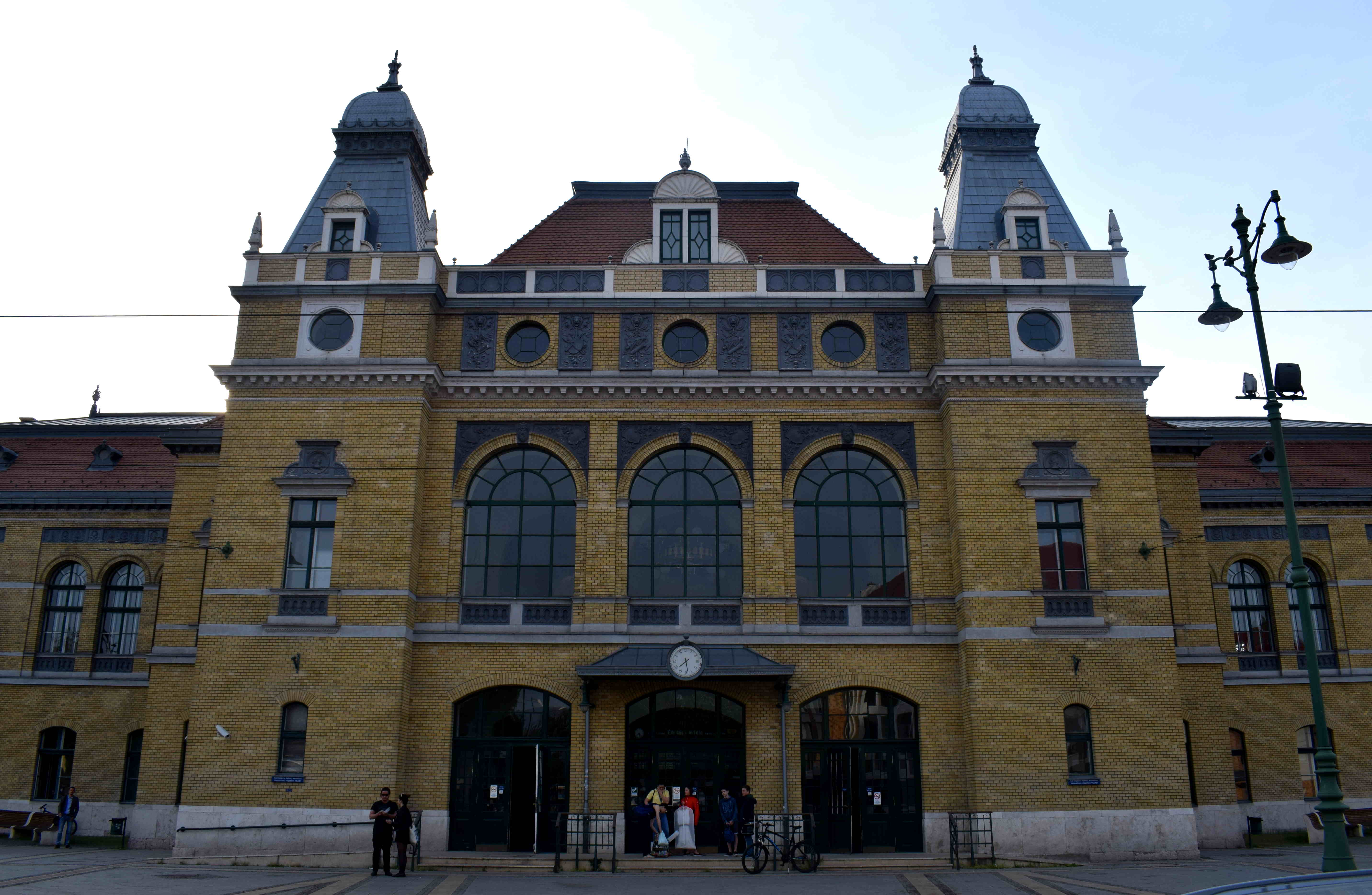 The entrance to Szeged’s train station. Szeged was connected to Budapest by railway in 1854.
The entrance to Szeged’s train station. Szeged was connected to Budapest by railway in 1854.
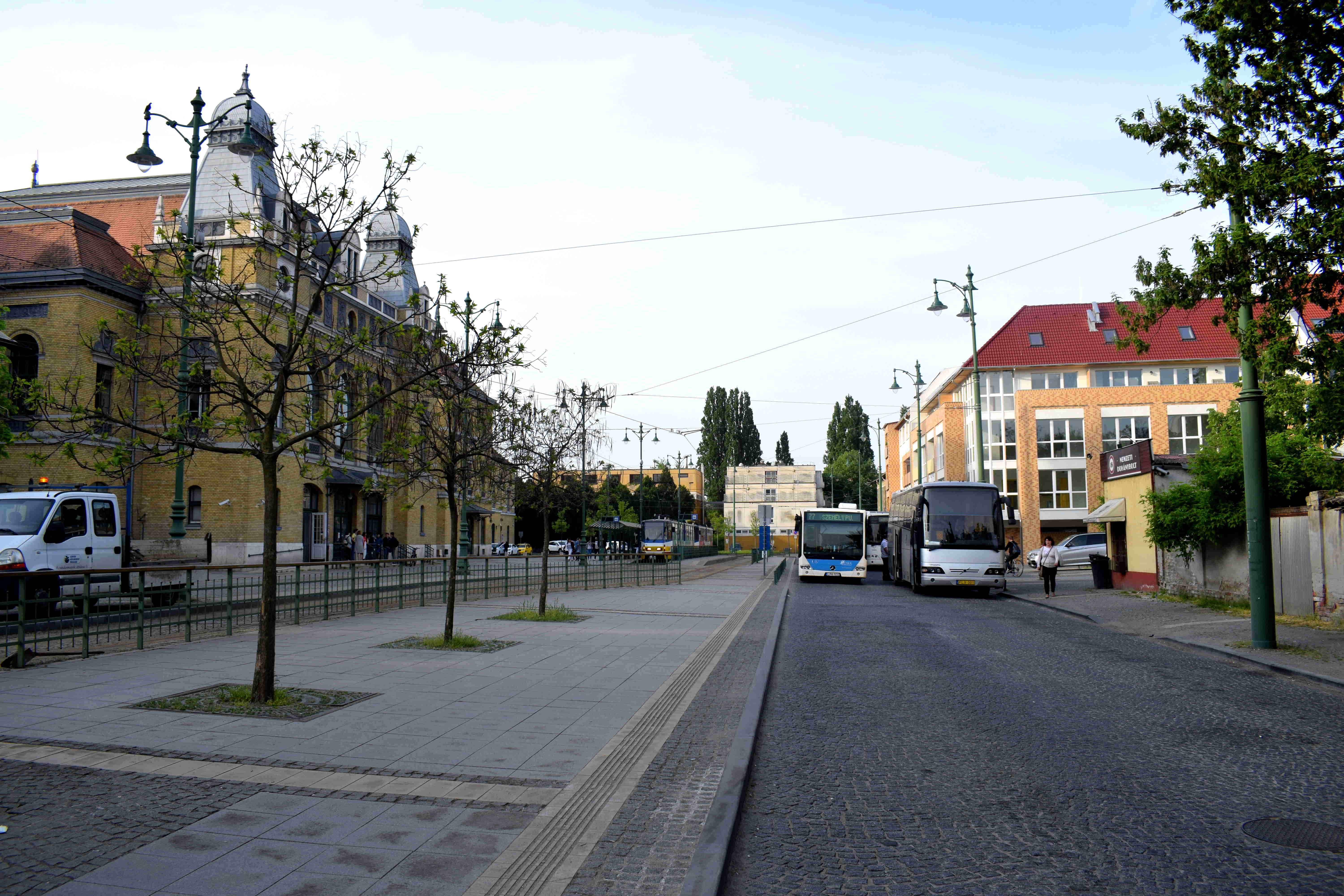 When a tourist arrives into a city by train, the most important impression a city can leave on its visitor are those first few steps outside of the train station.
When a tourist arrives into a city by train, the most important impression a city can leave on its visitor are those first few steps outside of the train station.
If they see cars, traffic, a parking lot, chaos, then that’s likely how the city will be.
But if a tourist steps out and sees public transport, cycle lanes, walking paths, parks, trees, trams, then the impression is completely different.
In this case, Szeged did everything right. Public transport and pedestrians have priority, no cars were in sight.
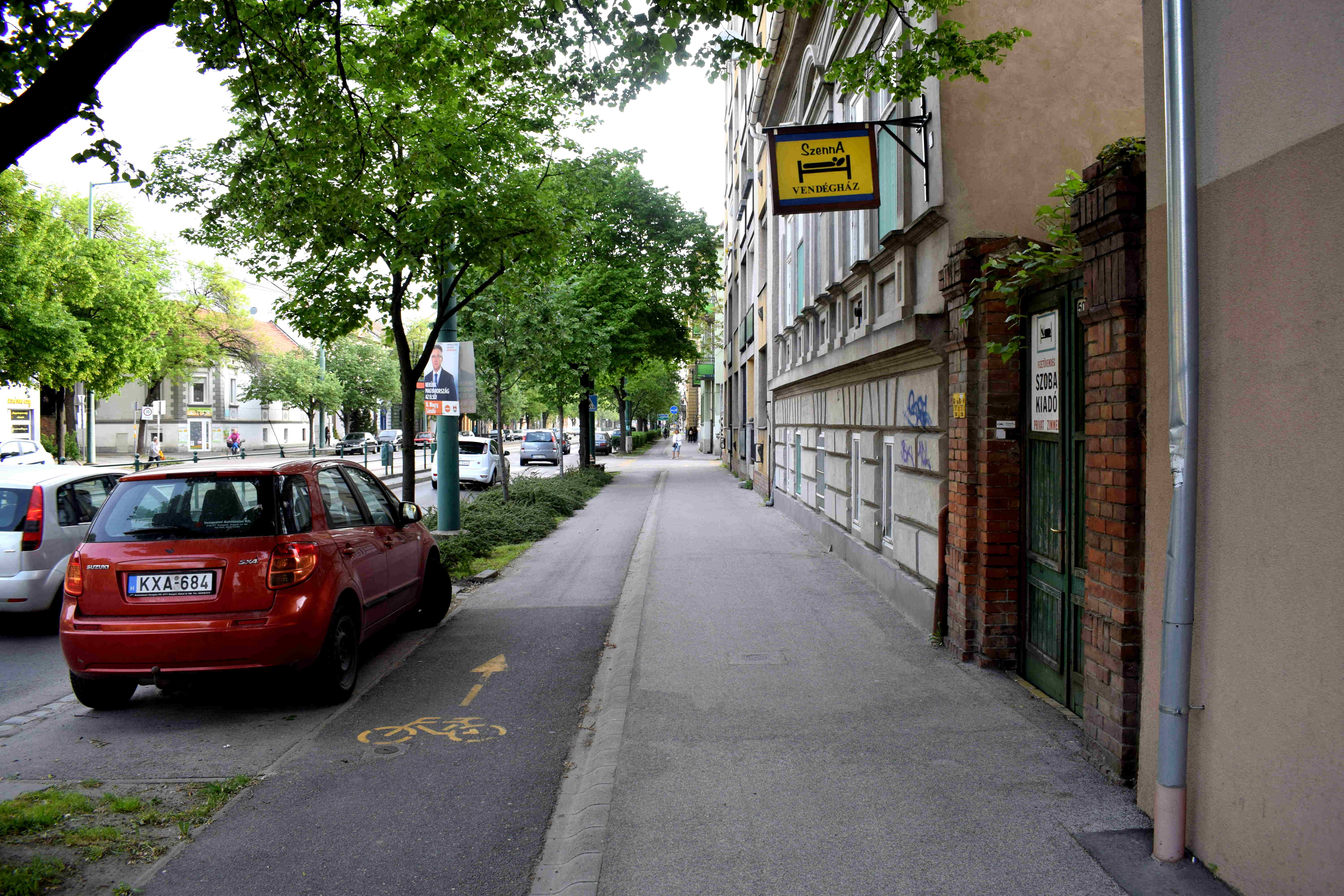 A few steps further from the train station I saw the third thing that made me love this city. Bike lanes. And bike lanes that didn’t involve just painting a few lines on a sidewalk.
A few steps further from the train station I saw the third thing that made me love this city. Bike lanes. And bike lanes that didn’t involve just painting a few lines on a sidewalk.
These were bike lanes separated from the street, clearly marked differently from the sidewalk which is reserved for pedestrians. And clear signage.
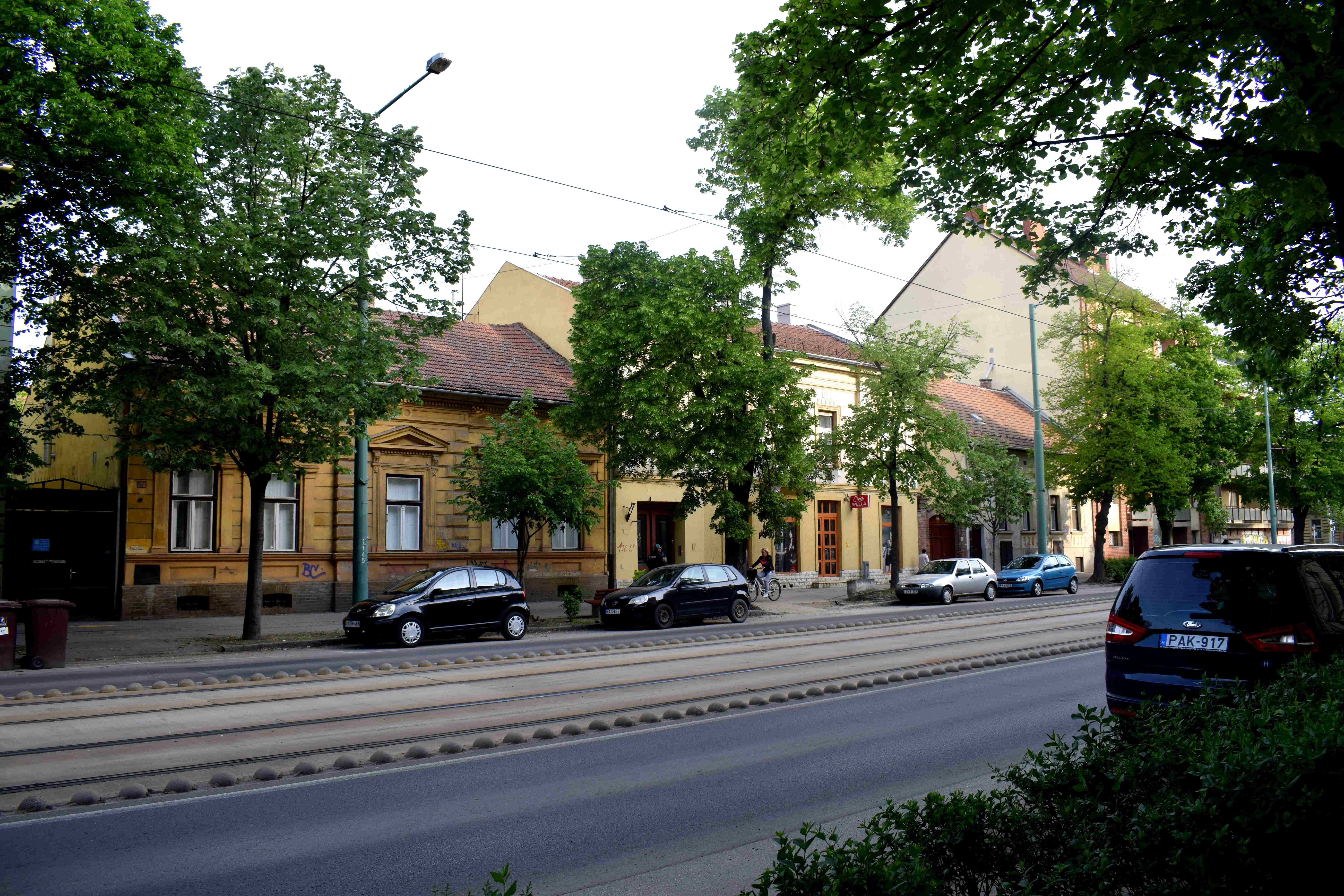 And then we get to the fourth thing I loved about this city. Old buildings! And really beautiful ones too.
And then we get to the fourth thing I loved about this city. Old buildings! And really beautiful ones too.
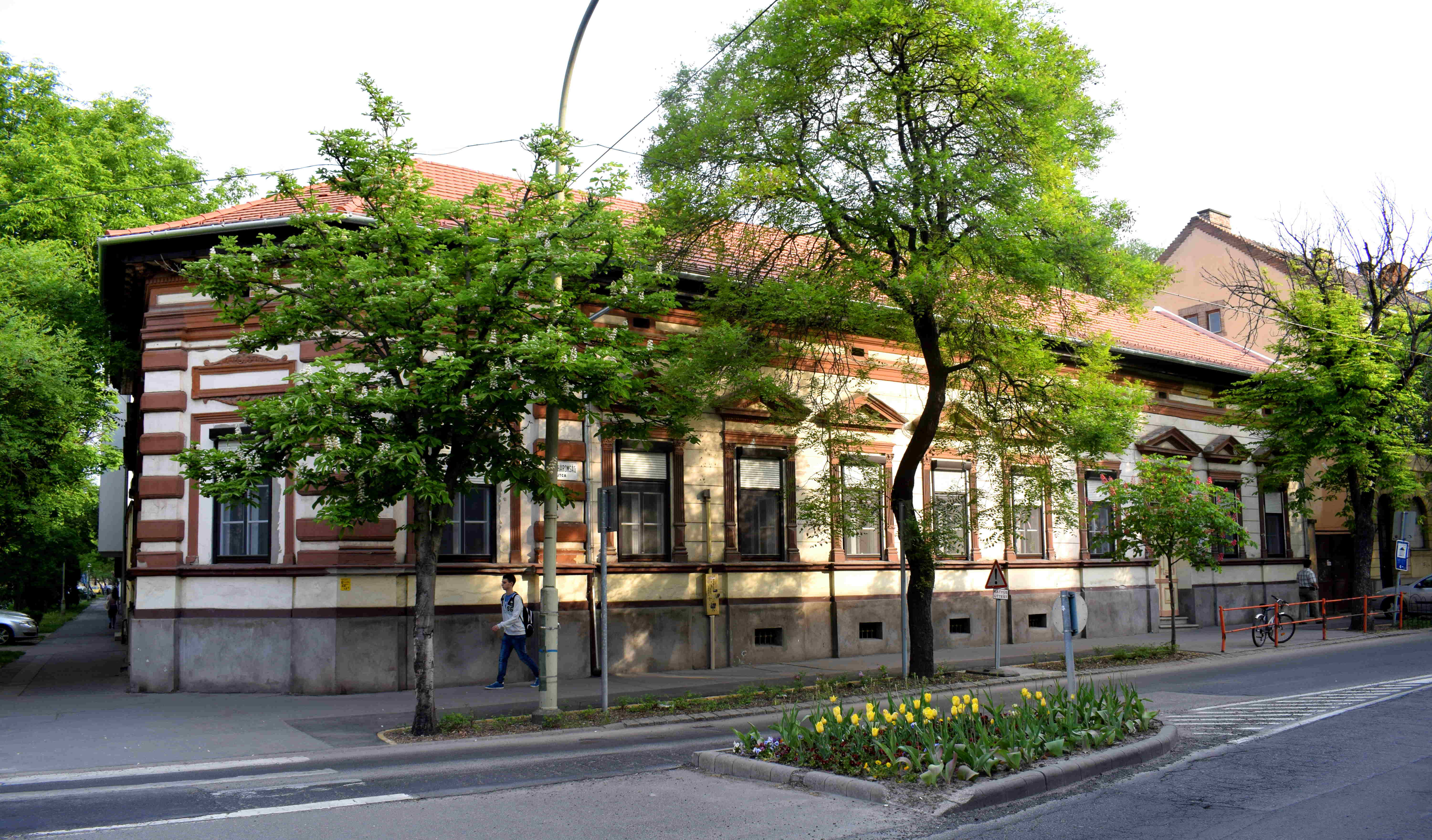 The whole city was awash with old, one-story houses from the 19th century.
The whole city was awash with old, one-story houses from the 19th century.
In the United States, these kind of buildings would have been torn down long ago. The same happens to many other buildings in Russia and Eastern Europe. Developers come in and destroy everything that is good about a city.
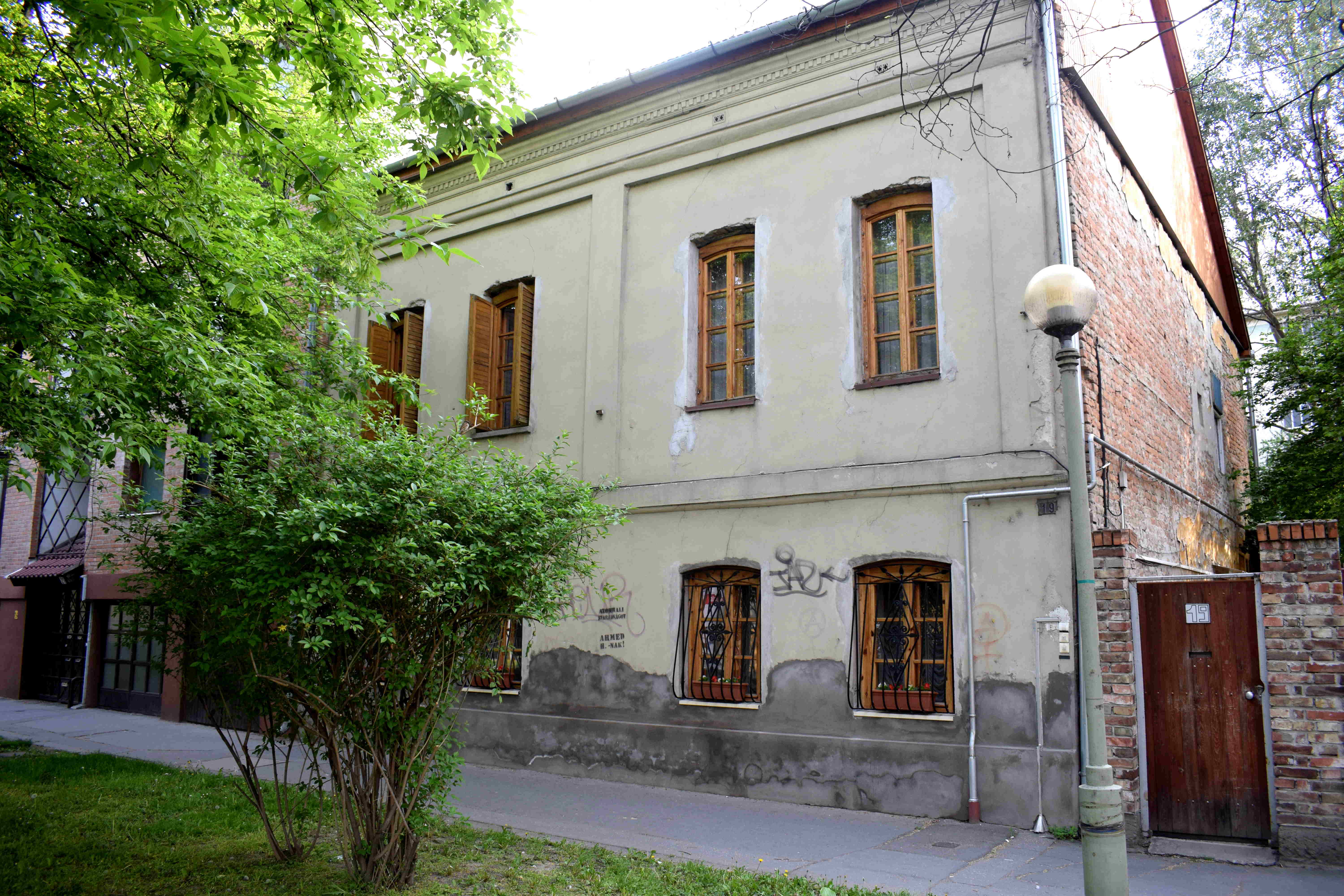 The fifth thing that was great about Szeged were the old windows and door frames on the buildings. Often owners of houses assume that they can just replace windows with modern ones because its their property. In this way, they destroy the historic look of the building. Here in Szeged many of the buildings still had their old windows.
The fifth thing that was great about Szeged were the old windows and door frames on the buildings. Often owners of houses assume that they can just replace windows with modern ones because its their property. In this way, they destroy the historic look of the building. Here in Szeged many of the buildings still had their old windows.
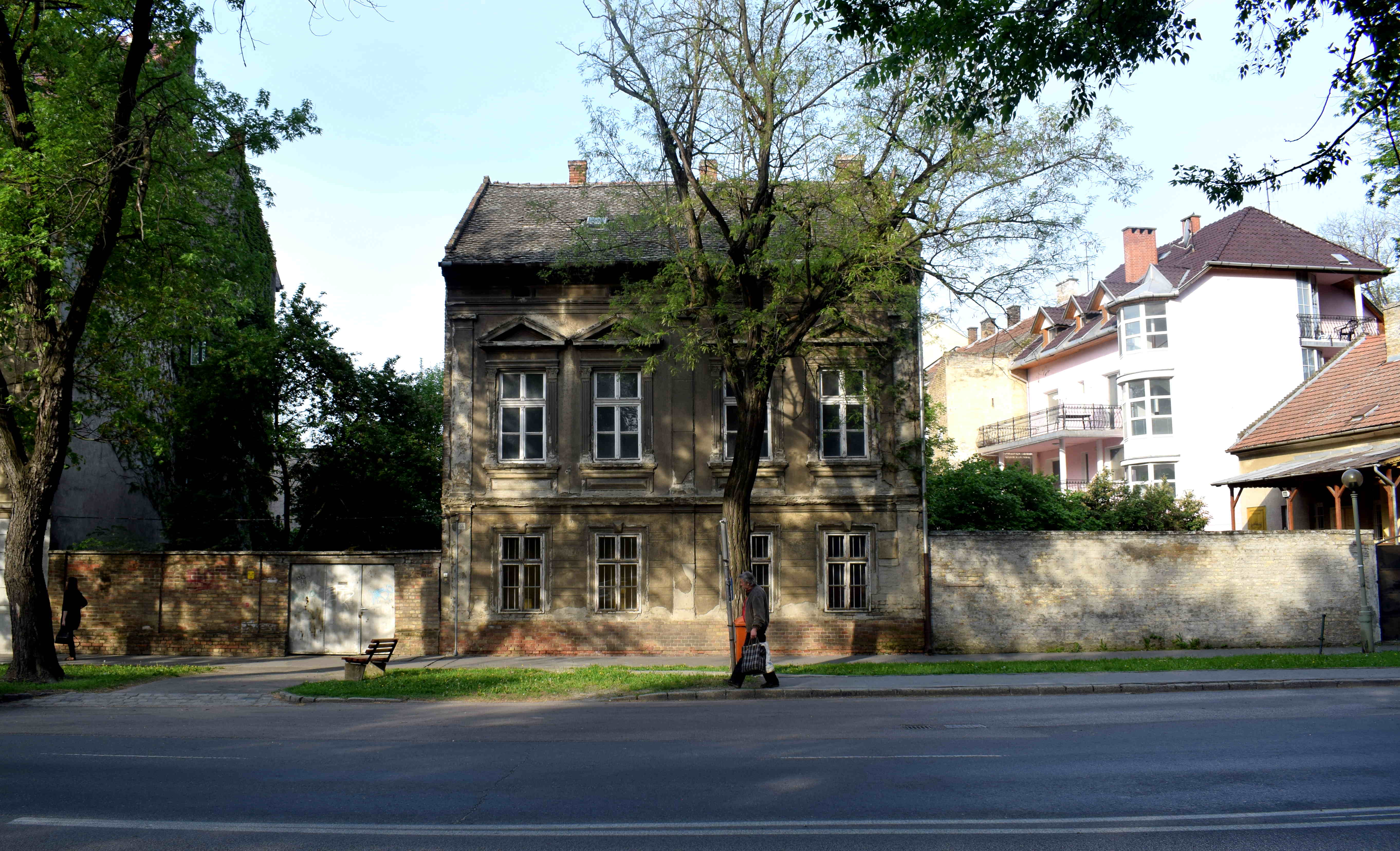 Could be my favorite building in the city.
Could be my favorite building in the city.
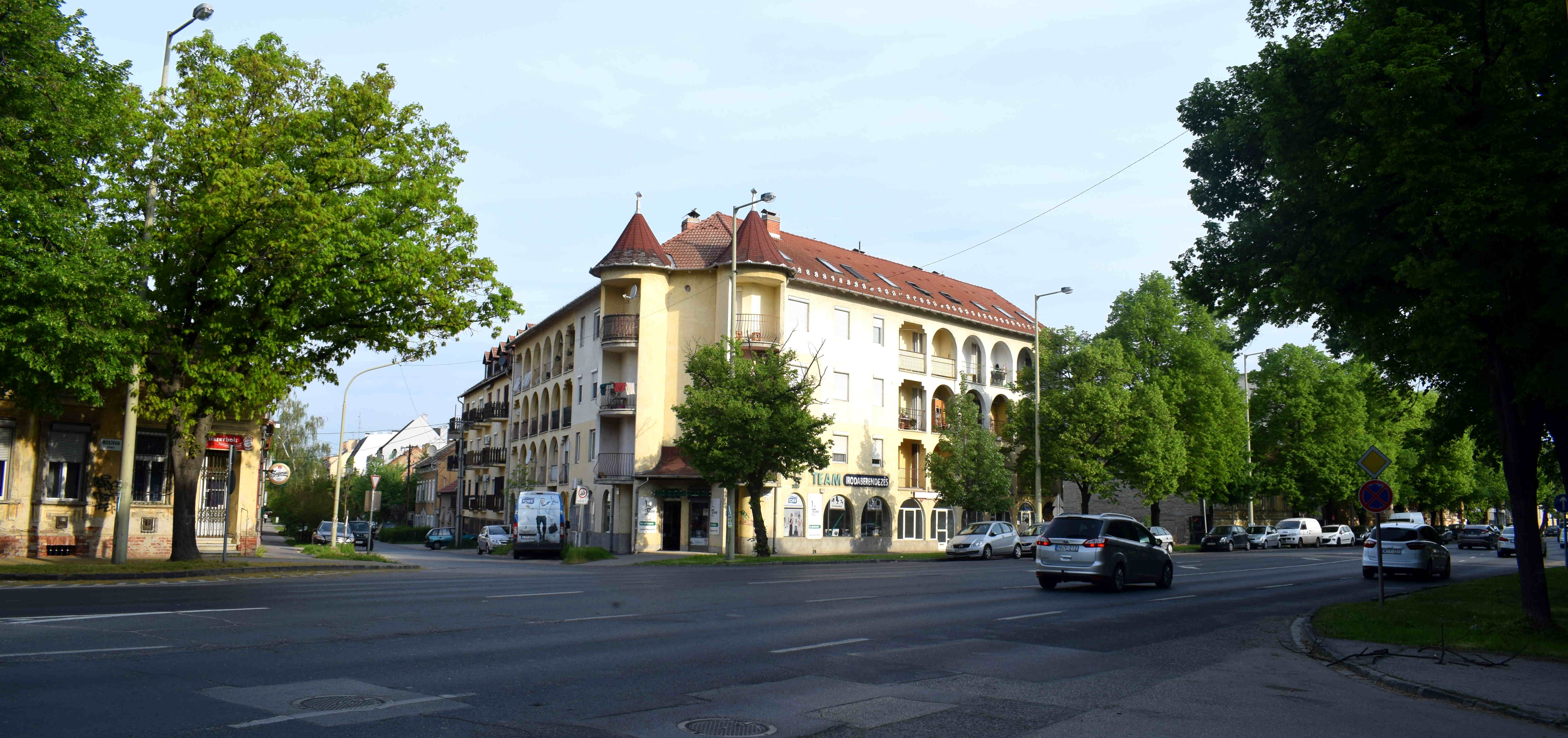 Another nice building across the street.
Another nice building across the street.
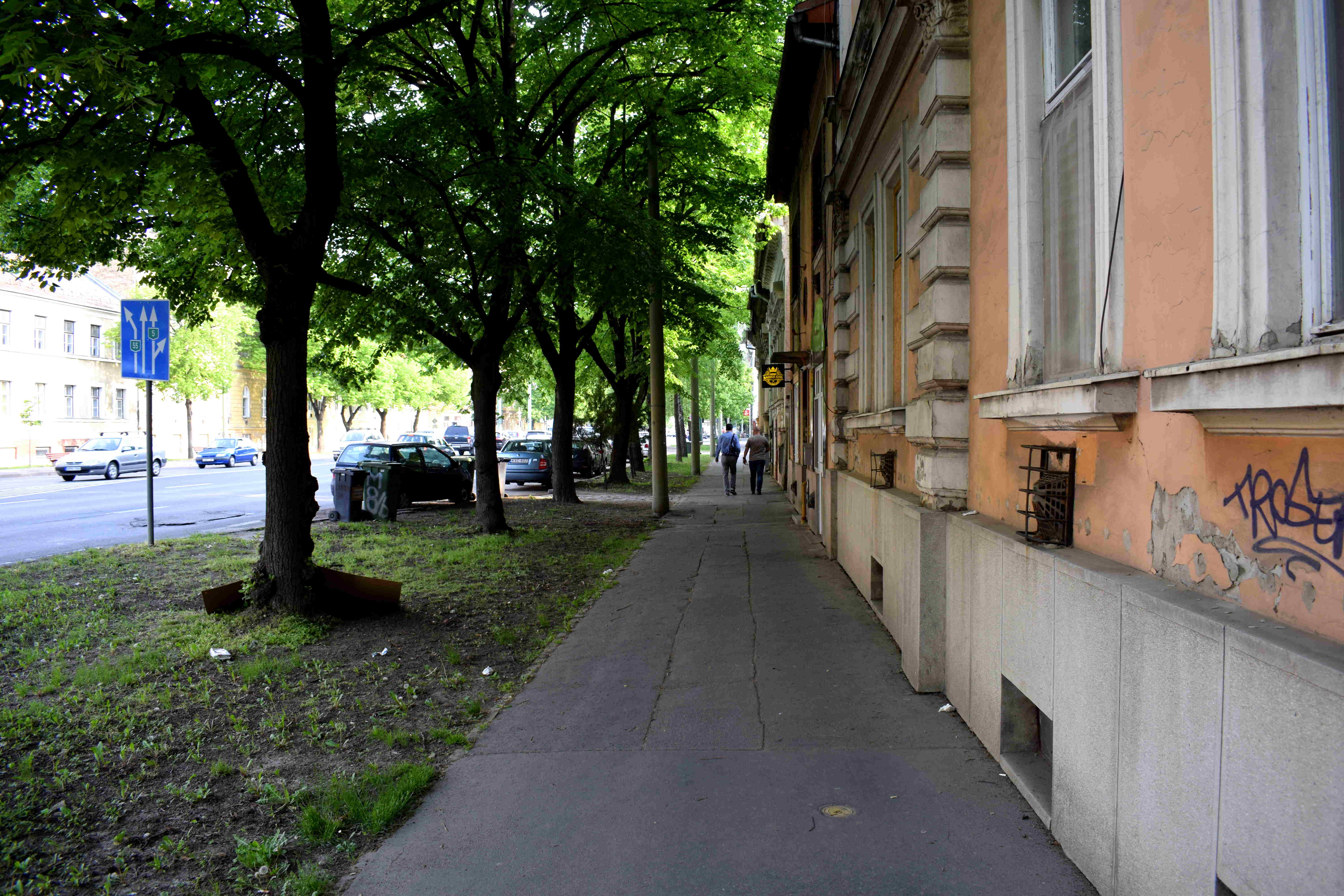 Szeged had its fair share of trees and greenery. While it was nothing compared to Subotica, it’s Serbian sister city just across the border, Szeged was still full of trees.
Szeged had its fair share of trees and greenery. While it was nothing compared to Subotica, it’s Serbian sister city just across the border, Szeged was still full of trees.
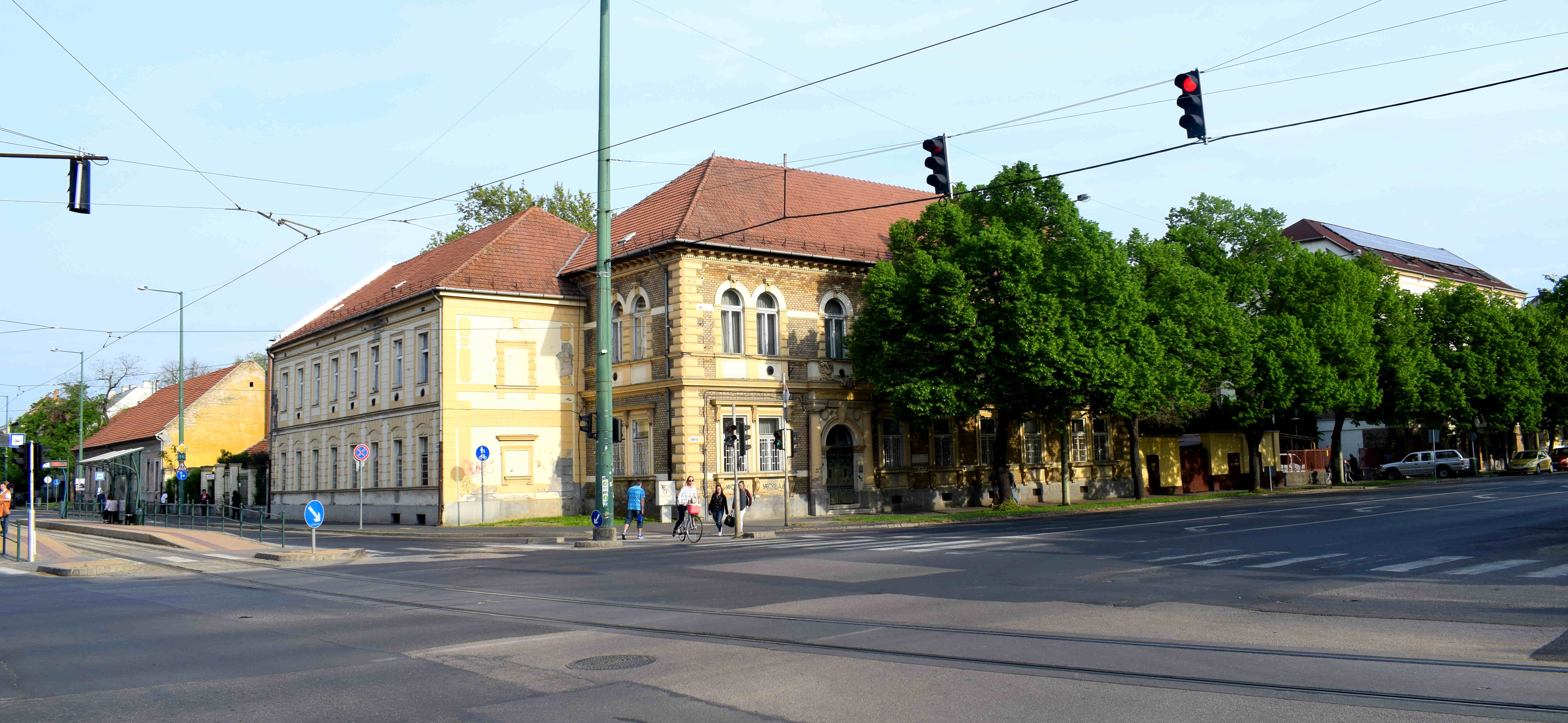 I think we can agree that red-tiled rooftops make any building look ten times better.
I think we can agree that red-tiled rooftops make any building look ten times better.
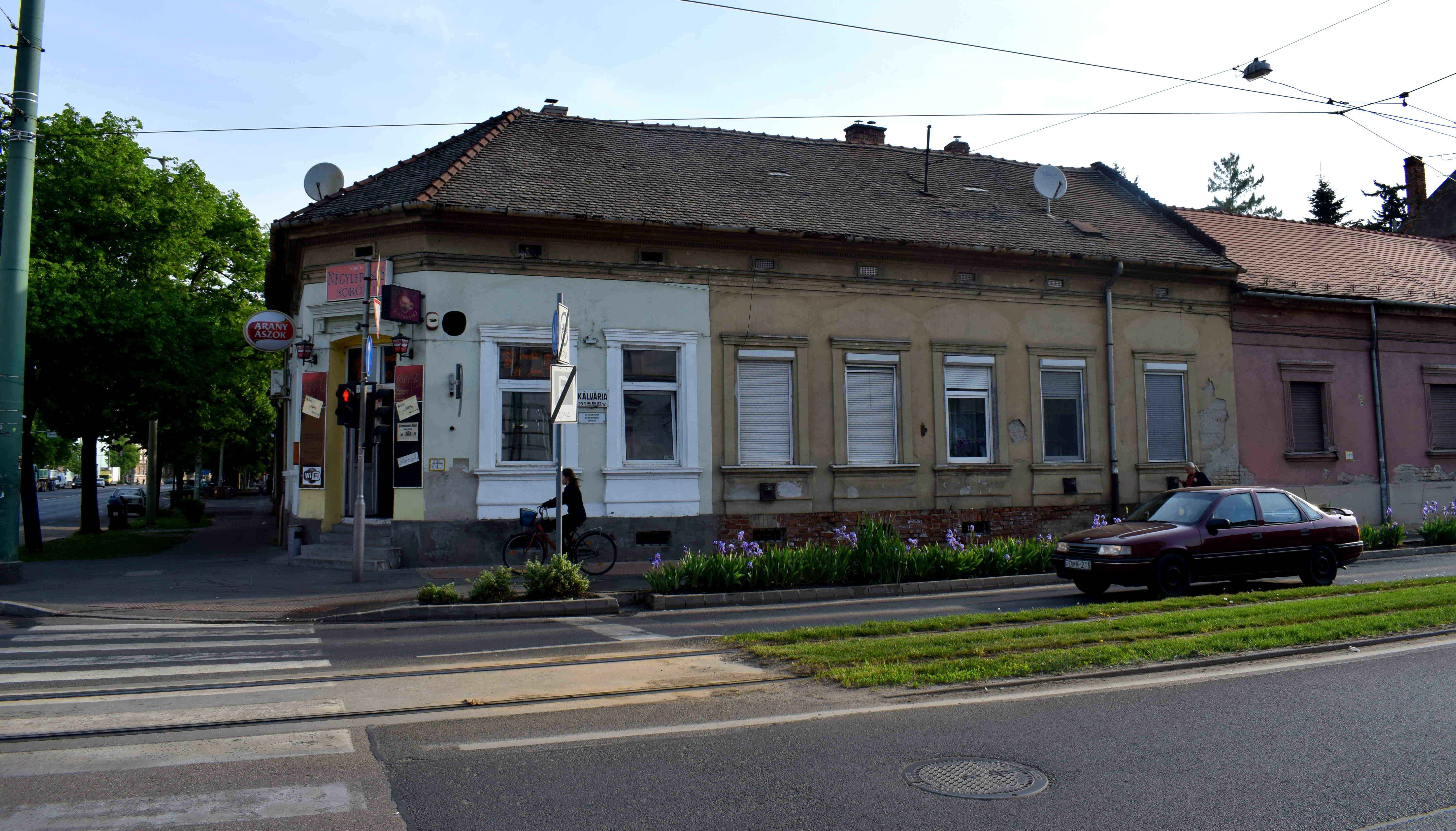 Our first cyclist. It was early in the morning and not many people were out yet.
Our first cyclist. It was early in the morning and not many people were out yet.
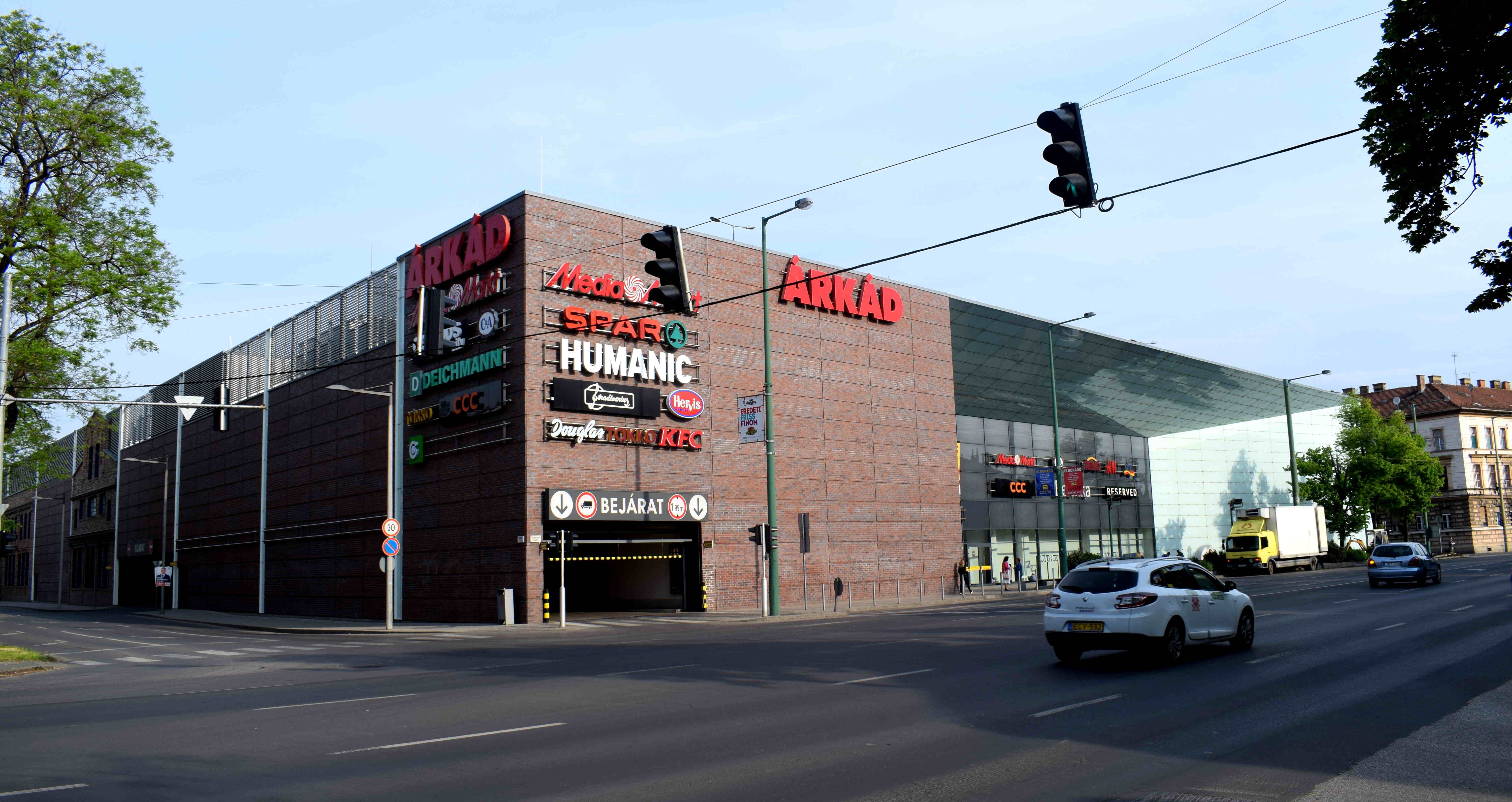 Of course, not everything is perfect in Szeged. Here was the first shopping mall in the city I saw. And what a coincidence, the ugliest building in Szeged happens to be its newest.
Of course, not everything is perfect in Szeged. Here was the first shopping mall in the city I saw. And what a coincidence, the ugliest building in Szeged happens to be its newest.
Such development should be banned in most cities and restricted to areas of the periphery.
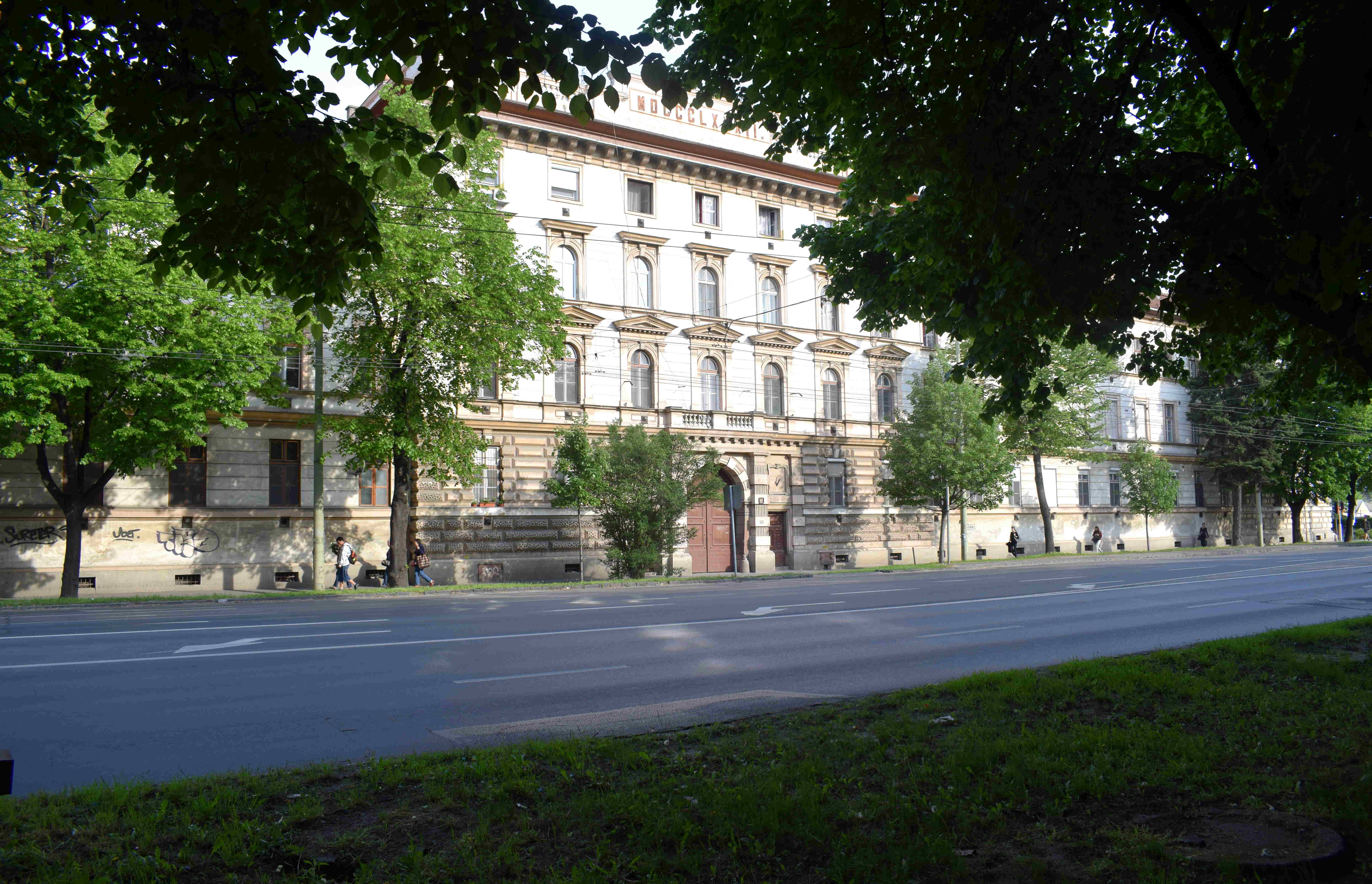 The buildings start looking more impressive the closer you get to the city center. Instead of one-two story buildings, you get these beautiful five-story buildings.
The buildings start looking more impressive the closer you get to the city center. Instead of one-two story buildings, you get these beautiful five-story buildings.
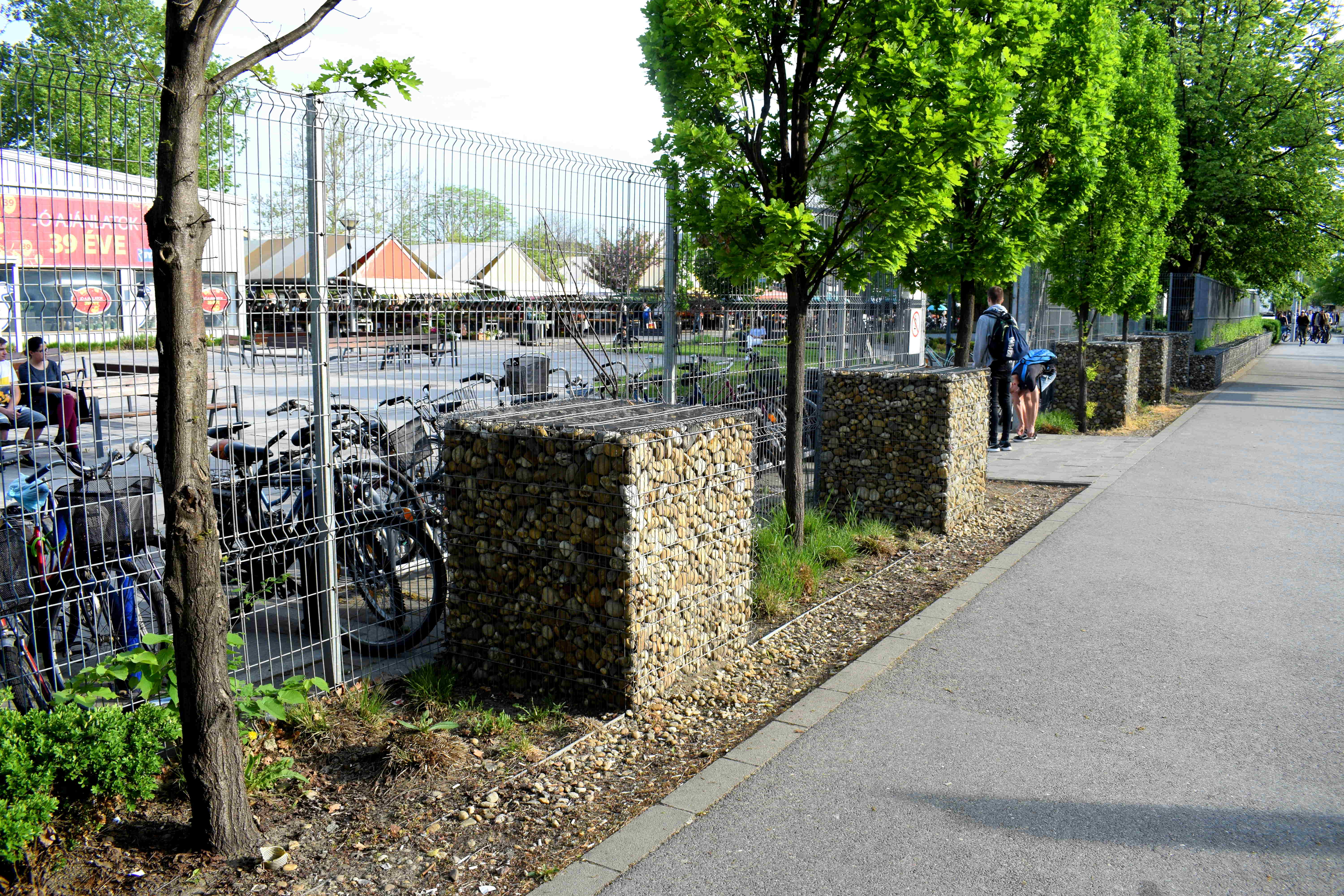 Not sure what the purpose of these rocks were, but I like the design.
Not sure what the purpose of these rocks were, but I like the design.
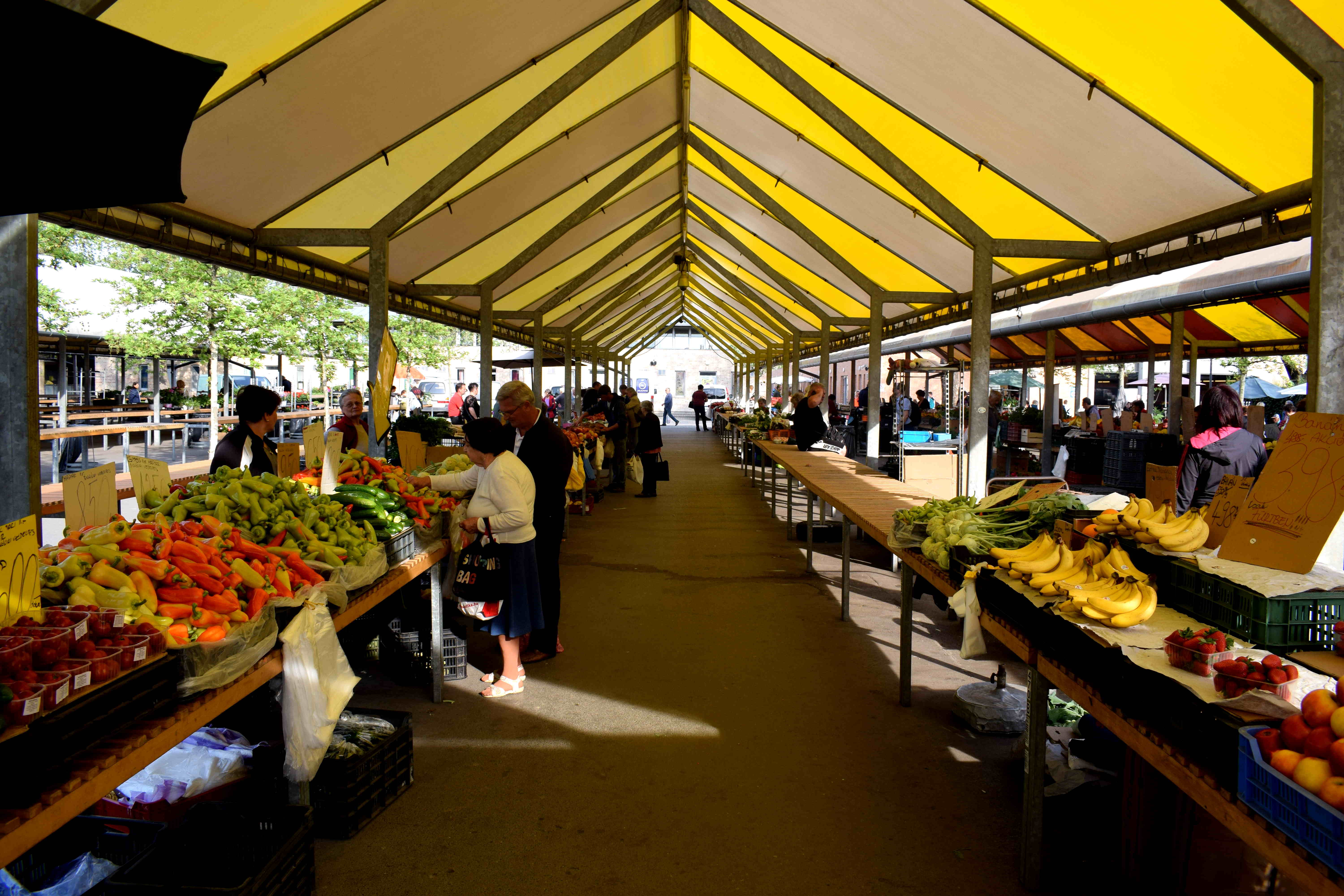 A food market in the center. Southern Hungary and Northern Serbia have some of the best agricultural land in Europe. Few people know that Serbia produces a third of the world’s raspberries, and Hungary is right up there with Serbia.
A food market in the center. Southern Hungary and Northern Serbia have some of the best agricultural land in Europe. Few people know that Serbia produces a third of the world’s raspberries, and Hungary is right up there with Serbia.
For anyone who wants cheap, healthy, naturally-produced vegetables and fruits, visiting this part of Europe is a must.
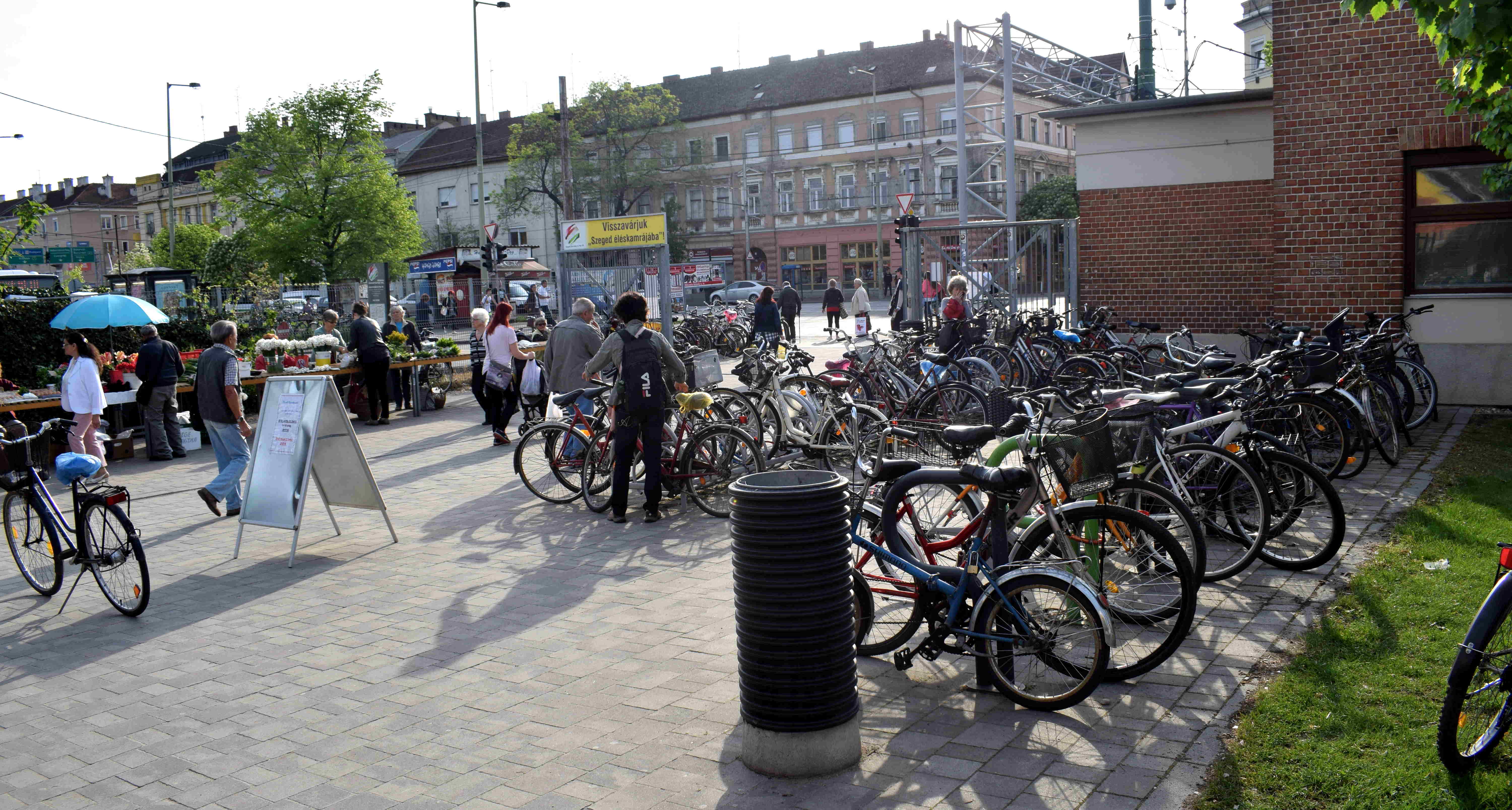 The more bikes I saw, the more I fell in love with Szeged. They were everywhere.
The more bikes I saw, the more I fell in love with Szeged. They were everywhere.
For a city the size of Szeged, there really is no need for any other type of transport.
The terrain is flat. The population is 160,000, which isn’t too big.
Bikes are the cheapest, healthiest and fastest way to get around. People obviously realize that here.
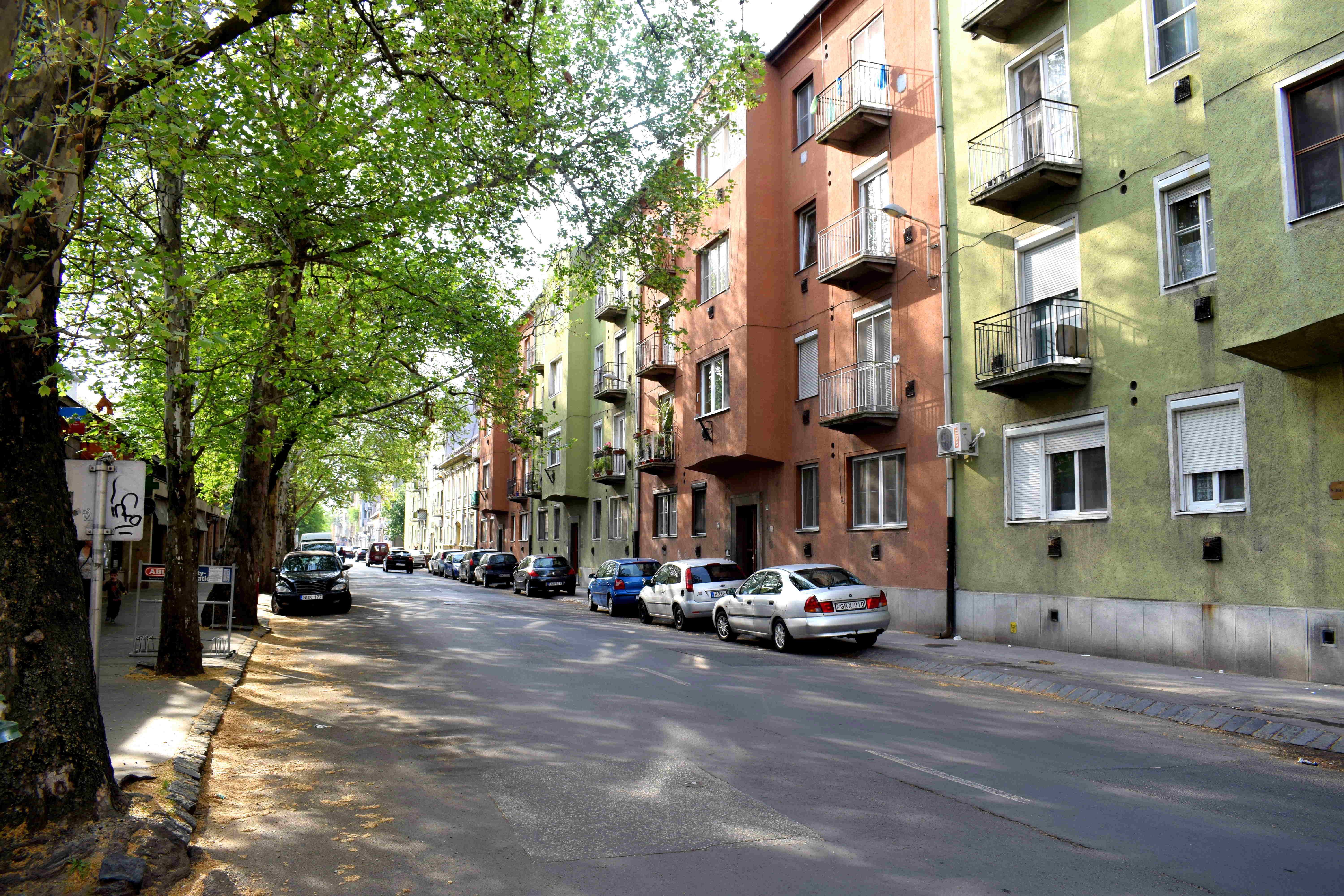 Let’s talk balconies. In Szeged you rarely see balconies glassed over and closed off, as is the case in a lot of Russian cities.
Let’s talk balconies. In Szeged you rarely see balconies glassed over and closed off, as is the case in a lot of Russian cities.
When I was living in Russia, I heard all types of arguments as to why it was necessary to glass over your balconies.
The weather is too cold.
The apartments are too small.
Where are you going to store your stuff?
All these arguments fall apart as soon as you step foot into any reasonably organized European city.
Balconies here are used the way balconies are supposed to be.
They are a place to relax, breathe some fresh air, read a book or drink some coffee.
And at the end of the day, they just look good.
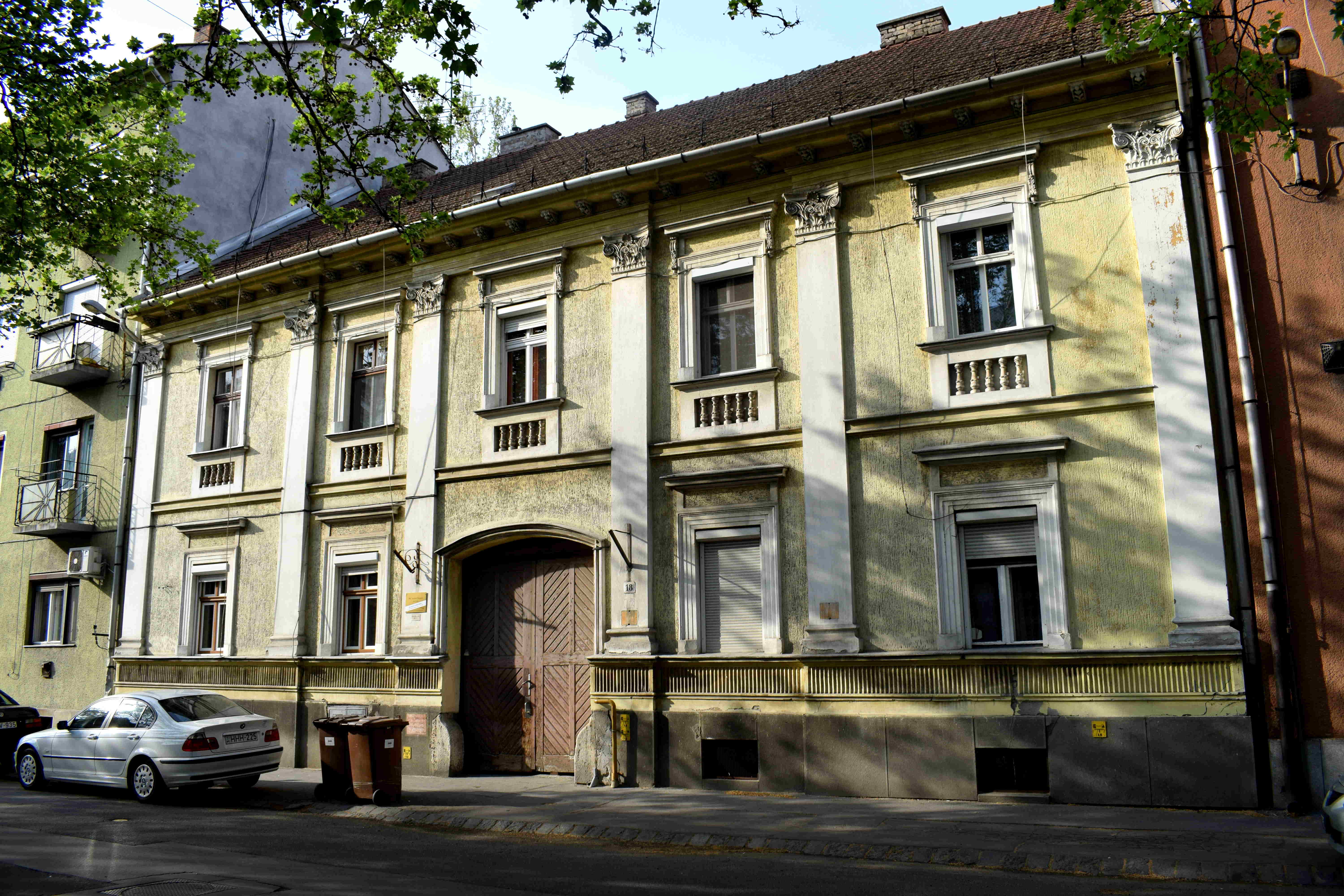 More beauties. These small, two-story buildings are well-maintained and should be preserved at all costs.
More beauties. These small, two-story buildings are well-maintained and should be preserved at all costs.
I would even argue the EU should institute preservation of historical architecture as a requirement of all its members. Each member state should commit to preserving the legacy of their cities, and those that do not should be sanctioned.
Developers should be banned from touching any building that was built before WWII, and many after WWII as well.
In this way, we can be sure these buildings will stand for another 100 years and not be destroyed by greedy developers.
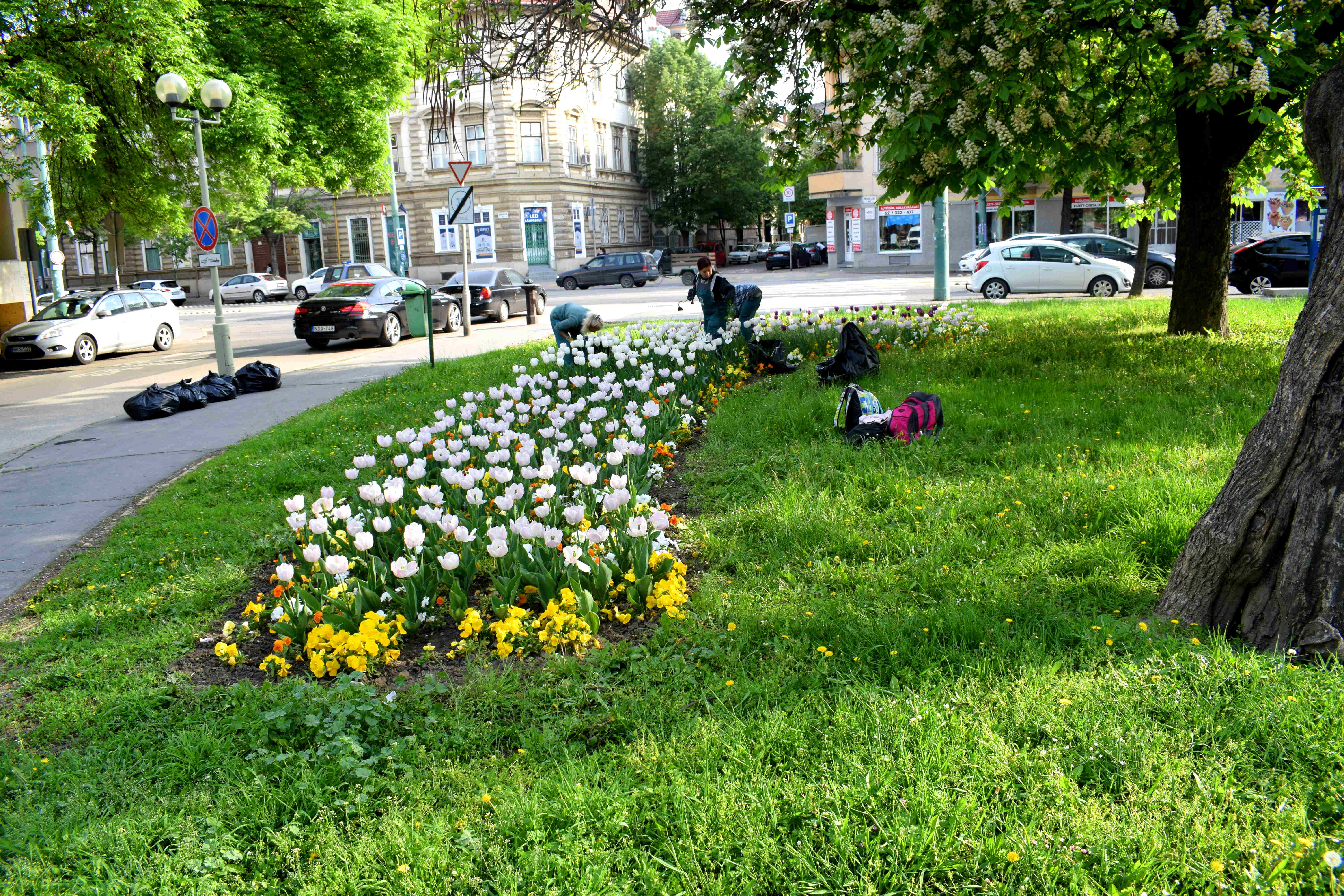 Hungary’s favorable climate means trees and flowers are already in full bloom in late April.
Hungary’s favorable climate means trees and flowers are already in full bloom in late April.
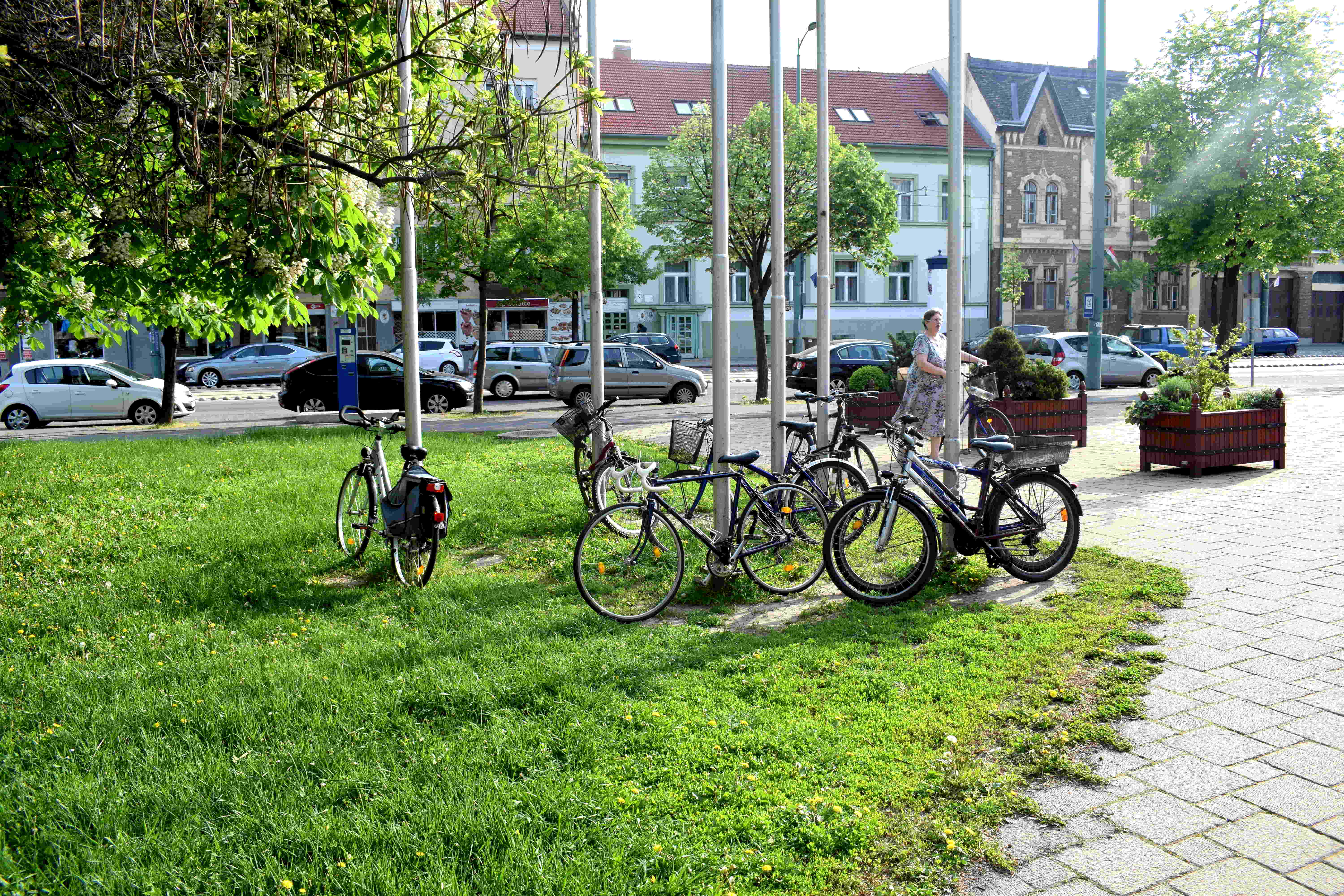 More bikes.
More bikes.
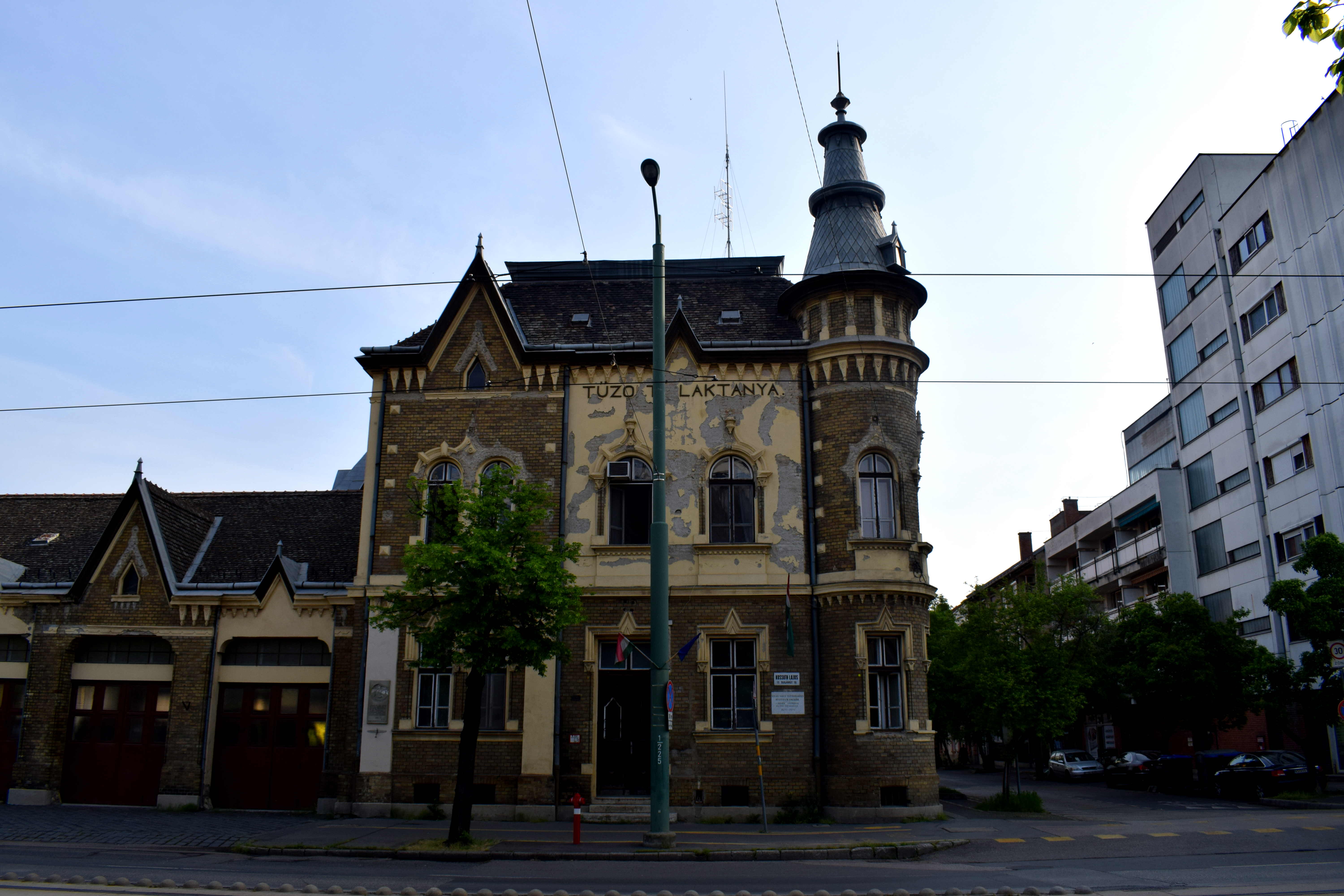 This area of Hungary is famous for its brutalist architecture, just like Subotica on the other side of the border in Serbia. Here’s a good example.
This area of Hungary is famous for its brutalist architecture, just like Subotica on the other side of the border in Serbia. Here’s a good example.
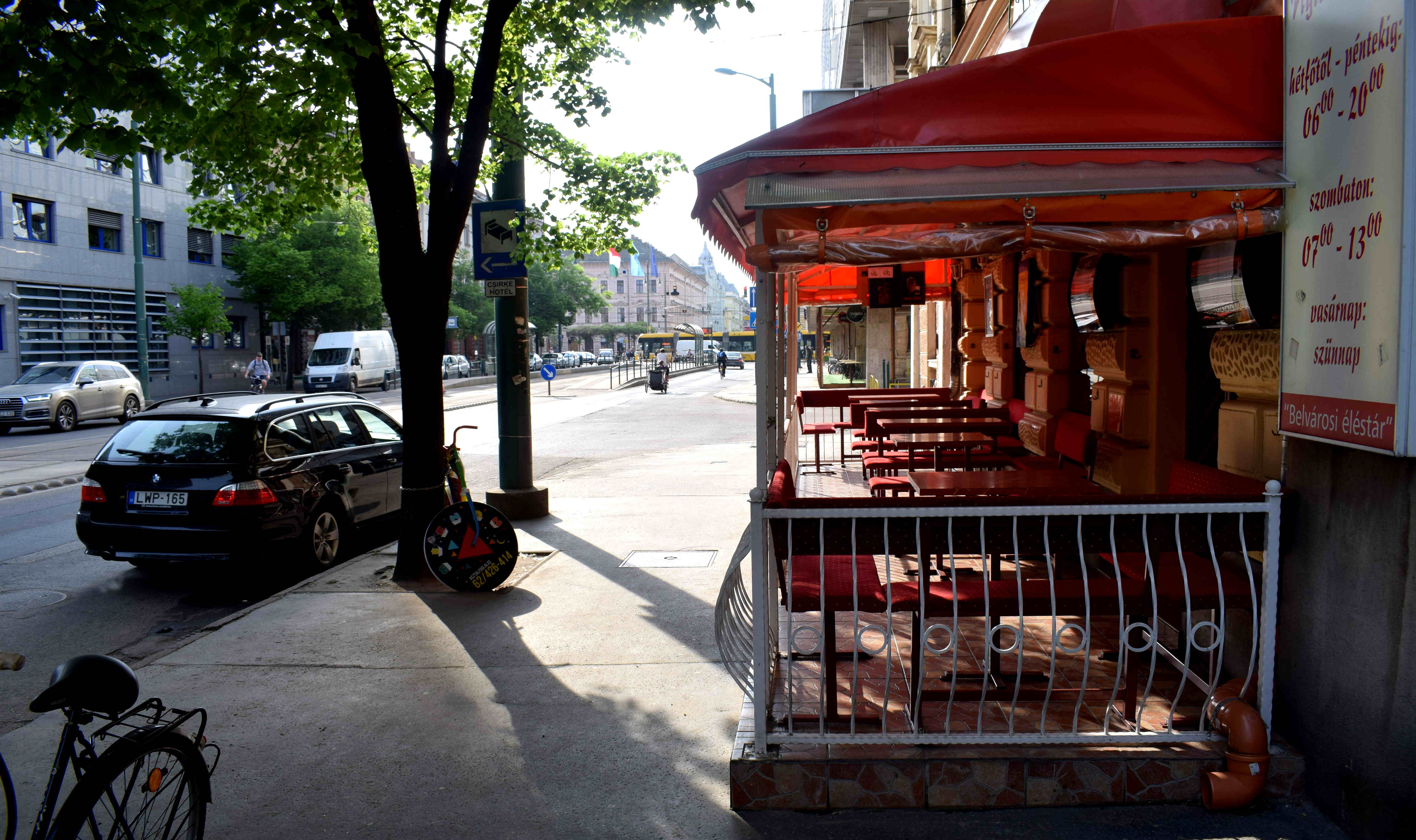 Lots of outdoor cafes and patios to eat at.
Lots of outdoor cafes and patios to eat at.
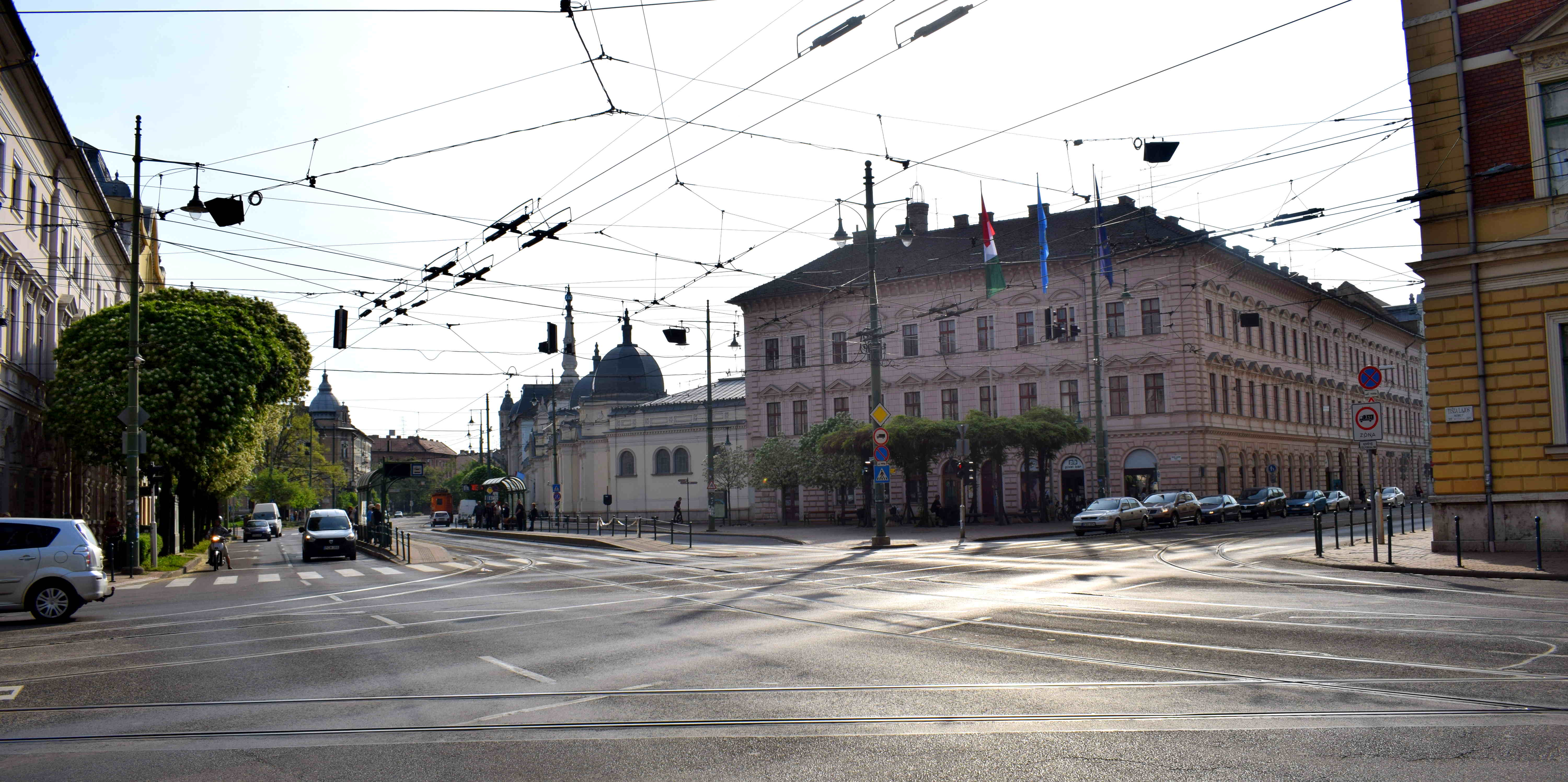 This was probably the widest intersection I saw in the city. Szeged clearly prioritized public transport, pedestrians and cyclists over cars.
This was probably the widest intersection I saw in the city. Szeged clearly prioritized public transport, pedestrians and cyclists over cars.
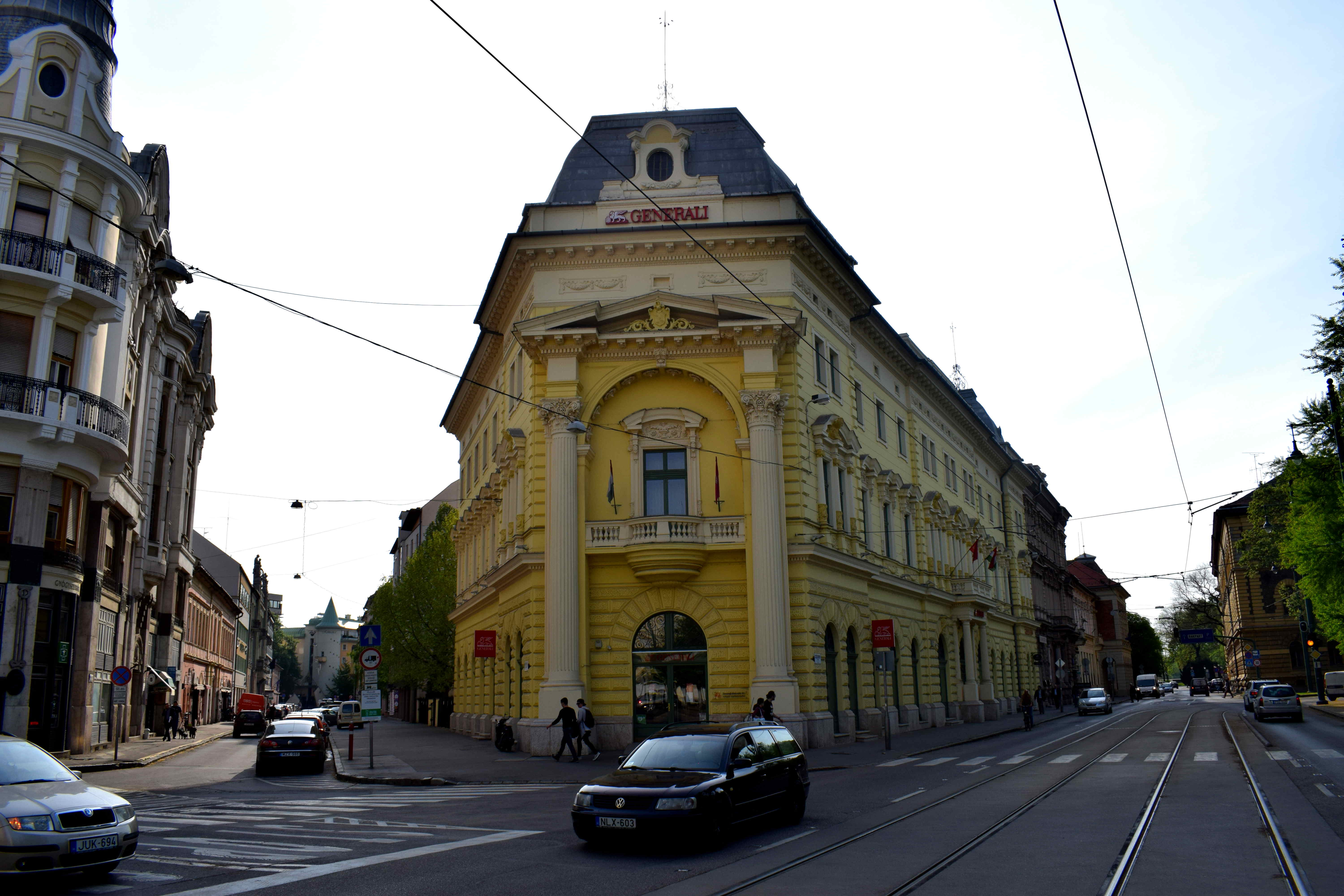 The center of Szeged is absolutely stunning. Beautifully preserved historic buildings are everywhere with no modern construction in sight.
The center of Szeged is absolutely stunning. Beautifully preserved historic buildings are everywhere with no modern construction in sight.
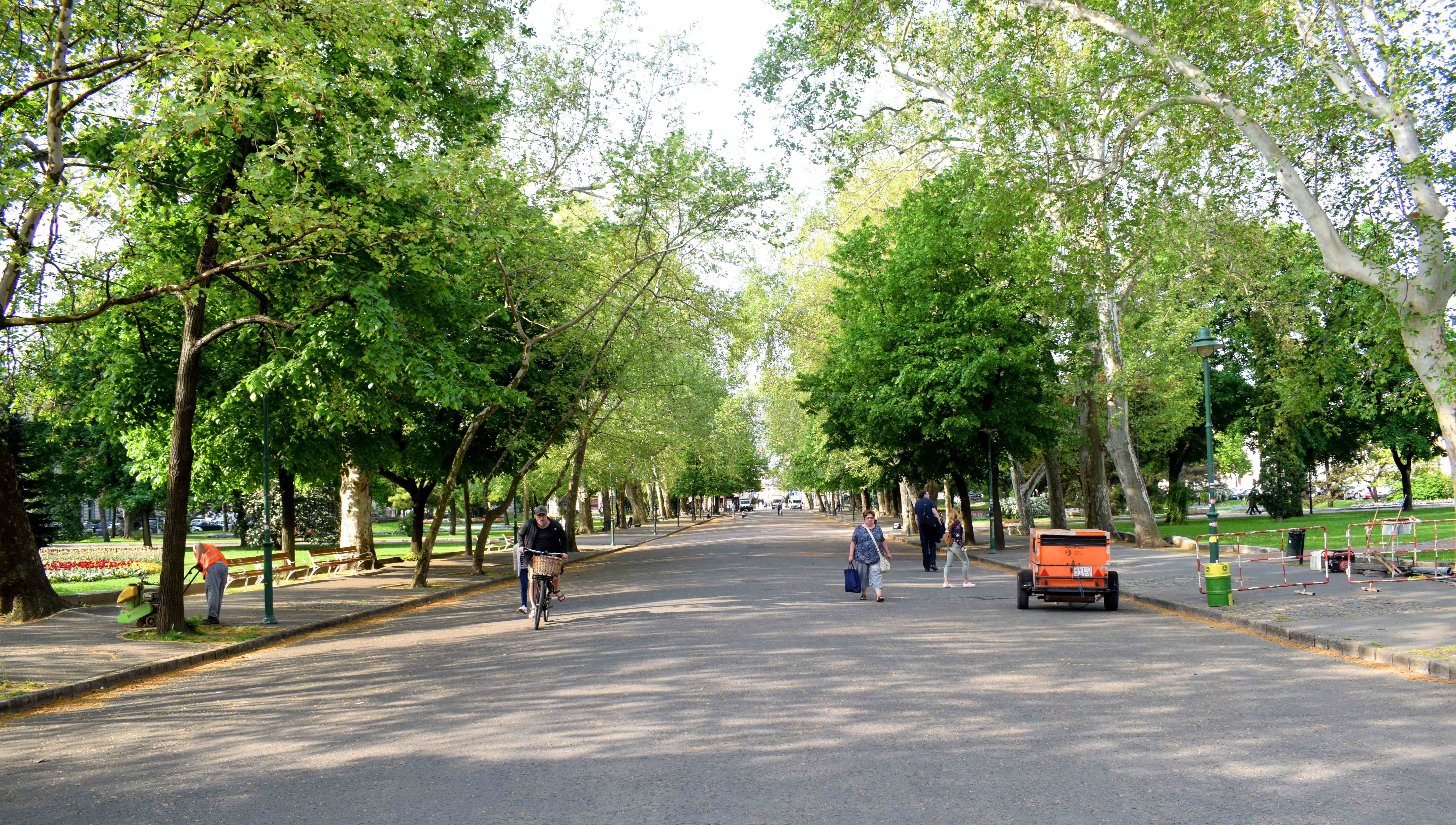 Near the center of the city is a huge park called Szechenyi Square where lots of people were walking and riding their bikes.
Near the center of the city is a huge park called Szechenyi Square where lots of people were walking and riding their bikes.
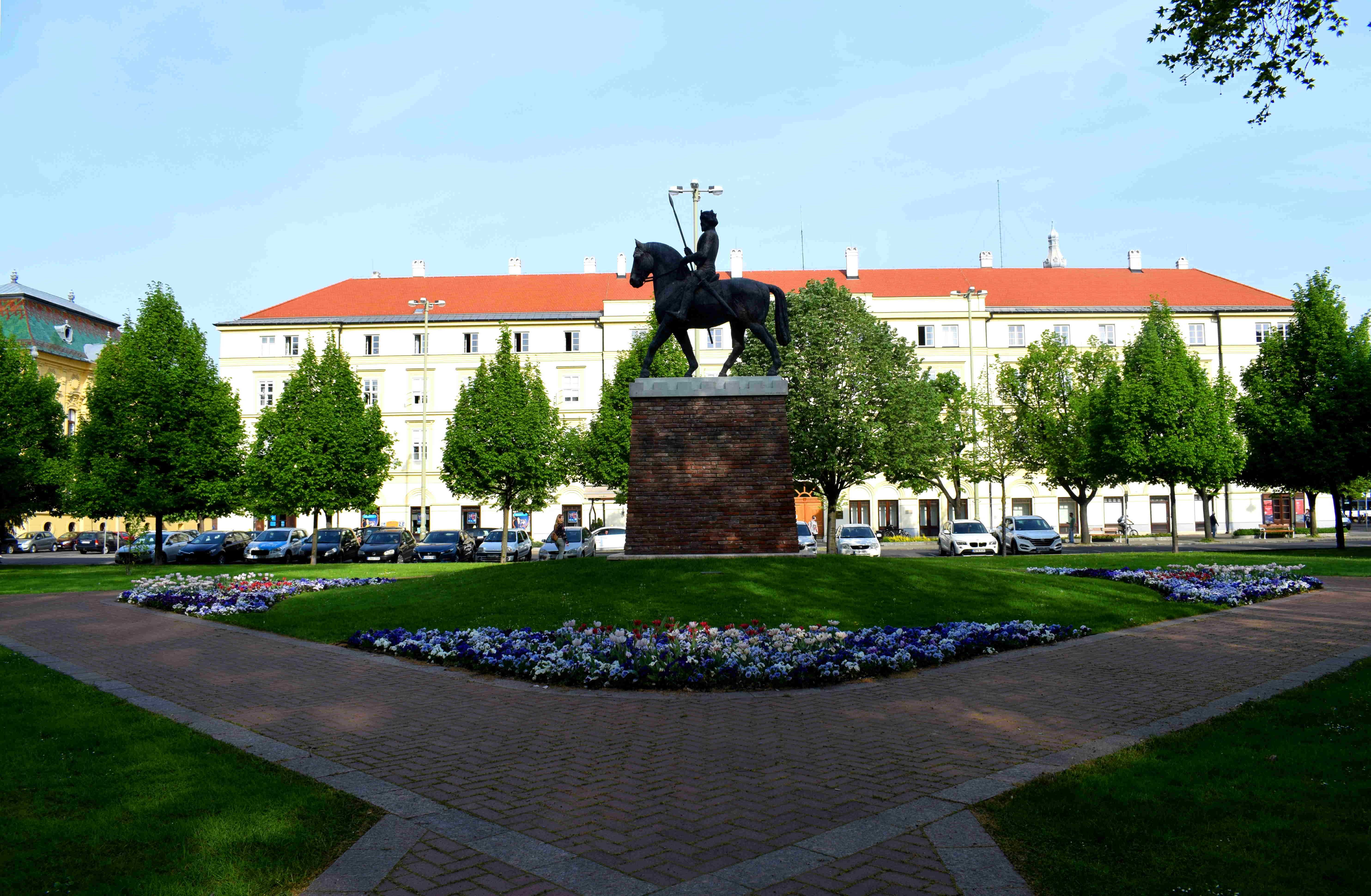 Sprinkled throughout the park are statues of the city’s former rulers.
Sprinkled throughout the park are statues of the city’s former rulers.
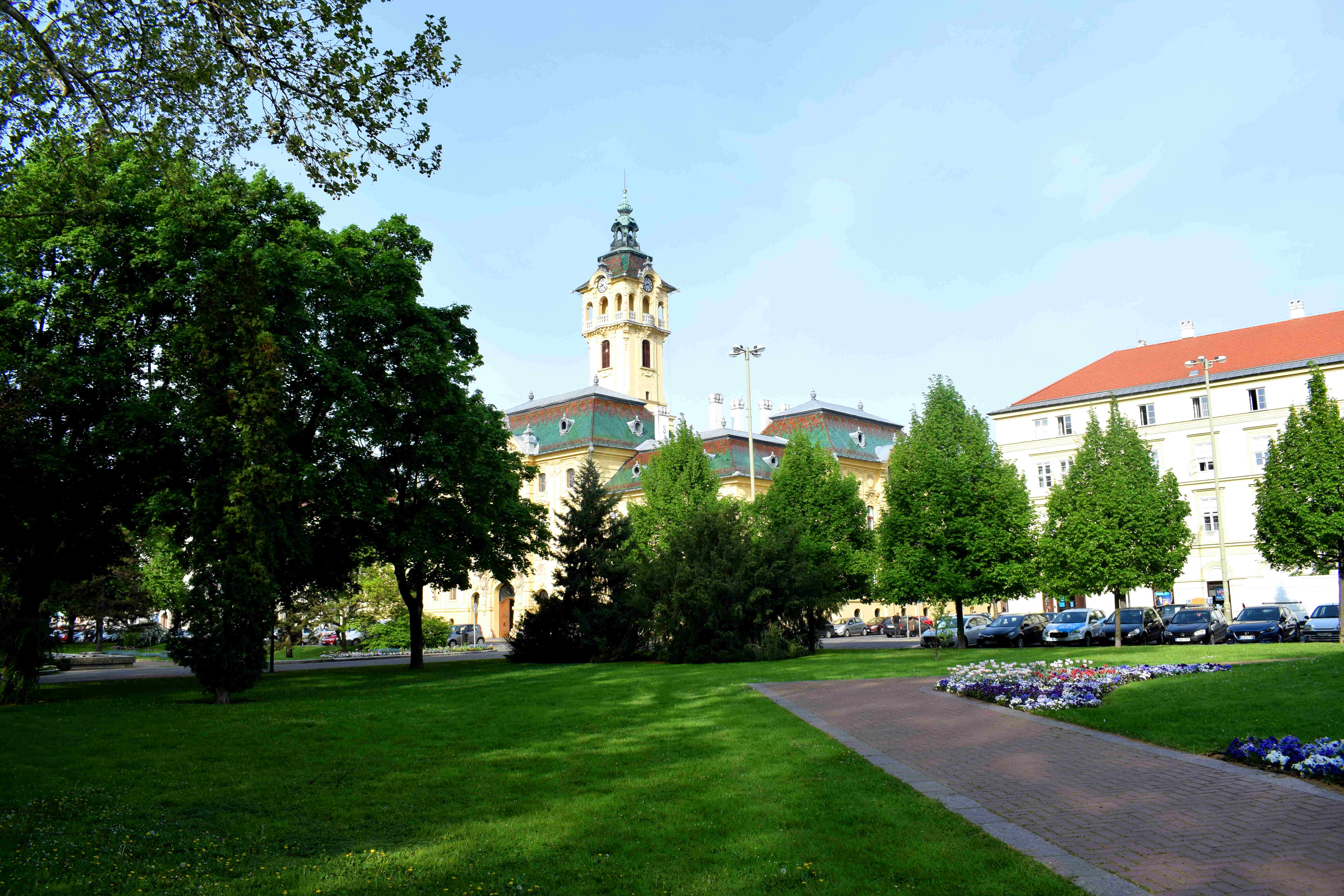 Szeged’s Town Hall is the yellow building in the distance. It was originally built in 1728, before being expanded in 1804 and then again in 1883. The building in its current form is from 1883.
Szeged’s Town Hall is the yellow building in the distance. It was originally built in 1728, before being expanded in 1804 and then again in 1883. The building in its current form is from 1883.
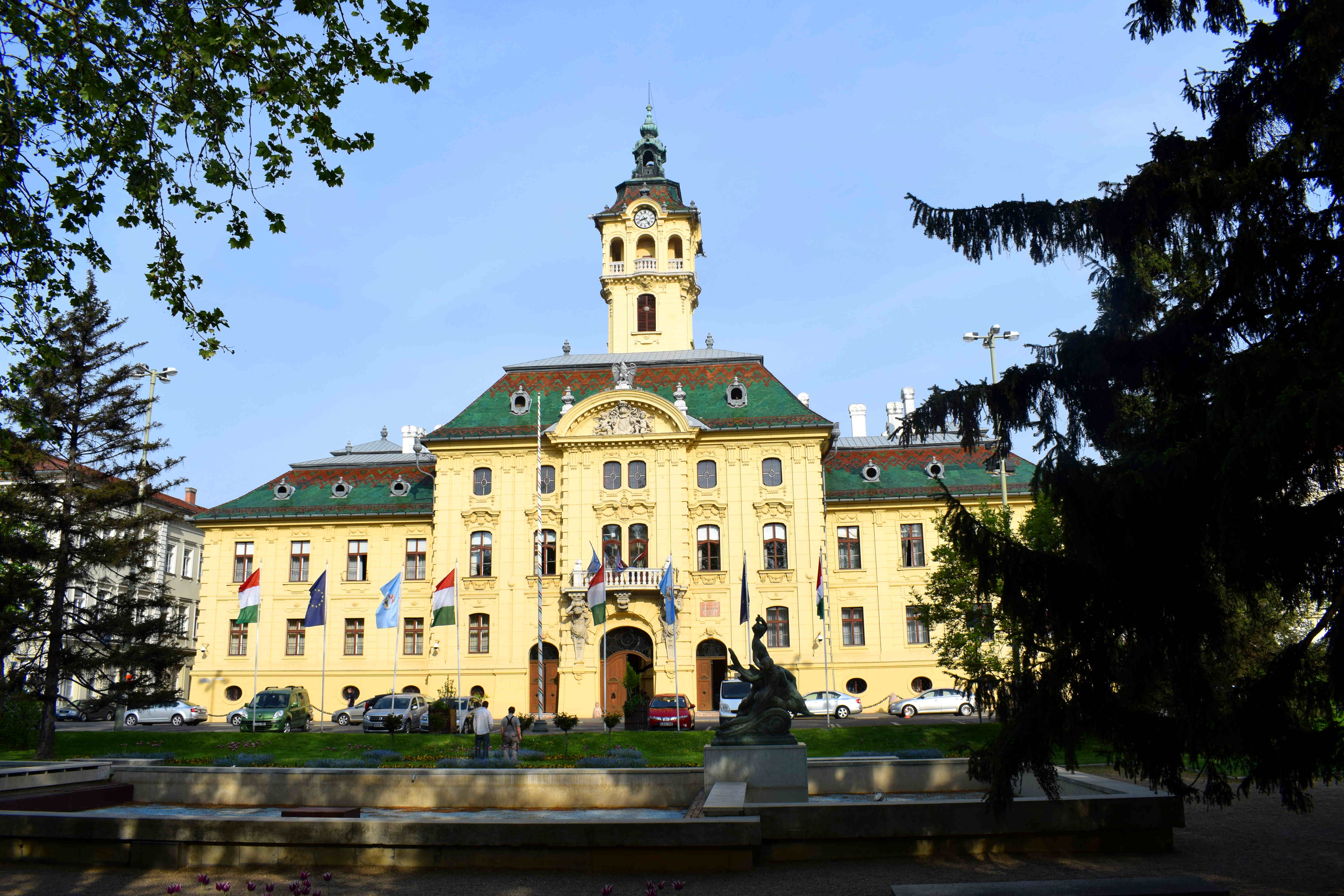 At one time, there was a castle in Szeged whose western walls were located right in this park where the town hall is.
At one time, there was a castle in Szeged whose western walls were located right in this park where the town hall is.
After the Turks conquered this area, the castle served as a fort for the new rulers. But in the 19th century when Hungary regained this territory, newer buildings began to be constructed, such as the Town Hall.
In 1879 a massive flood destroyed many buildings in the city. A decision was then taken to tear down the castle that had dominated the city for centuries. In their place this park was built.
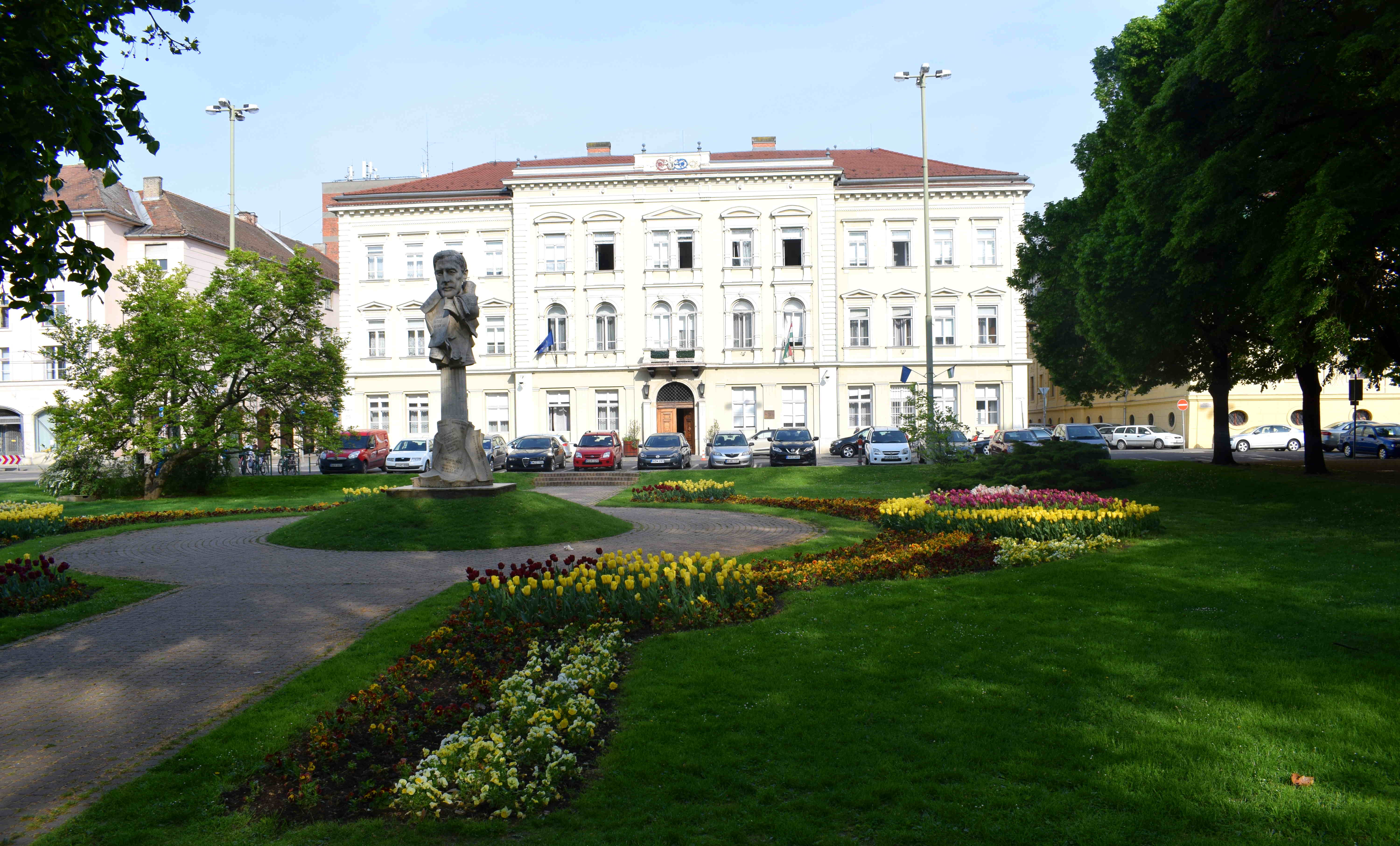 The Statue to Kuno Klebelsberg (1875-1932), a Hungarian politician who served as Minister of the Interior and Minister of Culture for the Kingdom of Hungary in the interwar period.
The Statue to Kuno Klebelsberg (1875-1932), a Hungarian politician who served as Minister of the Interior and Minister of Culture for the Kingdom of Hungary in the interwar period.
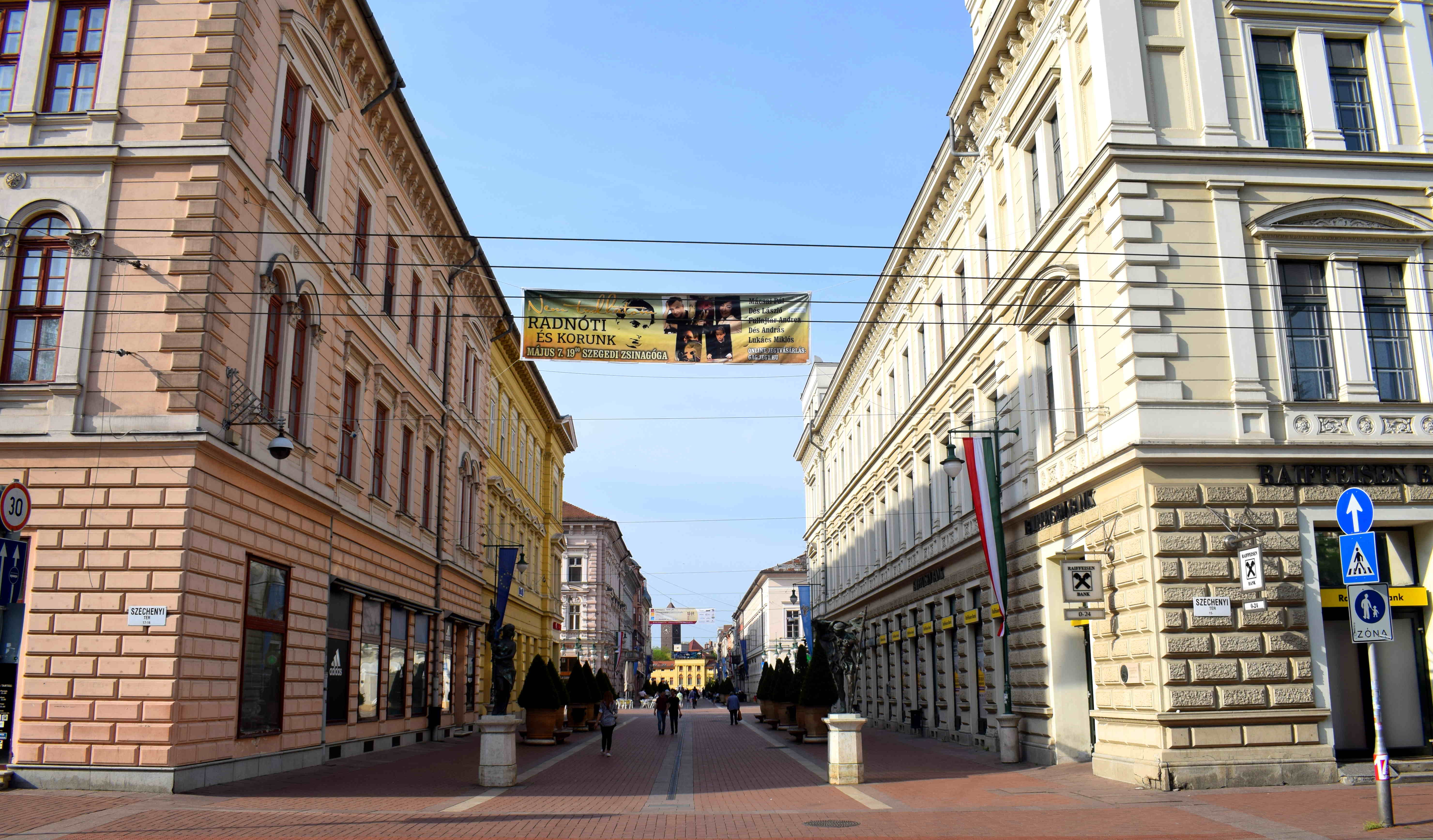 Of course, what is a European city without a pedestrian street.
Of course, what is a European city without a pedestrian street.
American cities have yet to grasp this most basic concept of pedestrianizing the main streets of a city downtown. They don’t understand that it’s good for business. That it increases tourism. That it makes the city more attractive.
Szeged’s pedestrian street is called Karasz Utca and it was just as good as any other European pedestrian street I had seen.
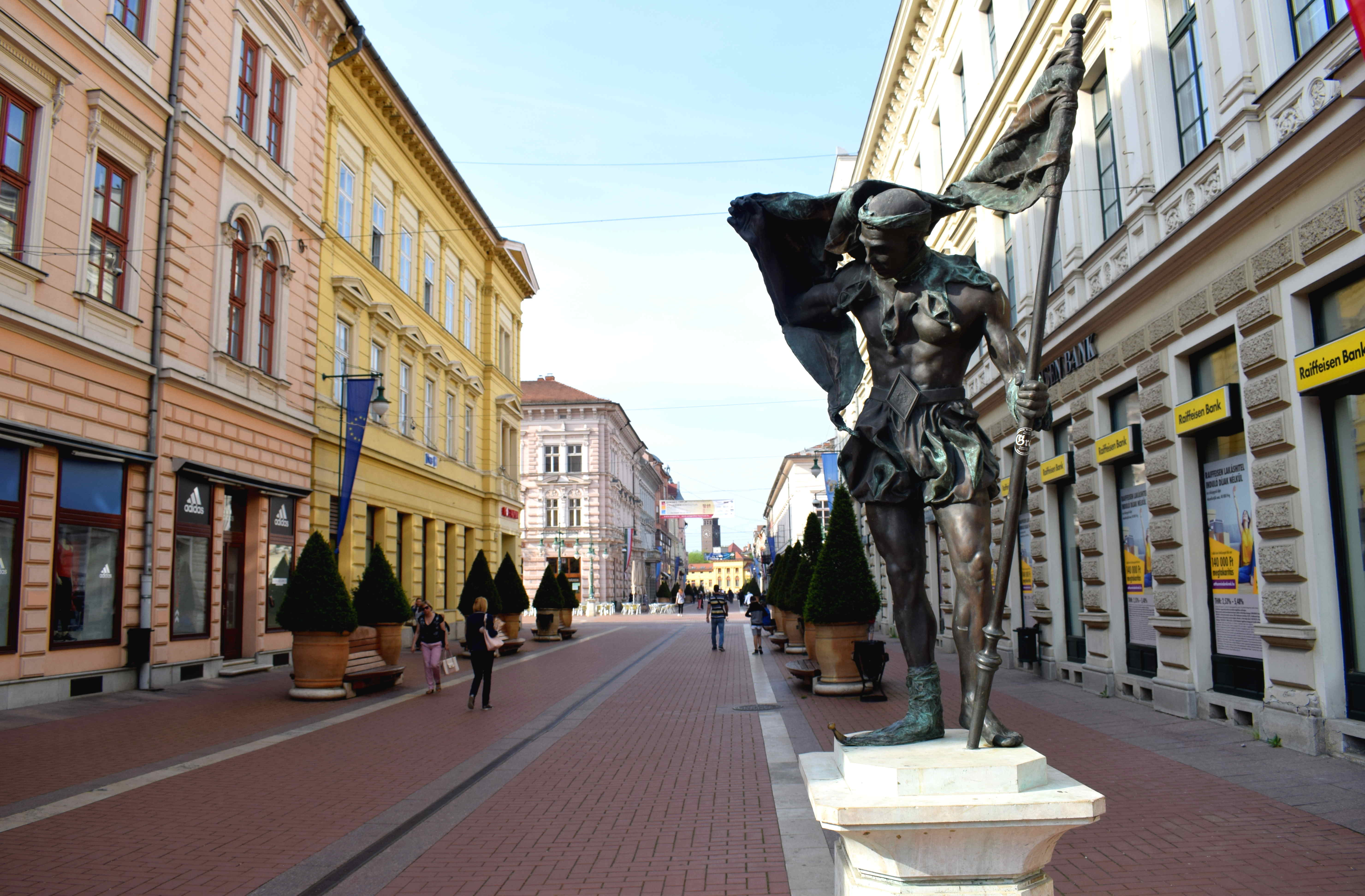 Two interesting statues welcome you at its entrance.
Two interesting statues welcome you at its entrance.
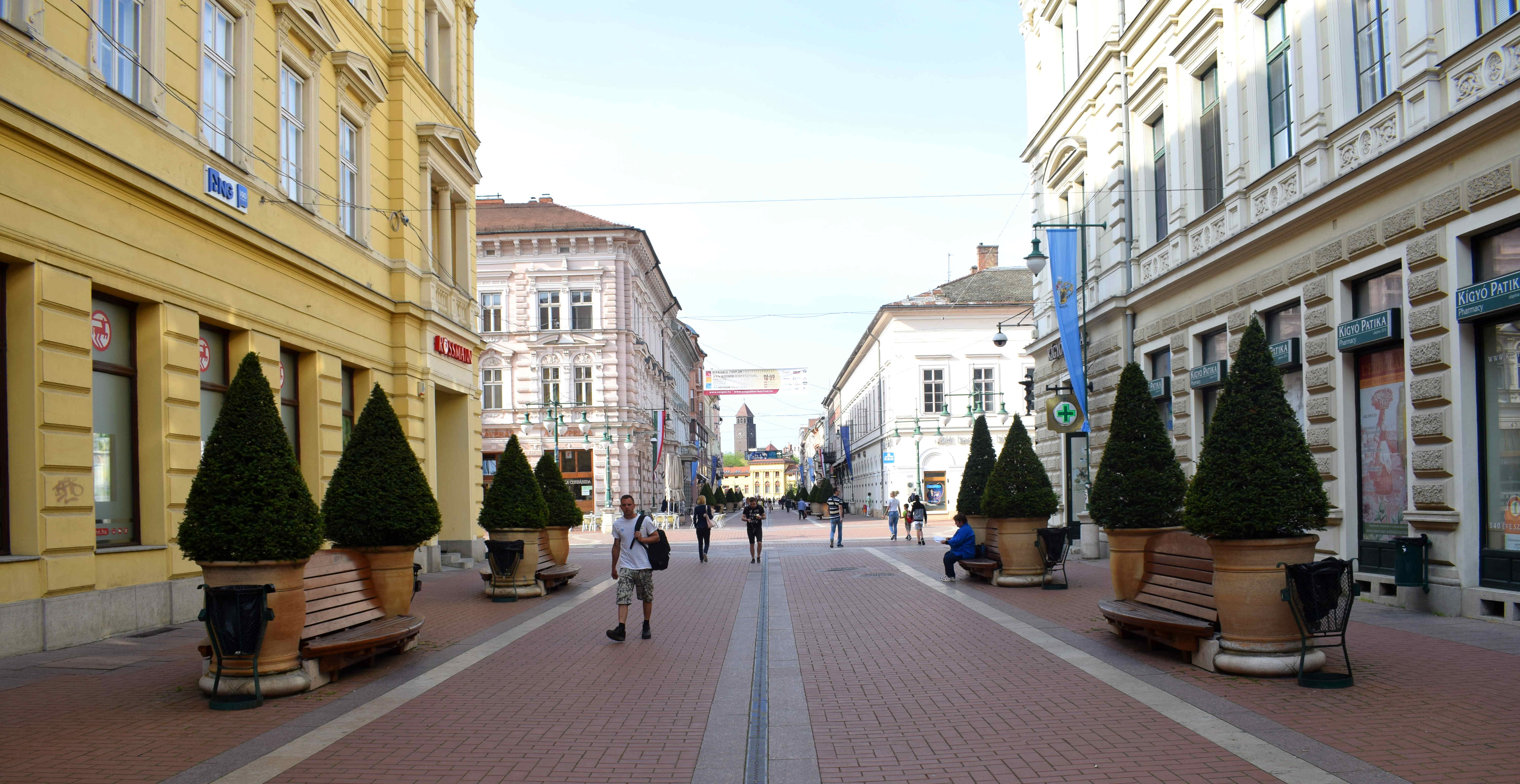 It was early morning, so not many people were out and about.
It was early morning, so not many people were out and about.
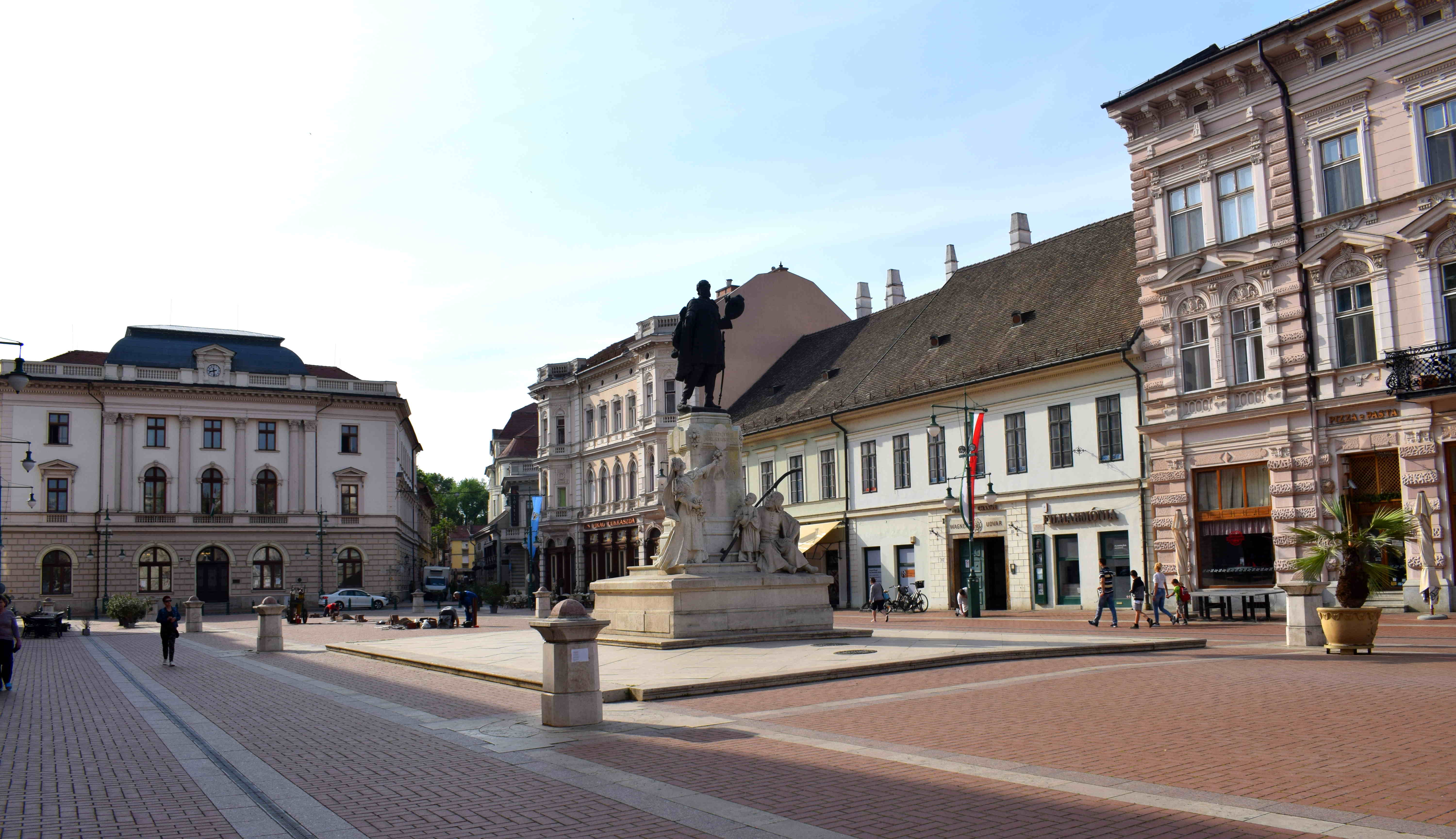 But you could feel the city beginning to wake up.
But you could feel the city beginning to wake up.
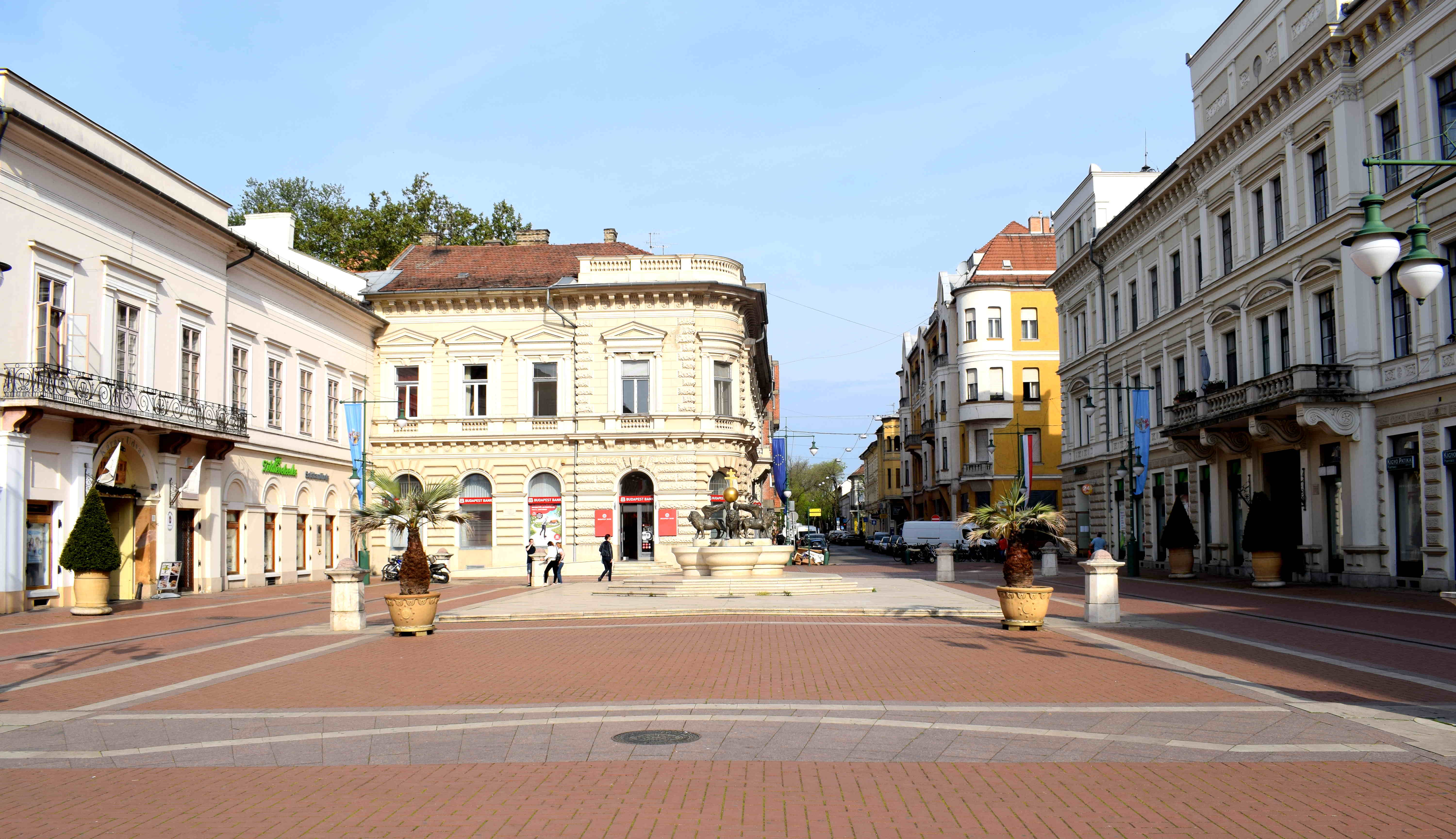 The sun was rising and people were heading to work.
The sun was rising and people were heading to work.
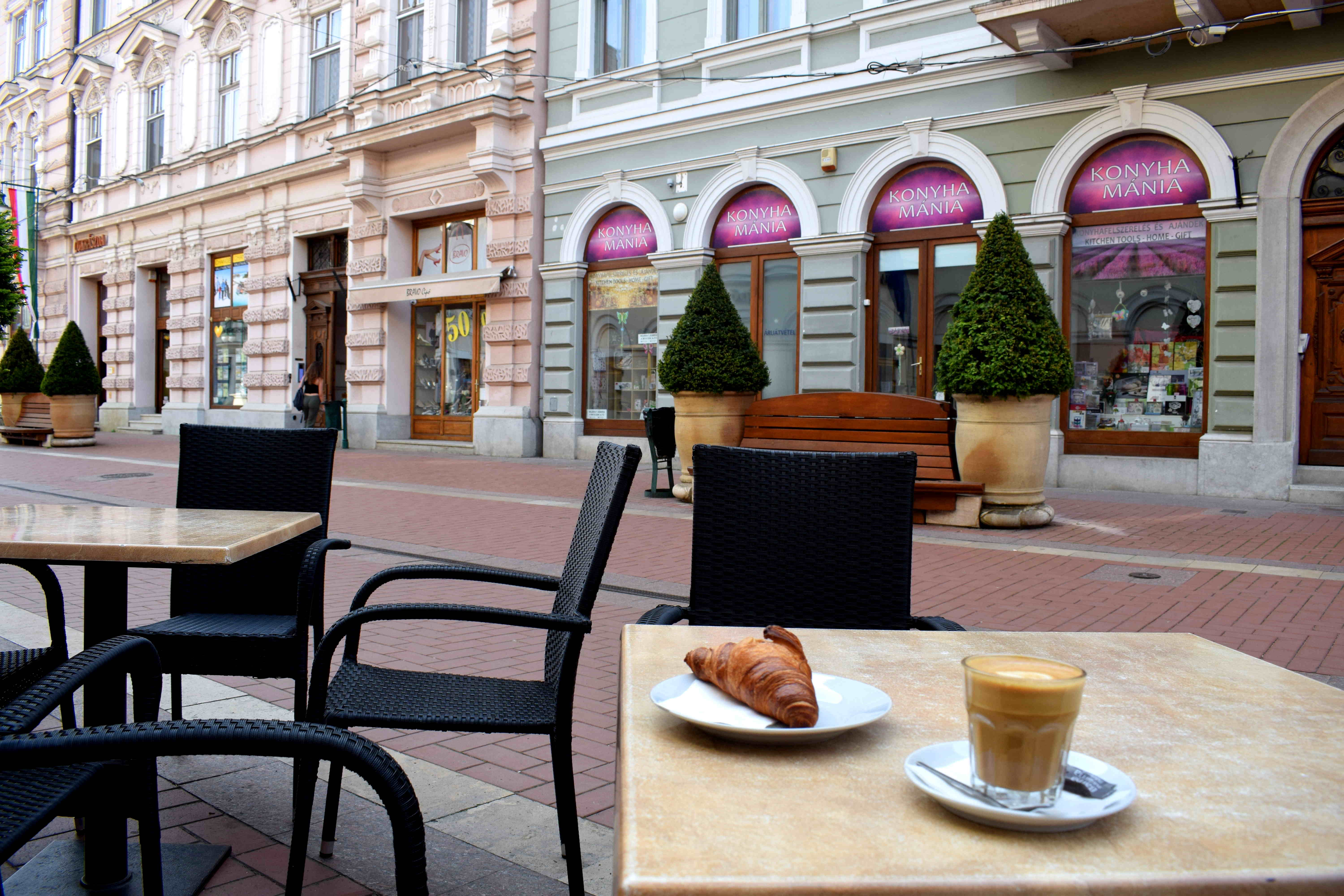 As it was morning, I decided to try a delicious croissant and cappuccino.
As it was morning, I decided to try a delicious croissant and cappuccino.
It’s interesting how different the food is in Hungary and Serbia and Croatia. In Hungary you do not have this obsession with meat that is characteristic of Balkan countries.
In Hungary, the food seemed to have a more central European character to it, more akin to Slovakia, Austria, the Czech Republic and their neighbors up north.
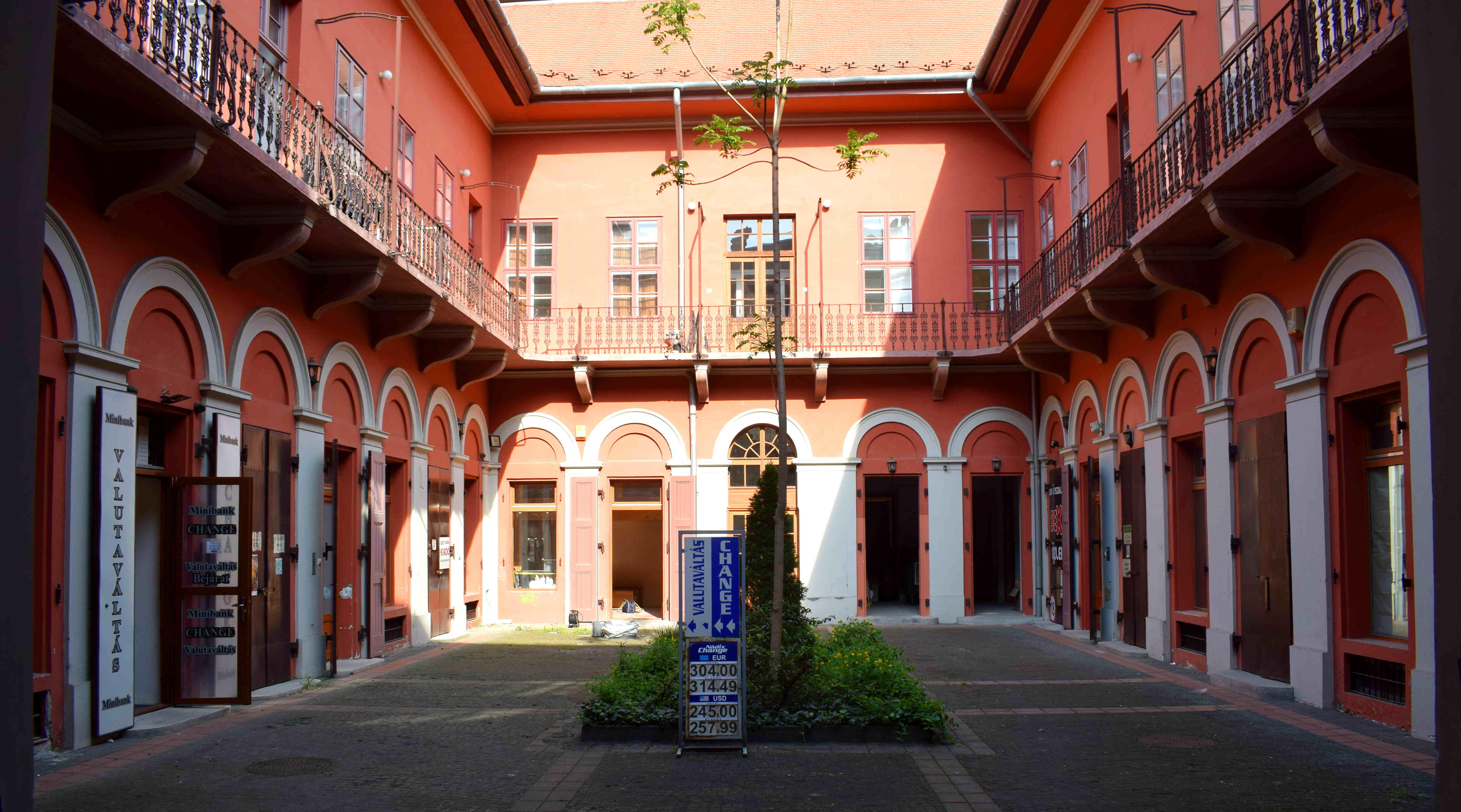 There were also some neat courtyards hidden behind the buildings on the main square.
There were also some neat courtyards hidden behind the buildings on the main square.
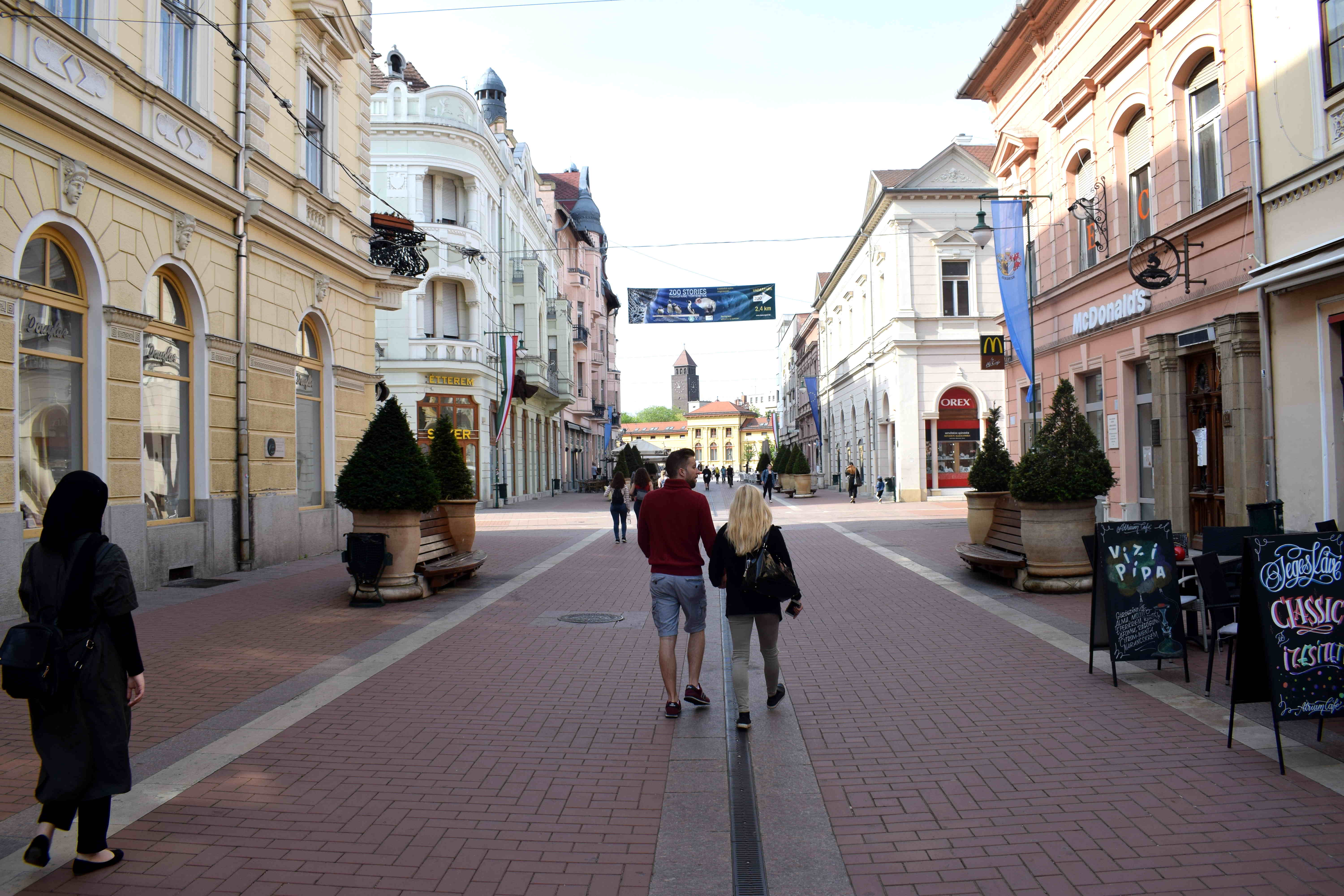 More people walking in the center.
More people walking in the center.
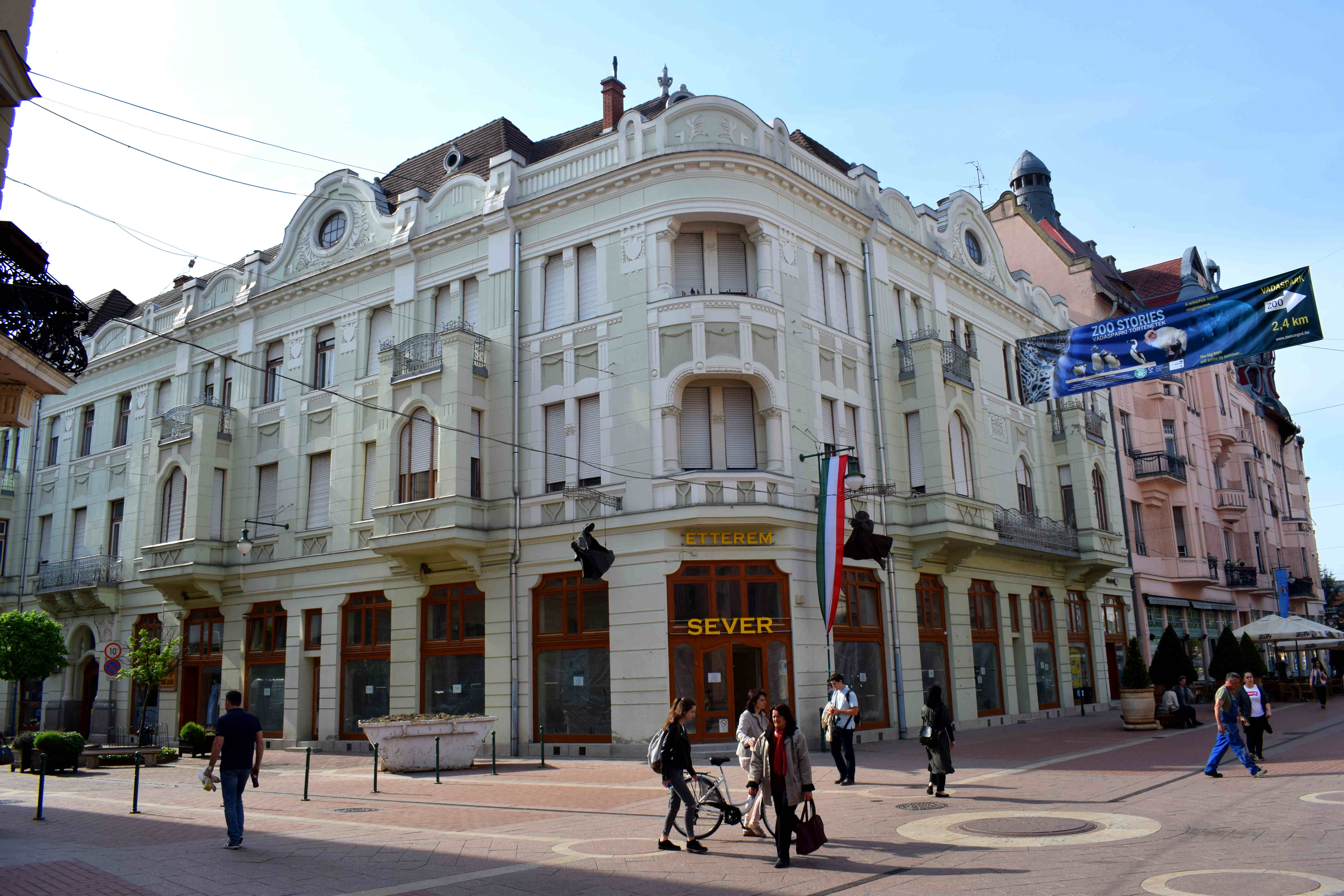 Szeged clearly implemented a design code in its streets. There were almost no large advertisements.
Szeged clearly implemented a design code in its streets. There were almost no large advertisements.
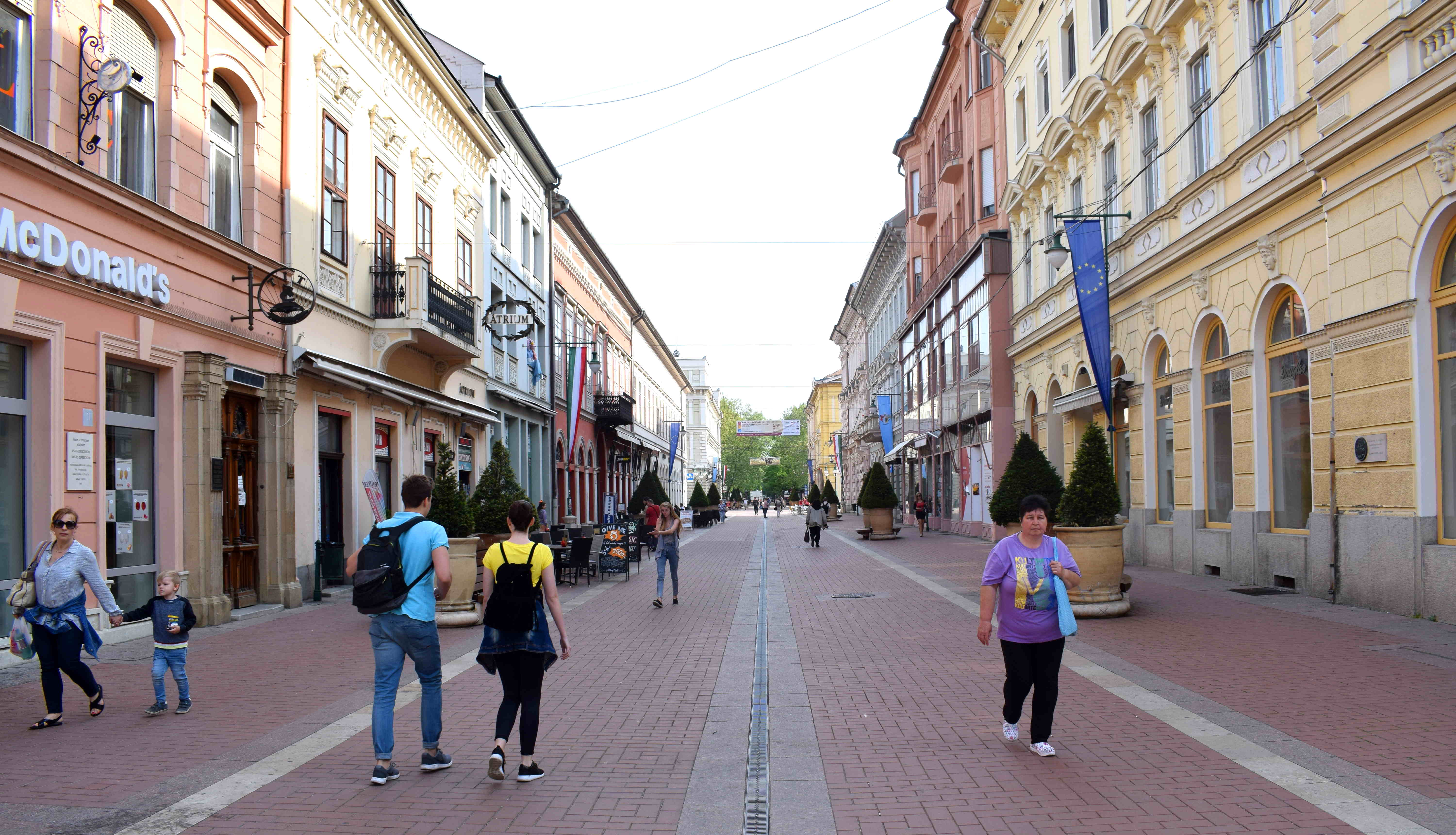 The store signs more or less complemented the buildings. They did not overpower them.
The store signs more or less complemented the buildings. They did not overpower them.
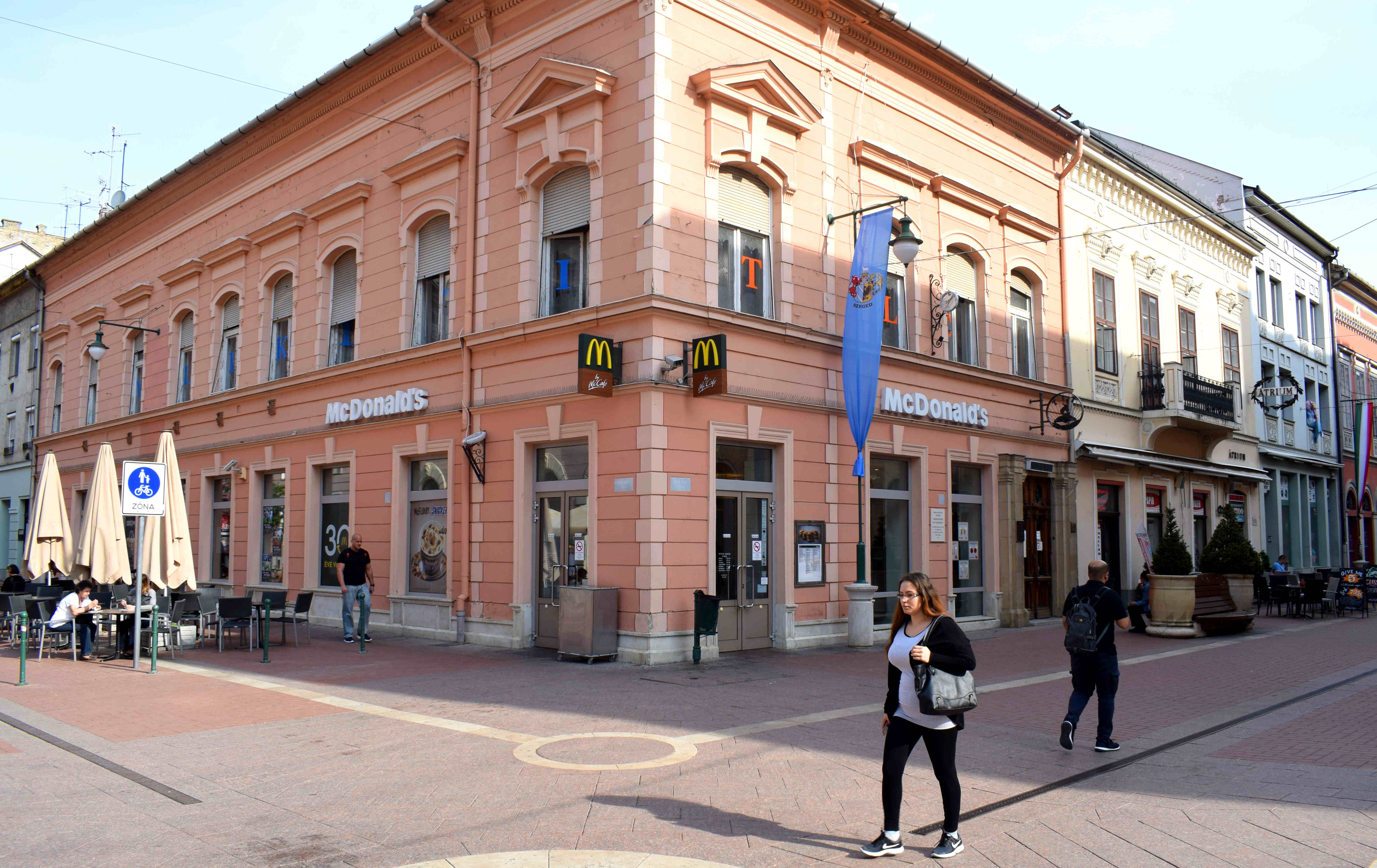 Take a look at this McDonalds. There is little that distinguishes it from the other buildings surrounding it. In this way, visitors and locals can enjoy the the natural look of the buildings.
Take a look at this McDonalds. There is little that distinguishes it from the other buildings surrounding it. In this way, visitors and locals can enjoy the the natural look of the buildings.
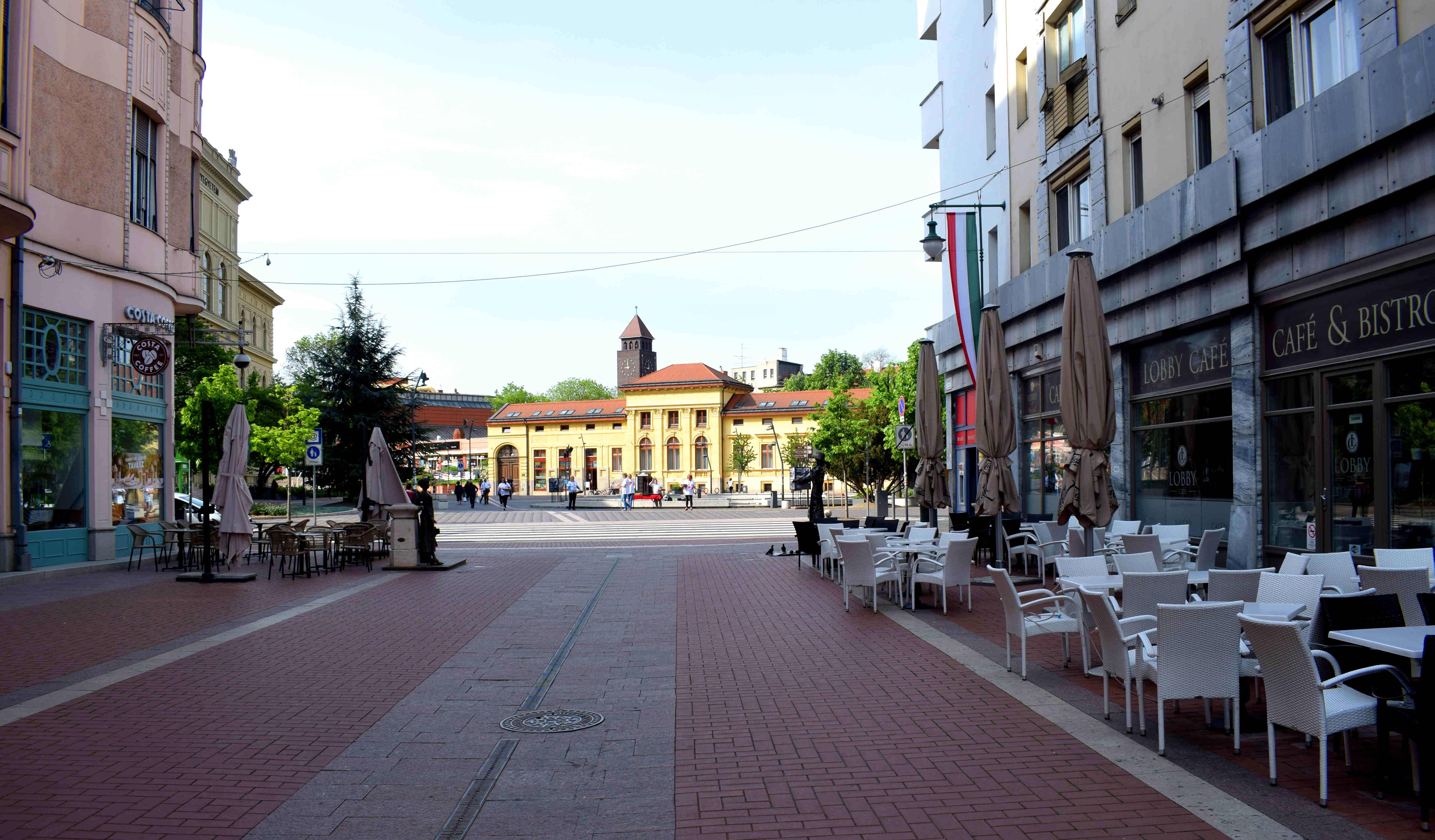 One drawback of Szeged’s pedestrian center compared to Subotica’s was the lack of trees.
One drawback of Szeged’s pedestrian center compared to Subotica’s was the lack of trees.
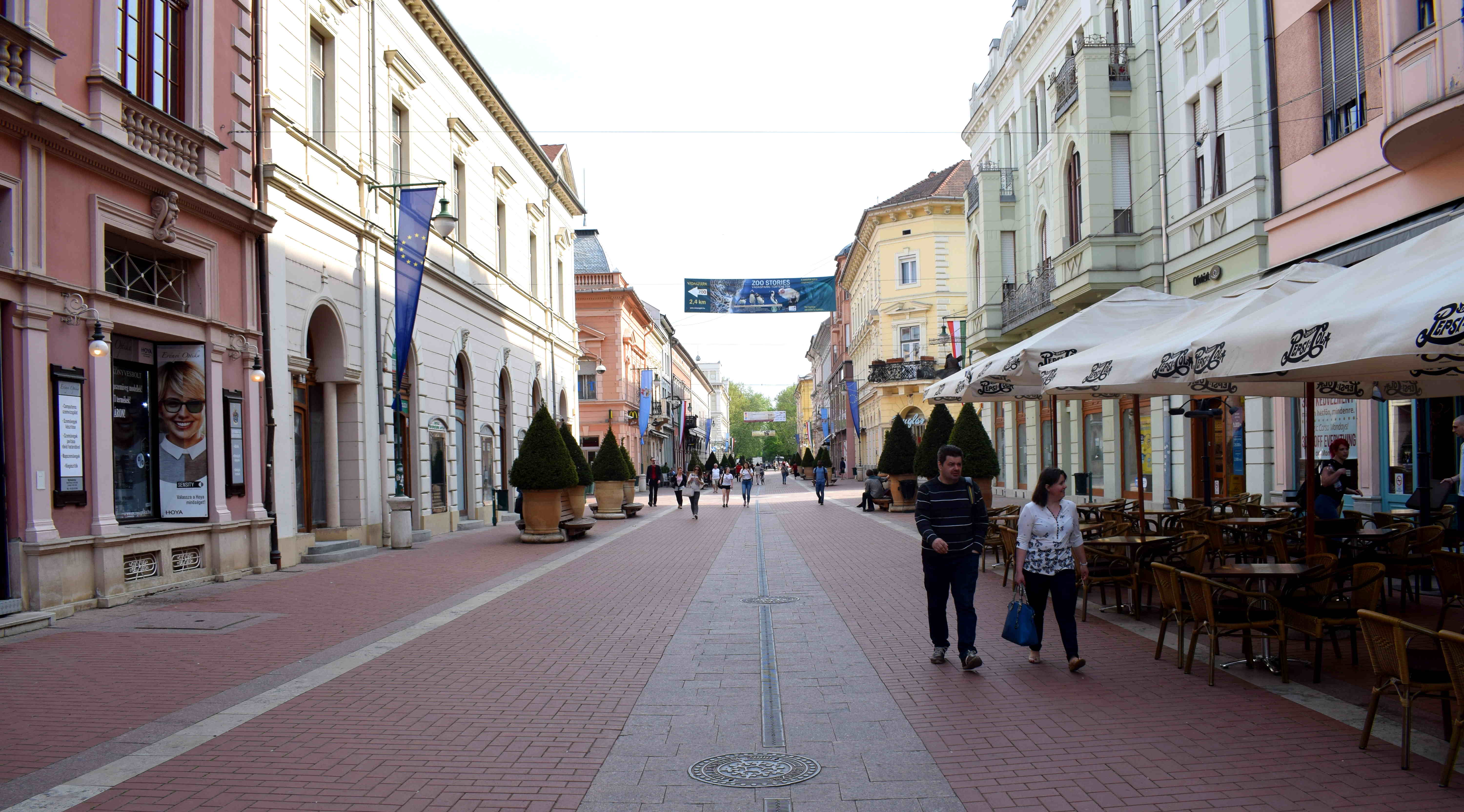 Whereas in Subotica you had enormous, 100-year old trees towering over the entire city, here there were very few of them.
Whereas in Subotica you had enormous, 100-year old trees towering over the entire city, here there were very few of them.
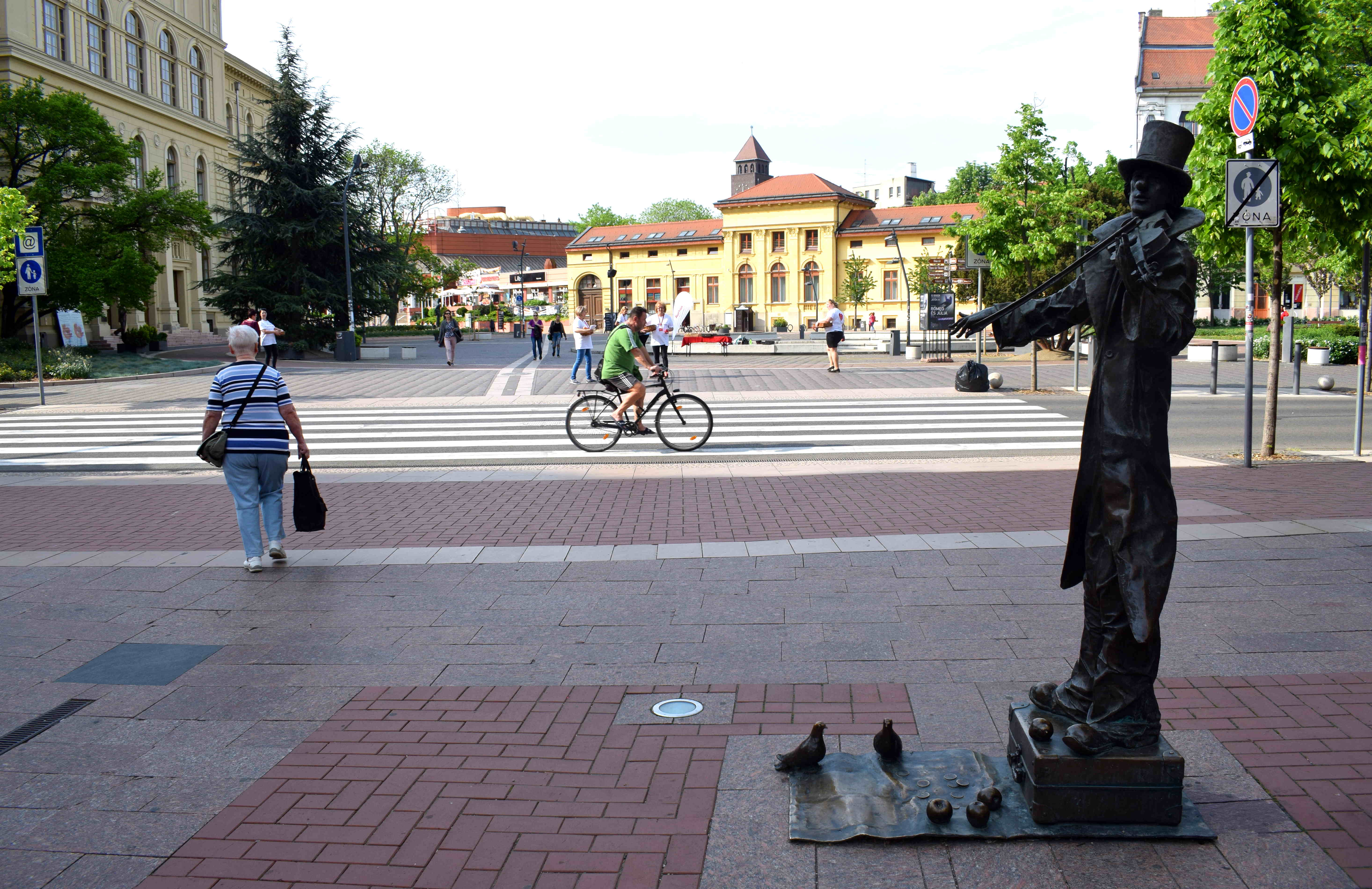 At the end of the street you had another neat statue.
At the end of the street you had another neat statue.
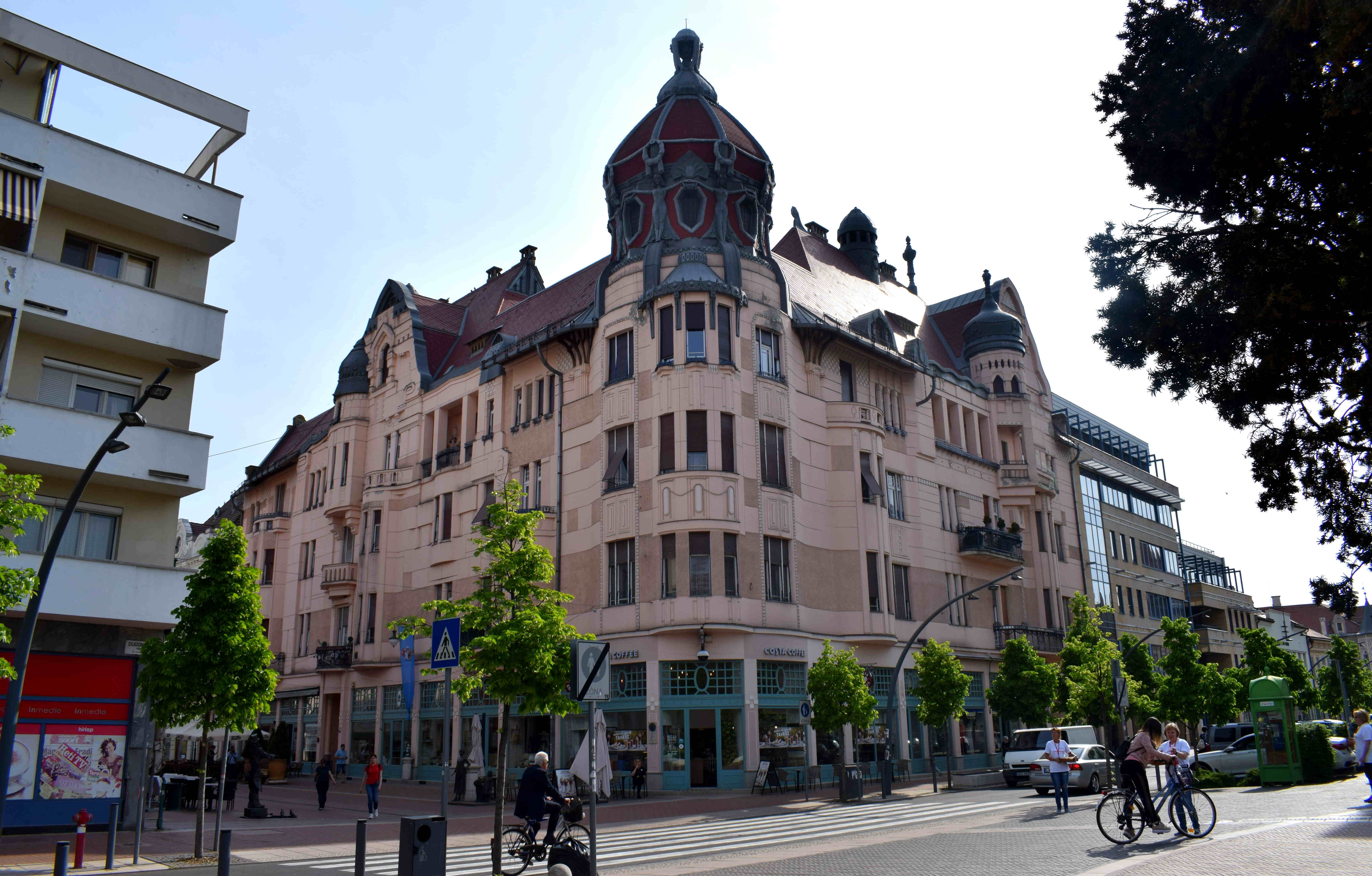 What a beautiful building.
What a beautiful building.
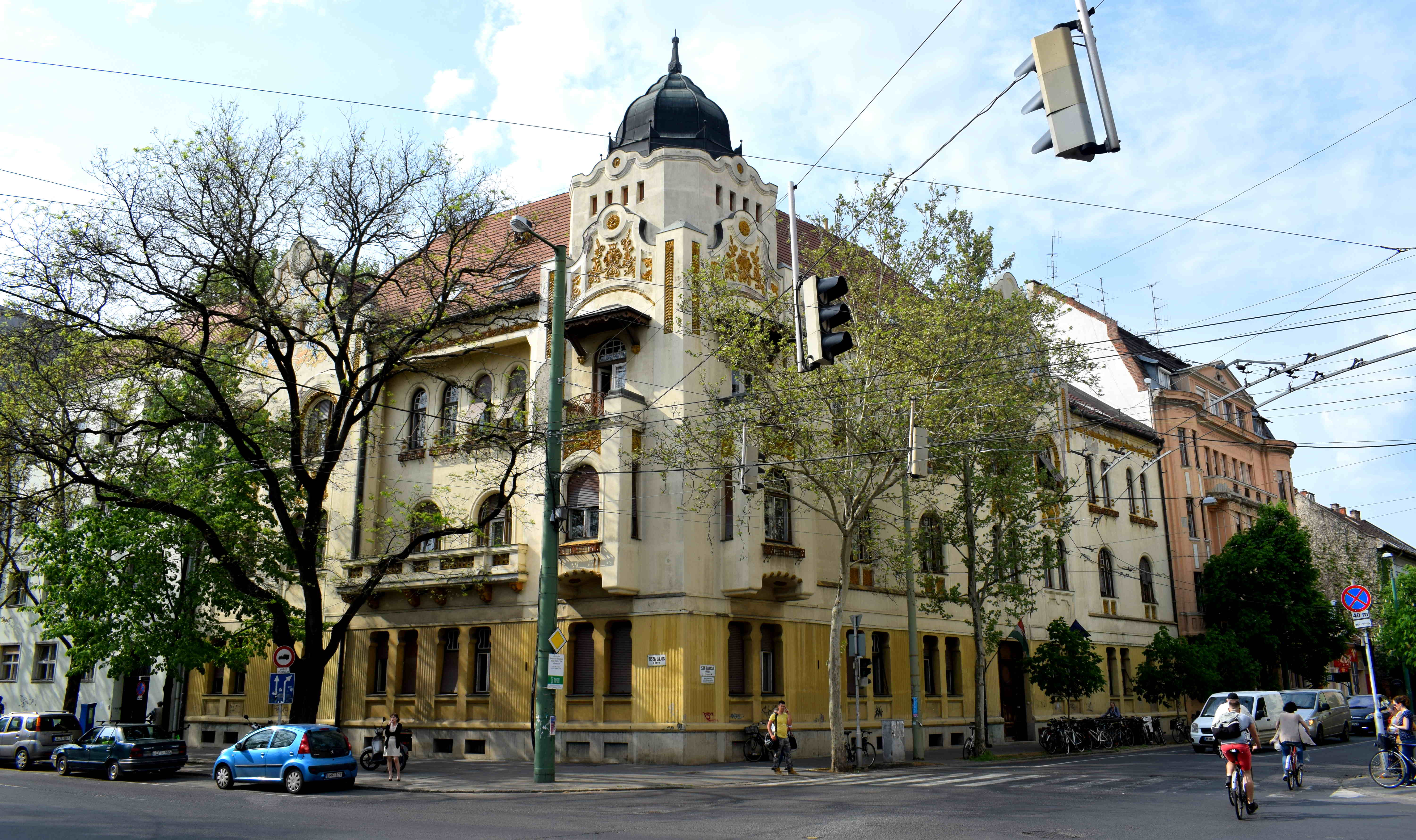 And another one.
And another one.
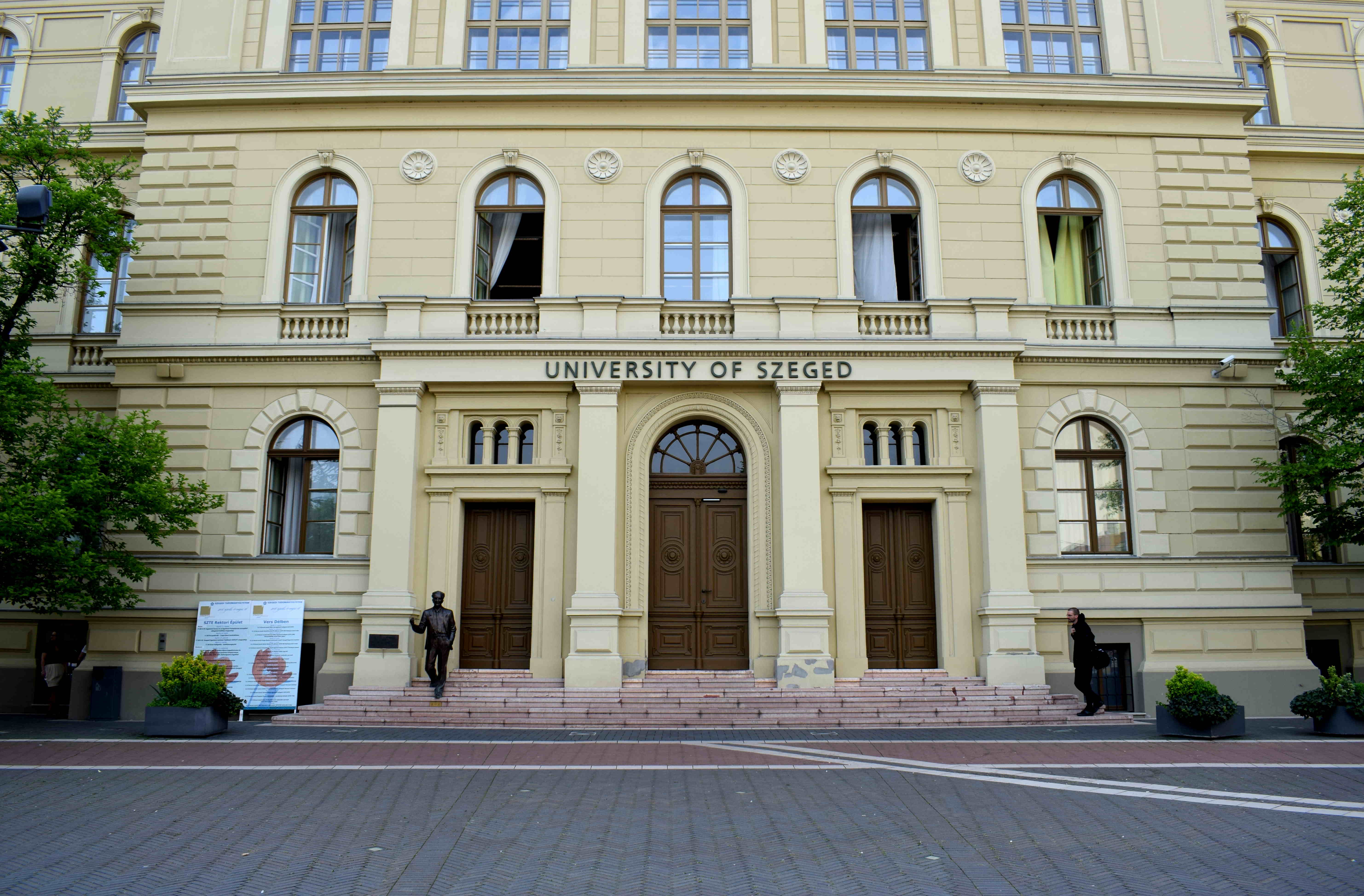 Szeged is a university town, which means there are a ton of young people there that study from surrounding villages. Established in 1821, the University of Szeged is one of the oldest universities in Hungary.
Szeged is a university town, which means there are a ton of young people there that study from surrounding villages. Established in 1821, the University of Szeged is one of the oldest universities in Hungary.
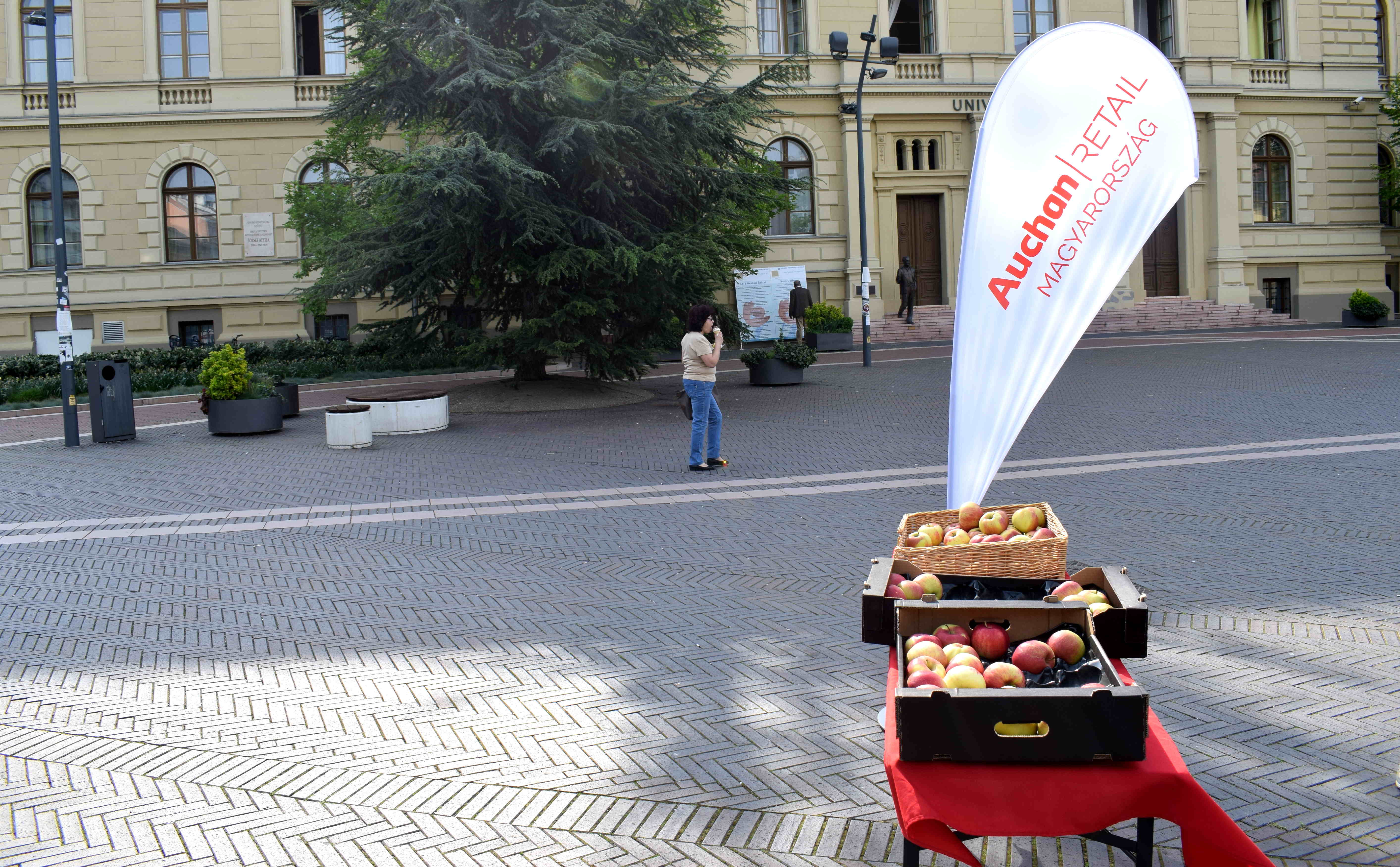 In front of the university Auchan was handing out free apples.
In front of the university Auchan was handing out free apples.
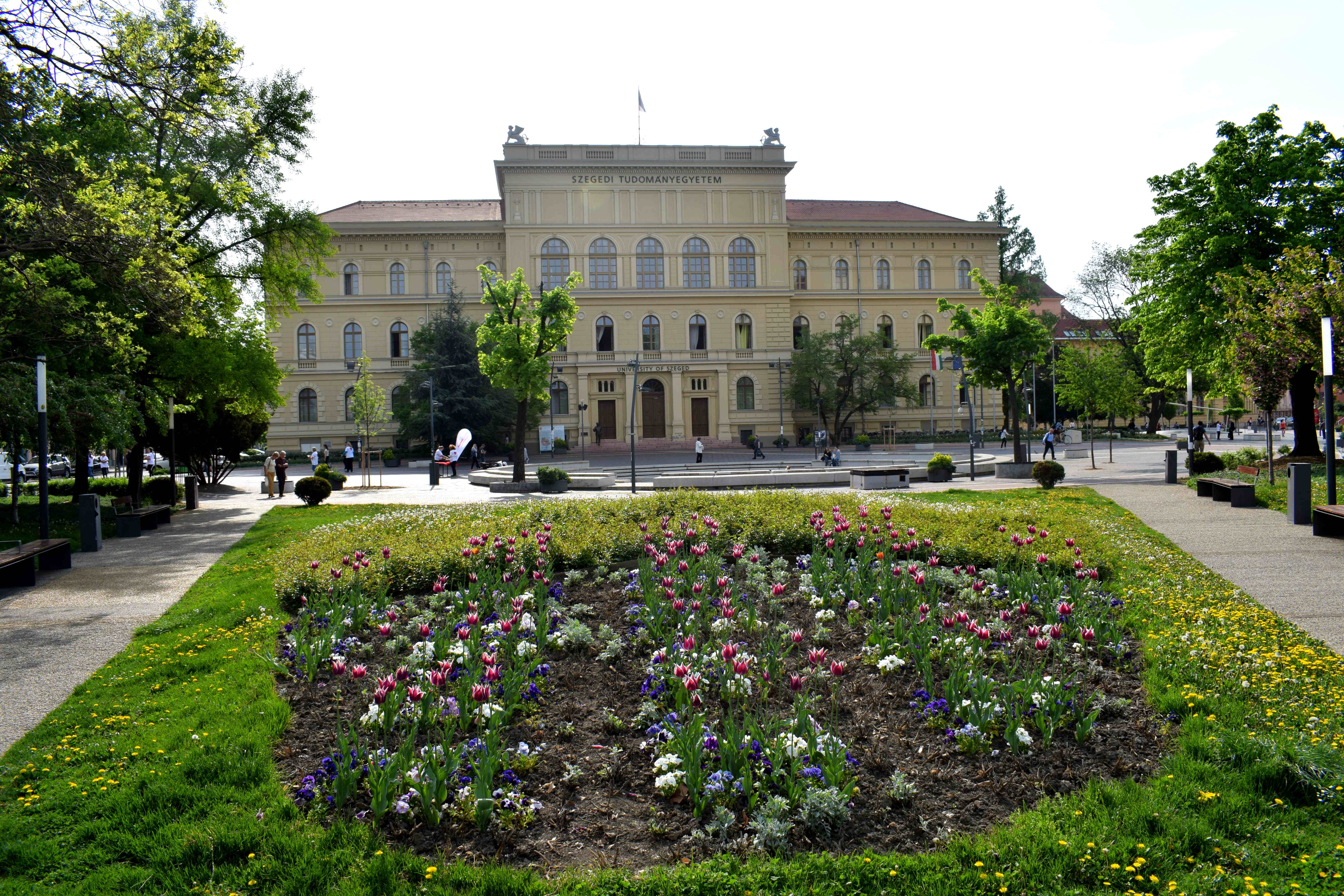 Another look at the university from afar.
Another look at the university from afar.
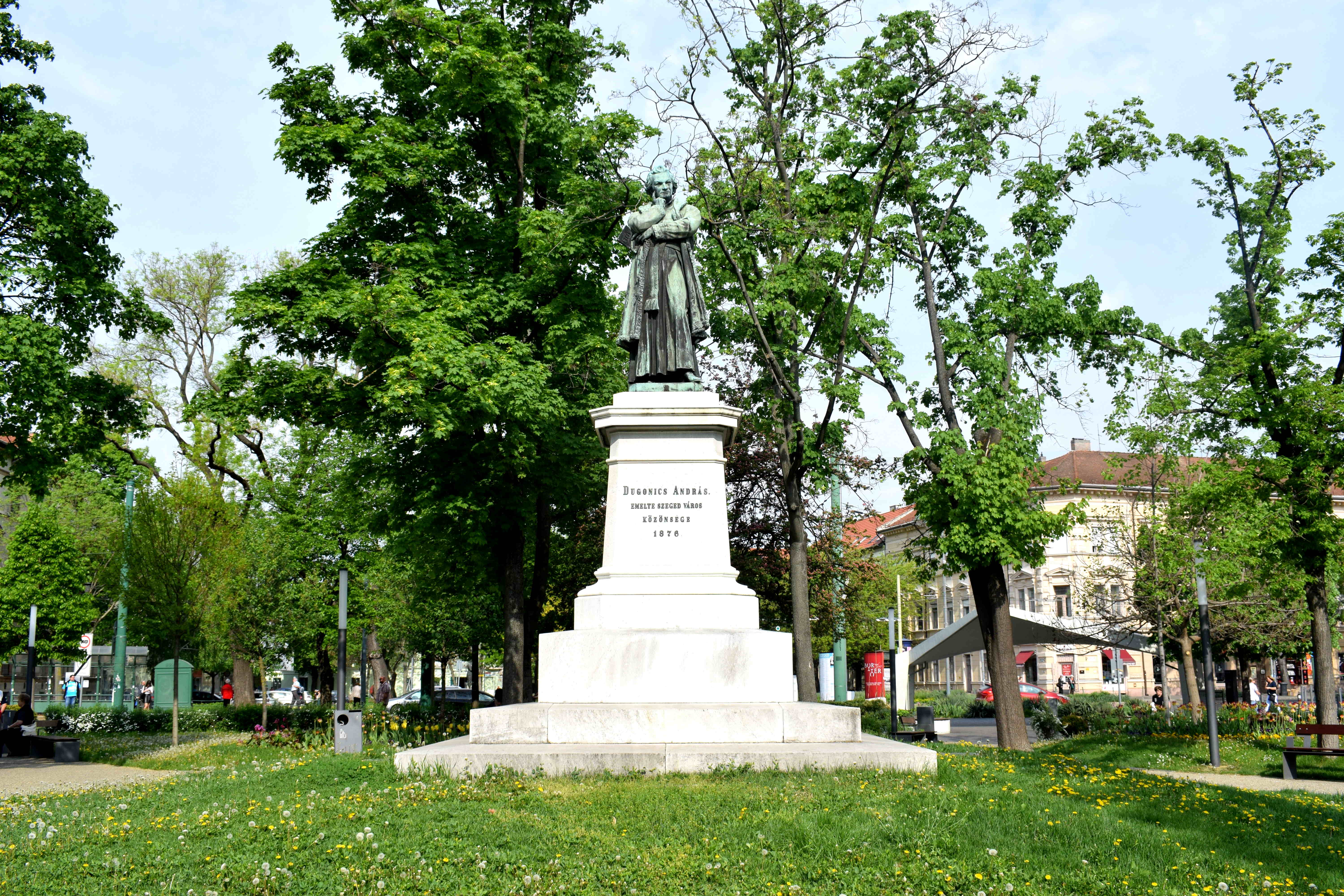 A beautiful statue nearby.
A beautiful statue nearby.
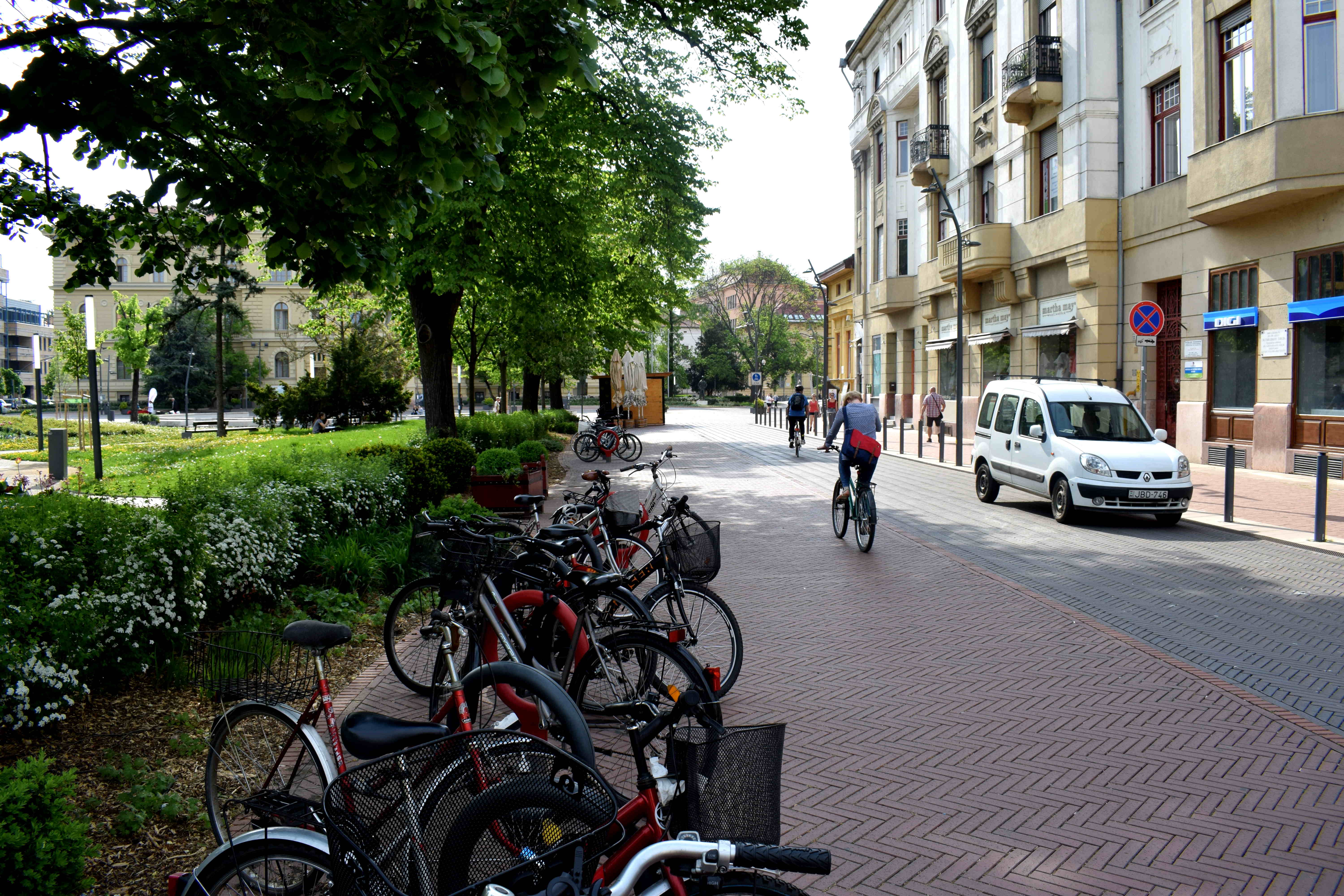 More bikes.
More bikes.
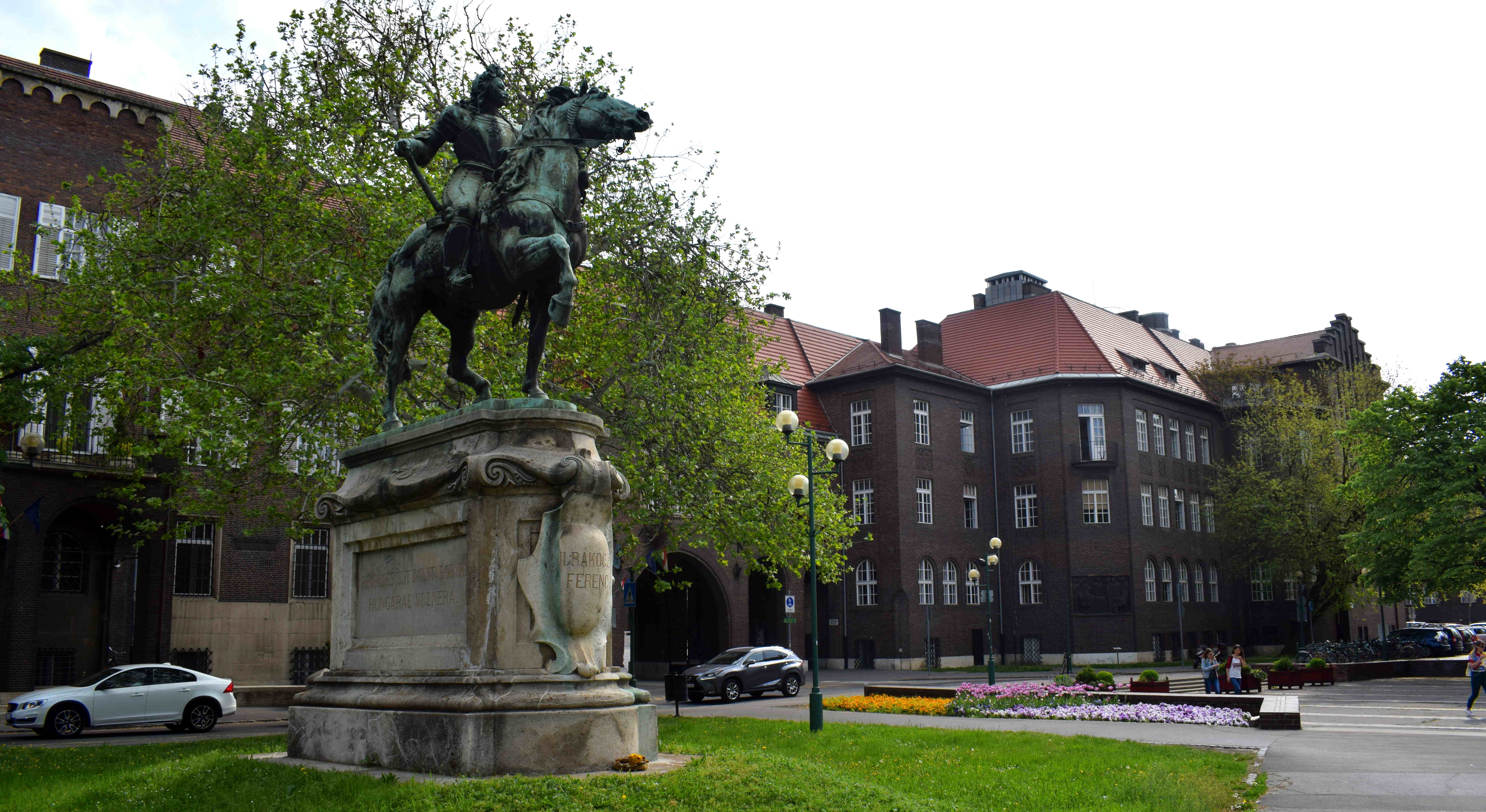 More statues.
More statues.
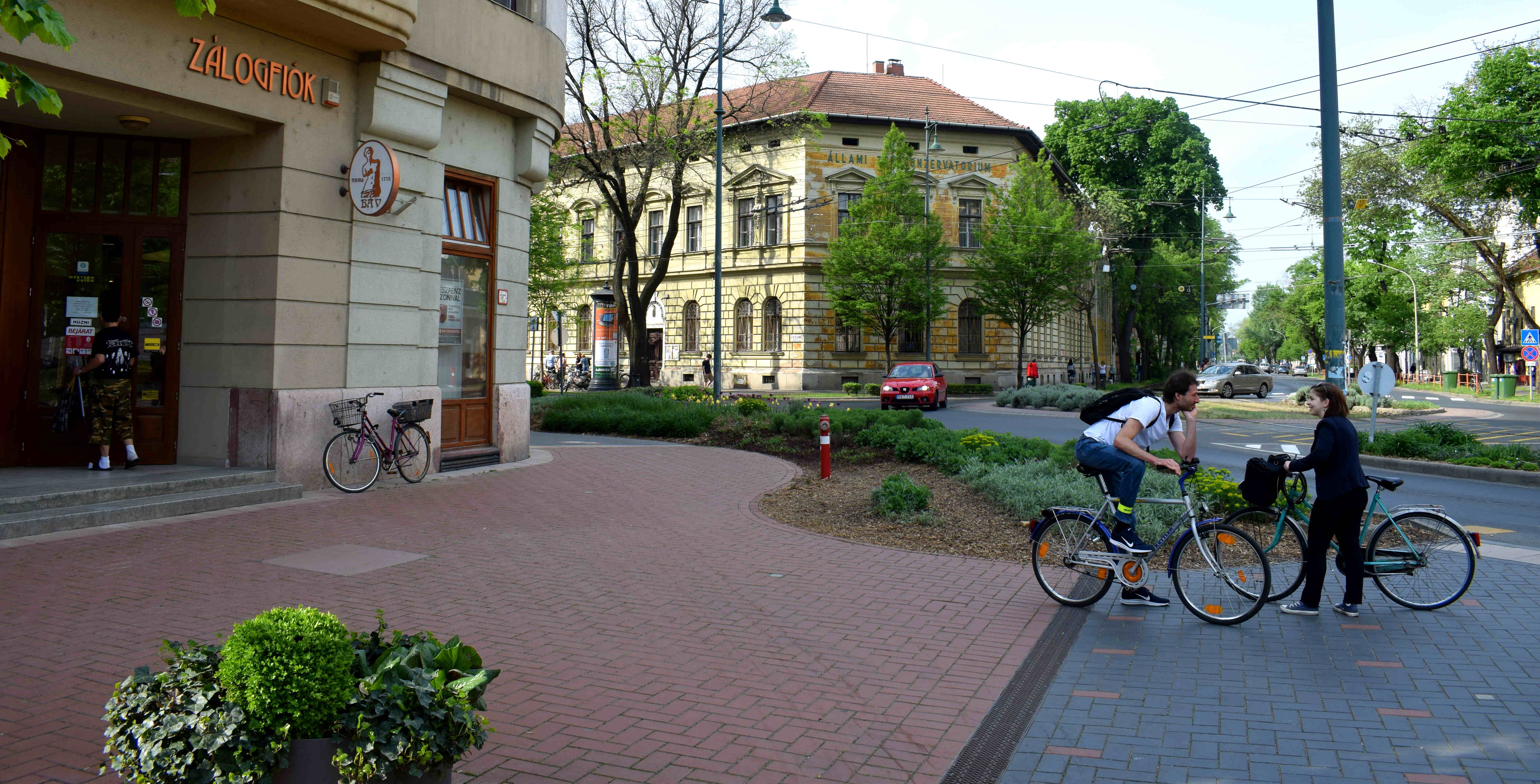 Two cyclists having a friendly chat.
Two cyclists having a friendly chat.
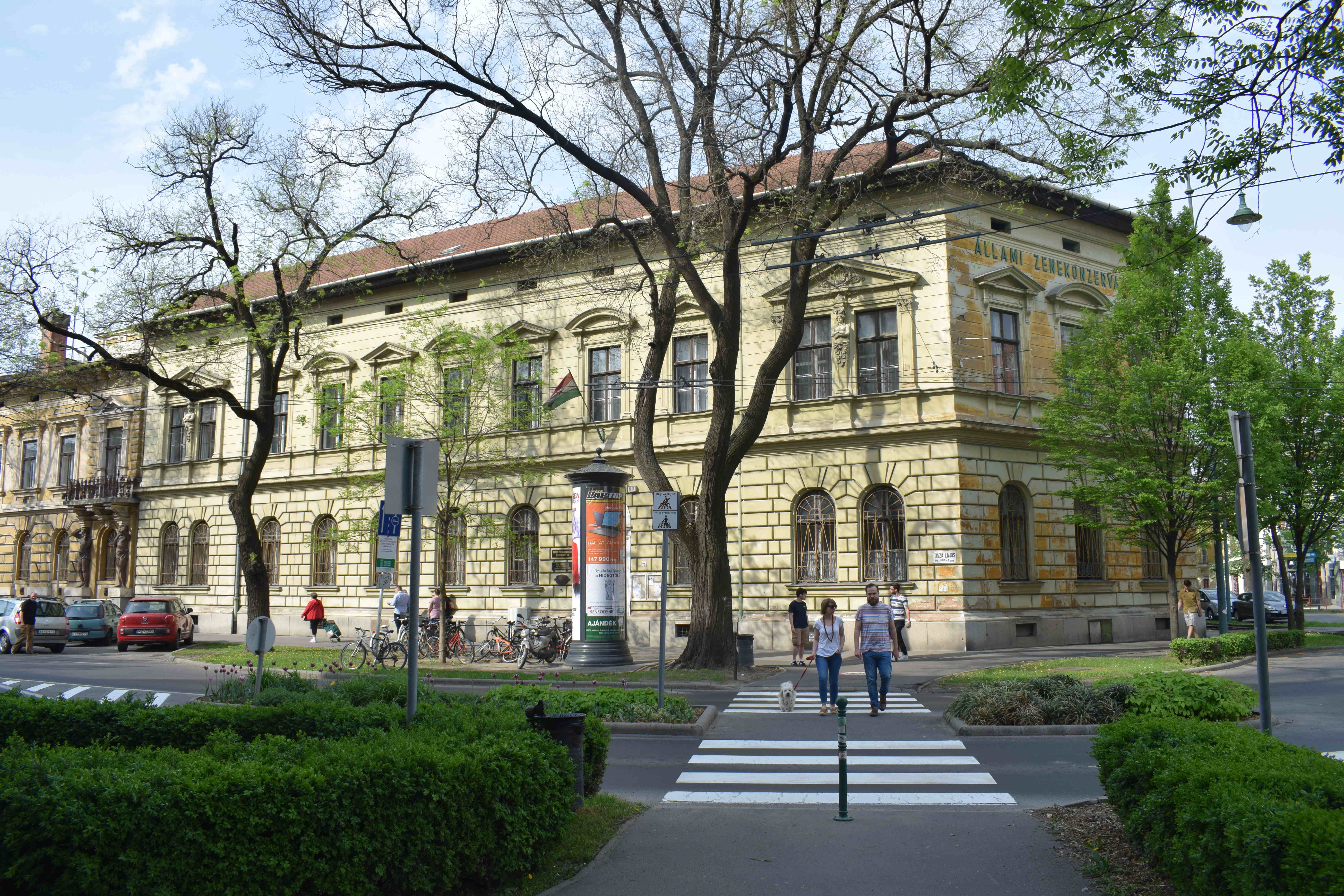 When you step out a few blocks from the pedestrianized center the trees appear again. Here you can see how nicely they complement the old building behind them.
When you step out a few blocks from the pedestrianized center the trees appear again. Here you can see how nicely they complement the old building behind them.
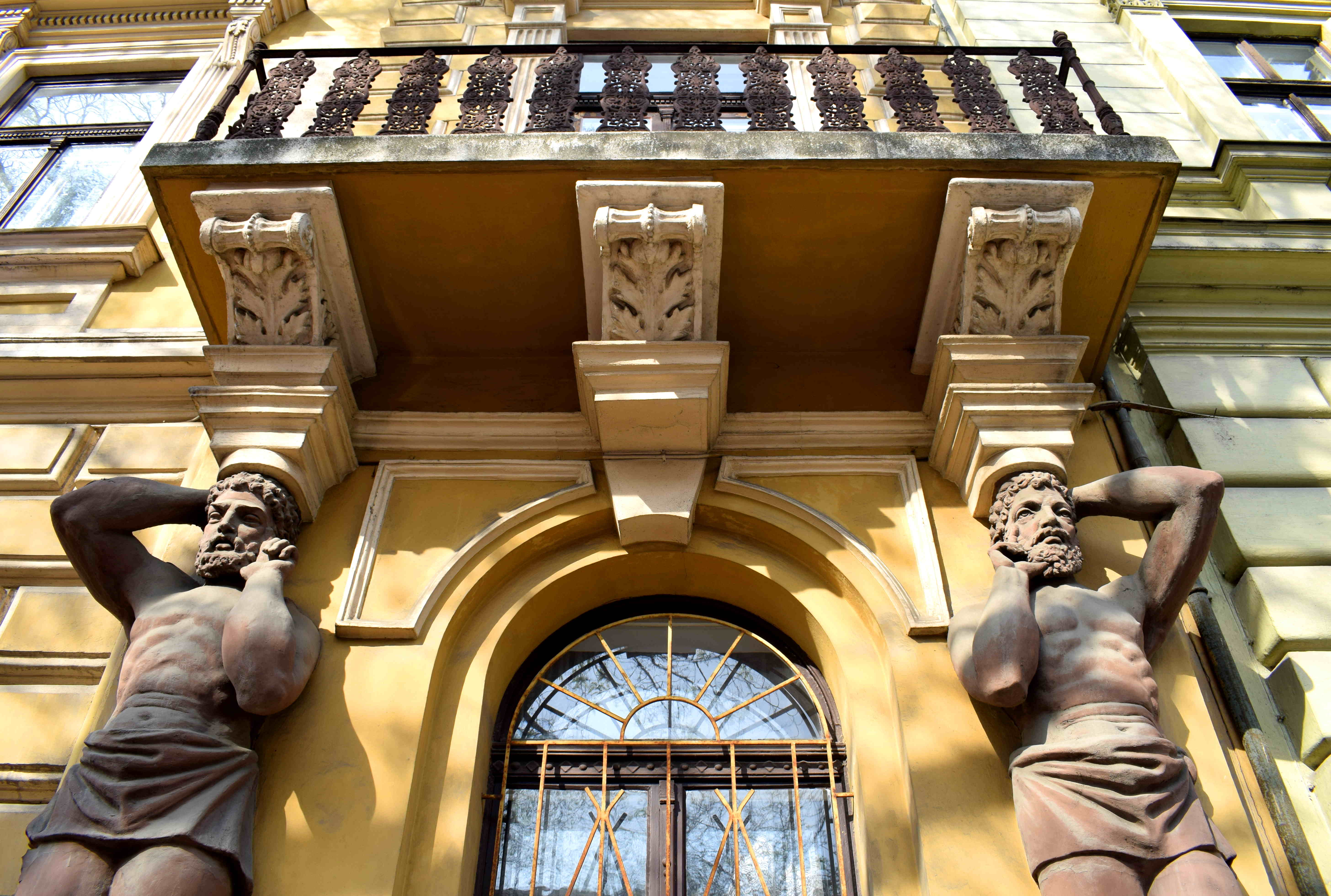 I love these kind of statues.
I love these kind of statues.
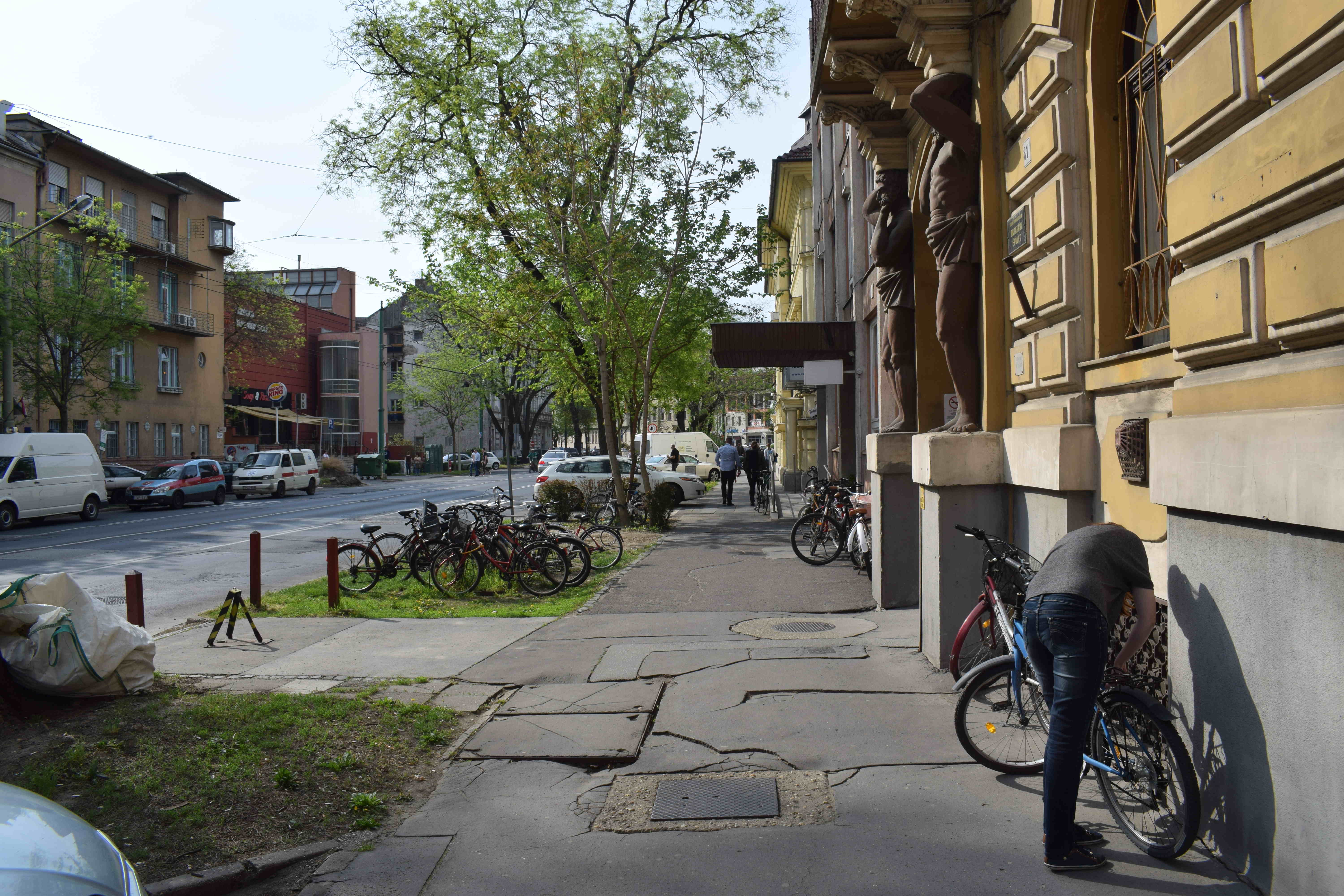
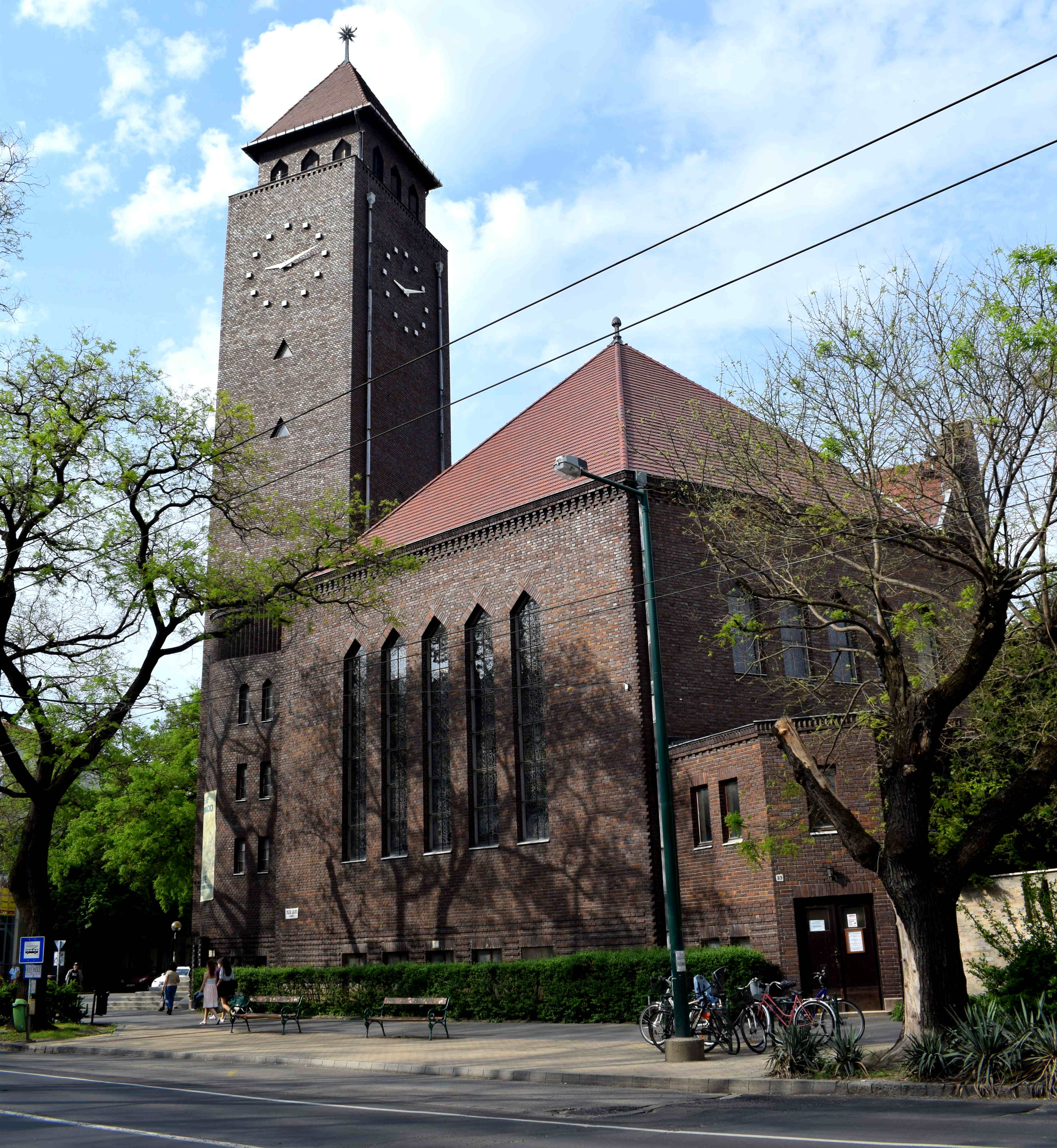 An interesting church in the center, looks to be a protestant church.
An interesting church in the center, looks to be a protestant church.
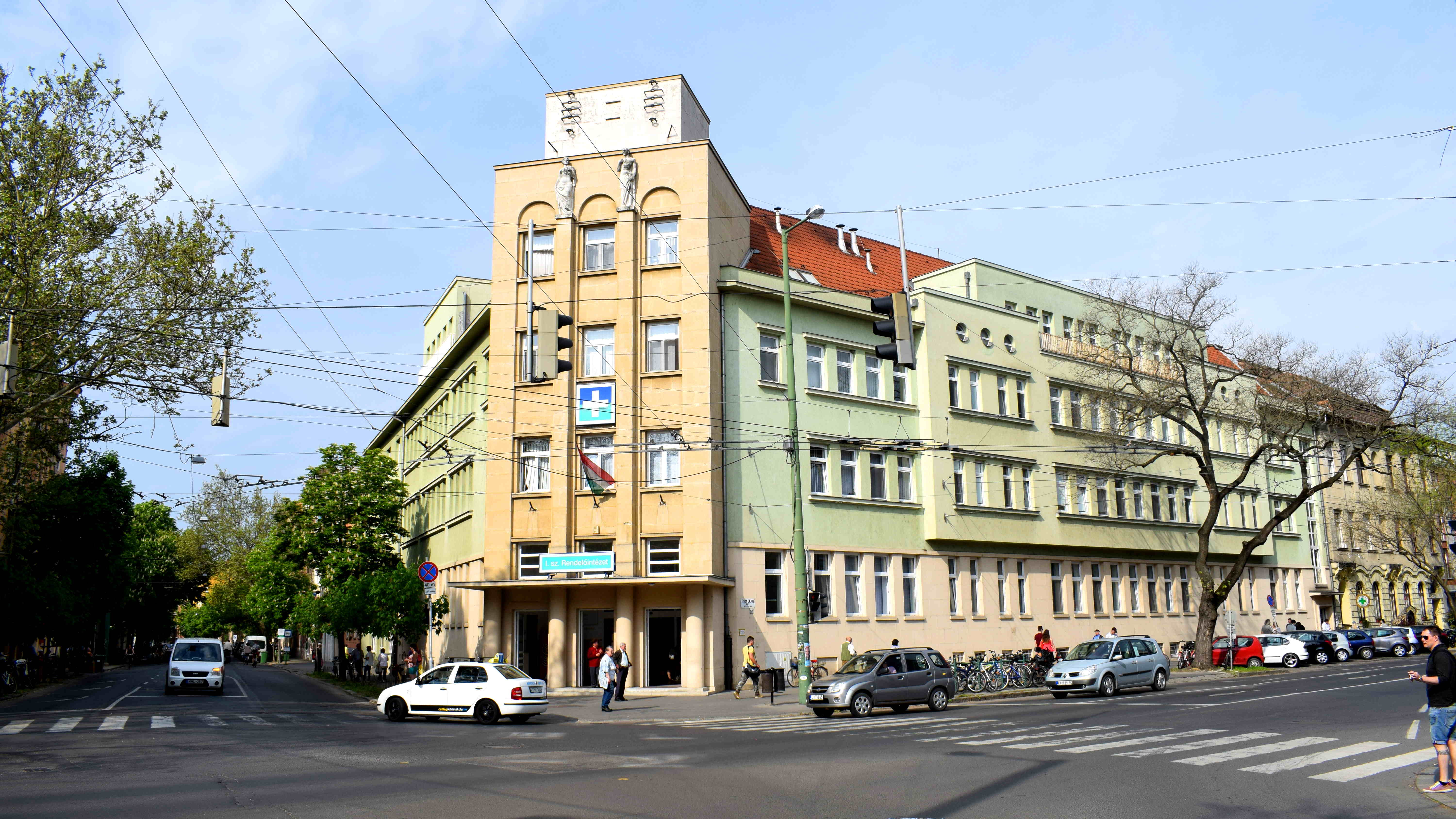 Some slightly more modernistic looking architecture.
Some slightly more modernistic looking architecture.
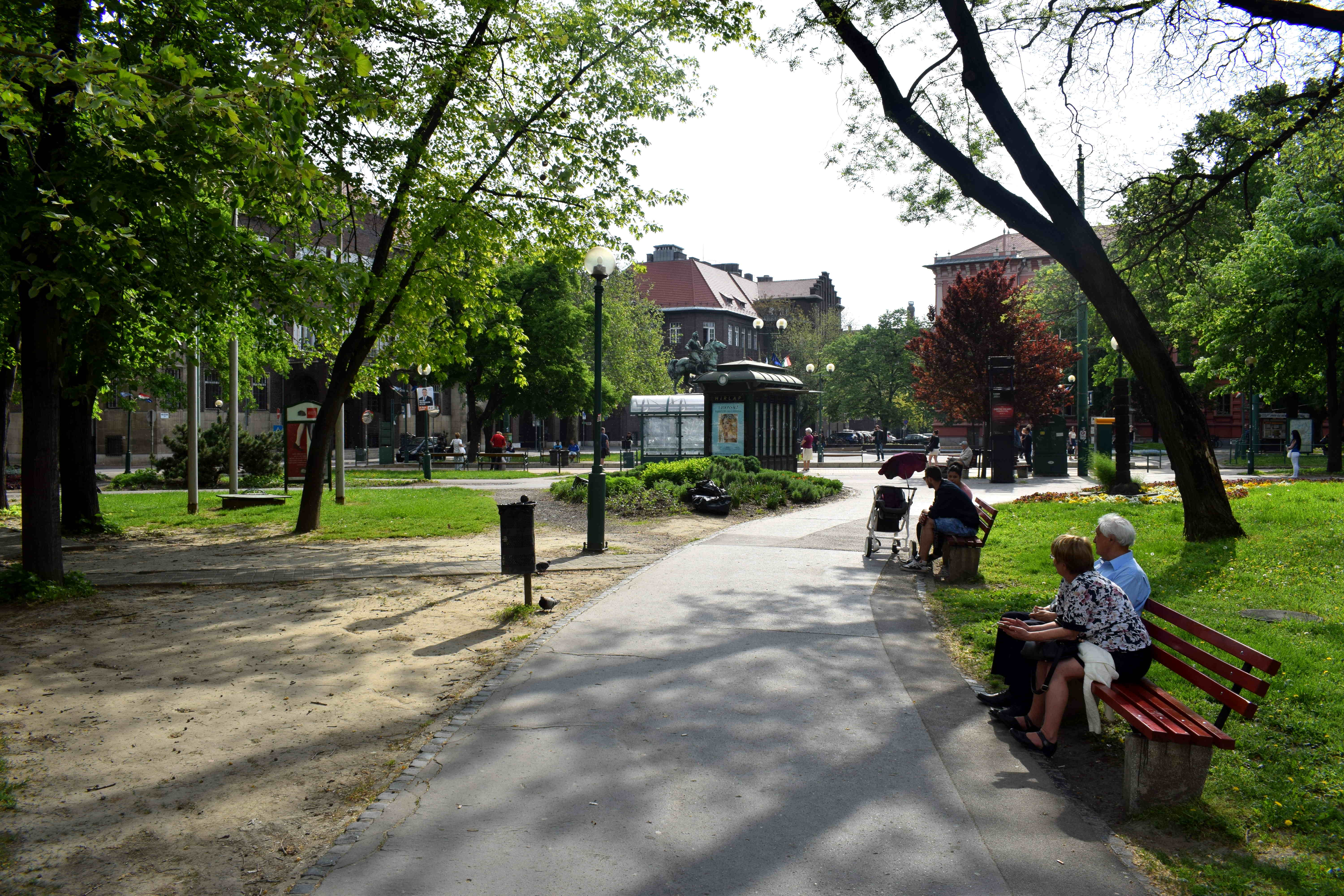 Another park in the center with some older folks relaxing.
Another park in the center with some older folks relaxing.
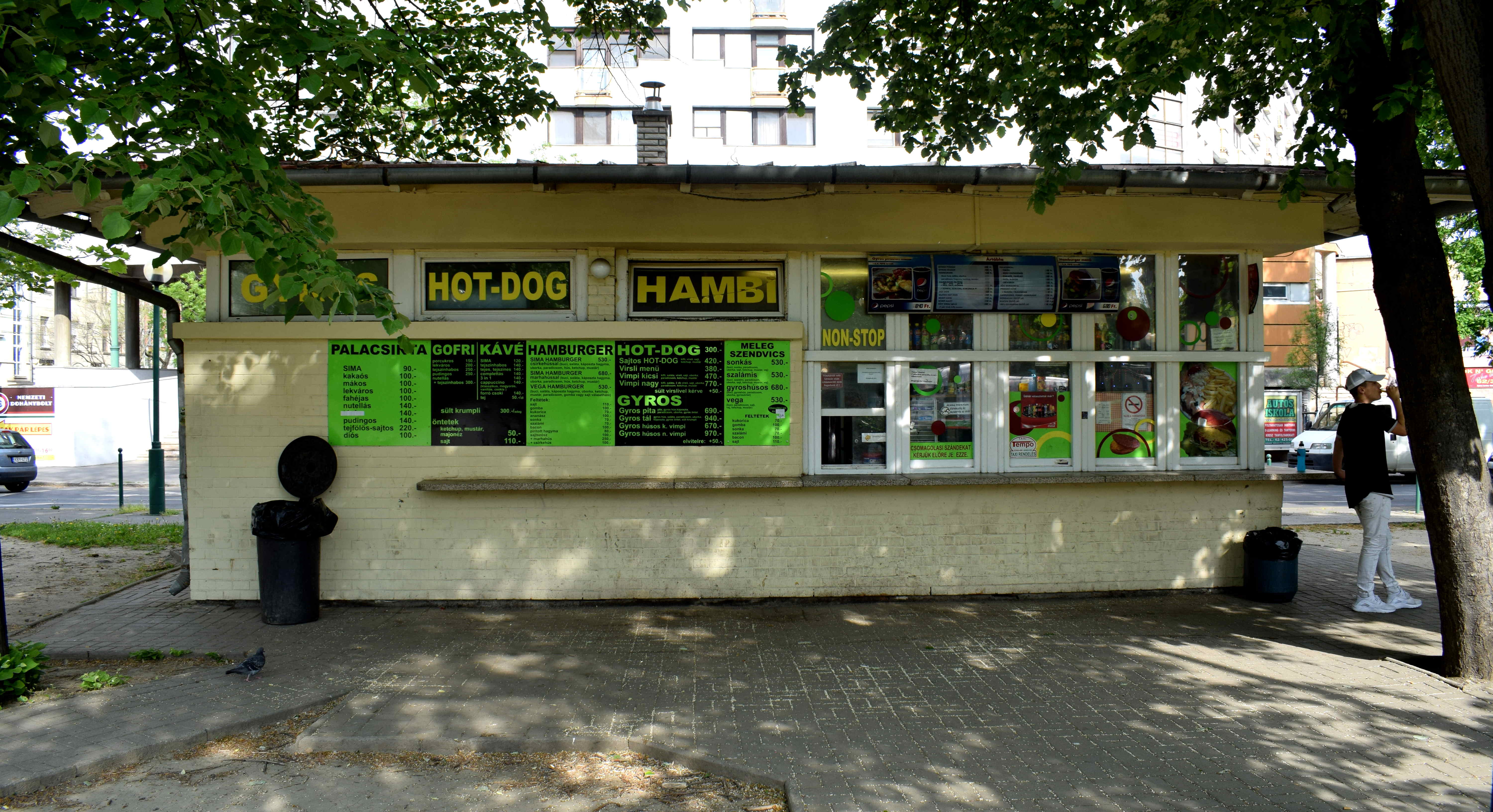 Fast food, Hungarian style.
Fast food, Hungarian style.
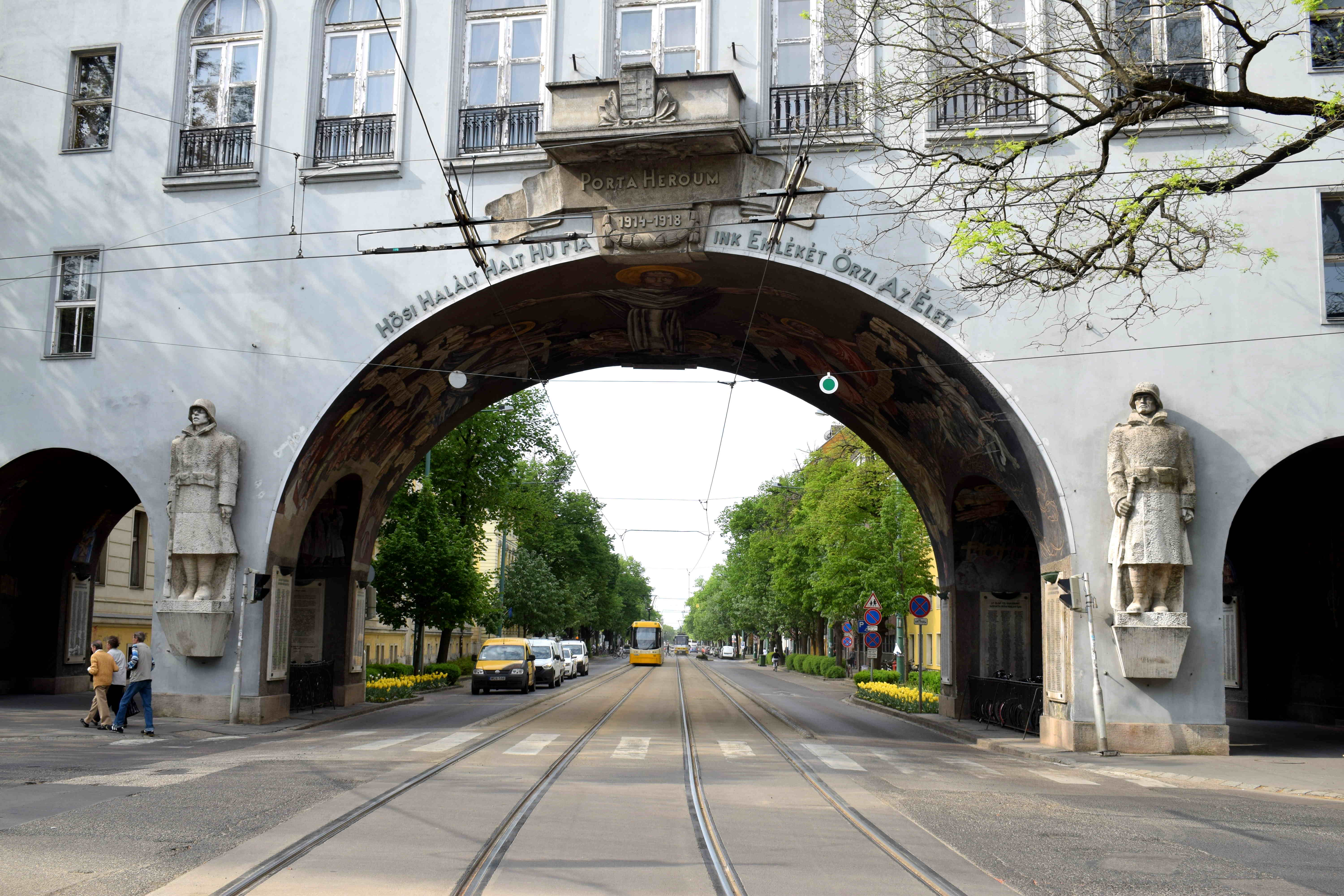 The Gate of Heroes, homage to Hungarian soldiers who died in WWI. There are two huge statues outside and inside the arch there is a mural all around. It includes all the names of locals who died in WWI from Szeged.
The Gate of Heroes, homage to Hungarian soldiers who died in WWI. There are two huge statues outside and inside the arch there is a mural all around. It includes all the names of locals who died in WWI from Szeged.
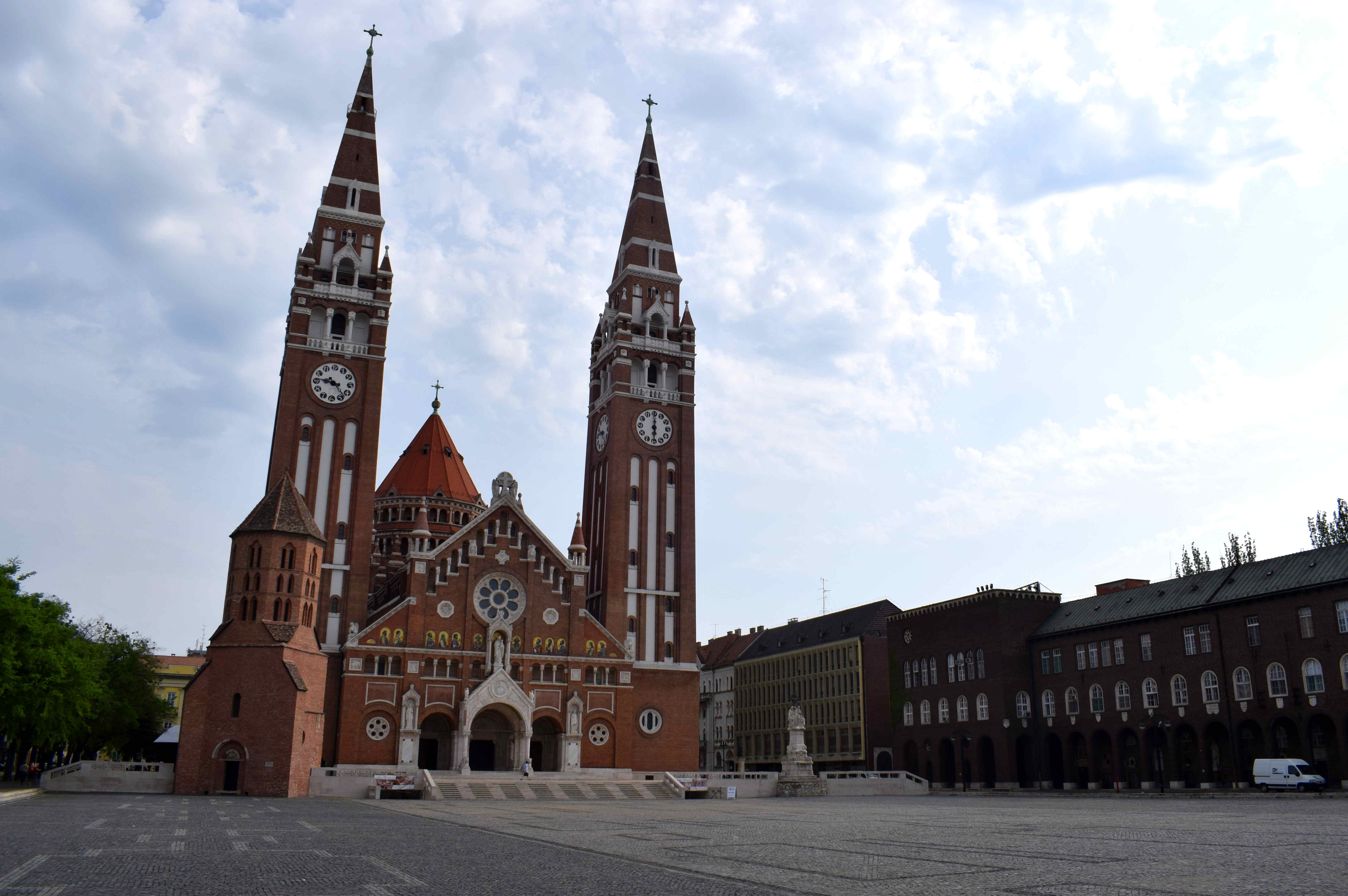 The National Pantheon is another must see in Szeged. It is part of the wider Dom Square shaped in a long U with the votive church in the center.
The National Pantheon is another must see in Szeged. It is part of the wider Dom Square shaped in a long U with the votive church in the center.
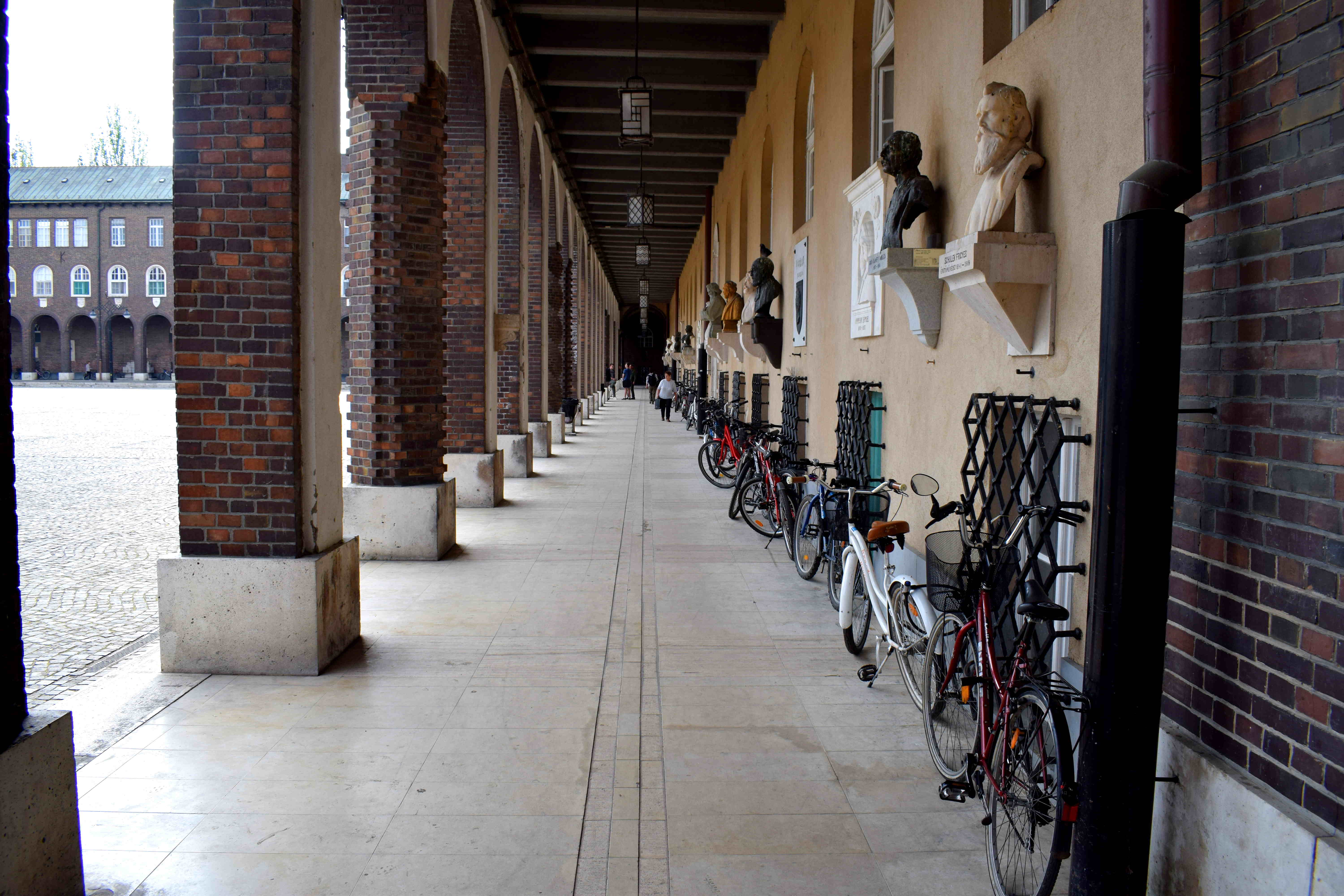 Along the wall you see statues to famous Hungarian patriots, kings, scientists and artists.
Along the wall you see statues to famous Hungarian patriots, kings, scientists and artists.
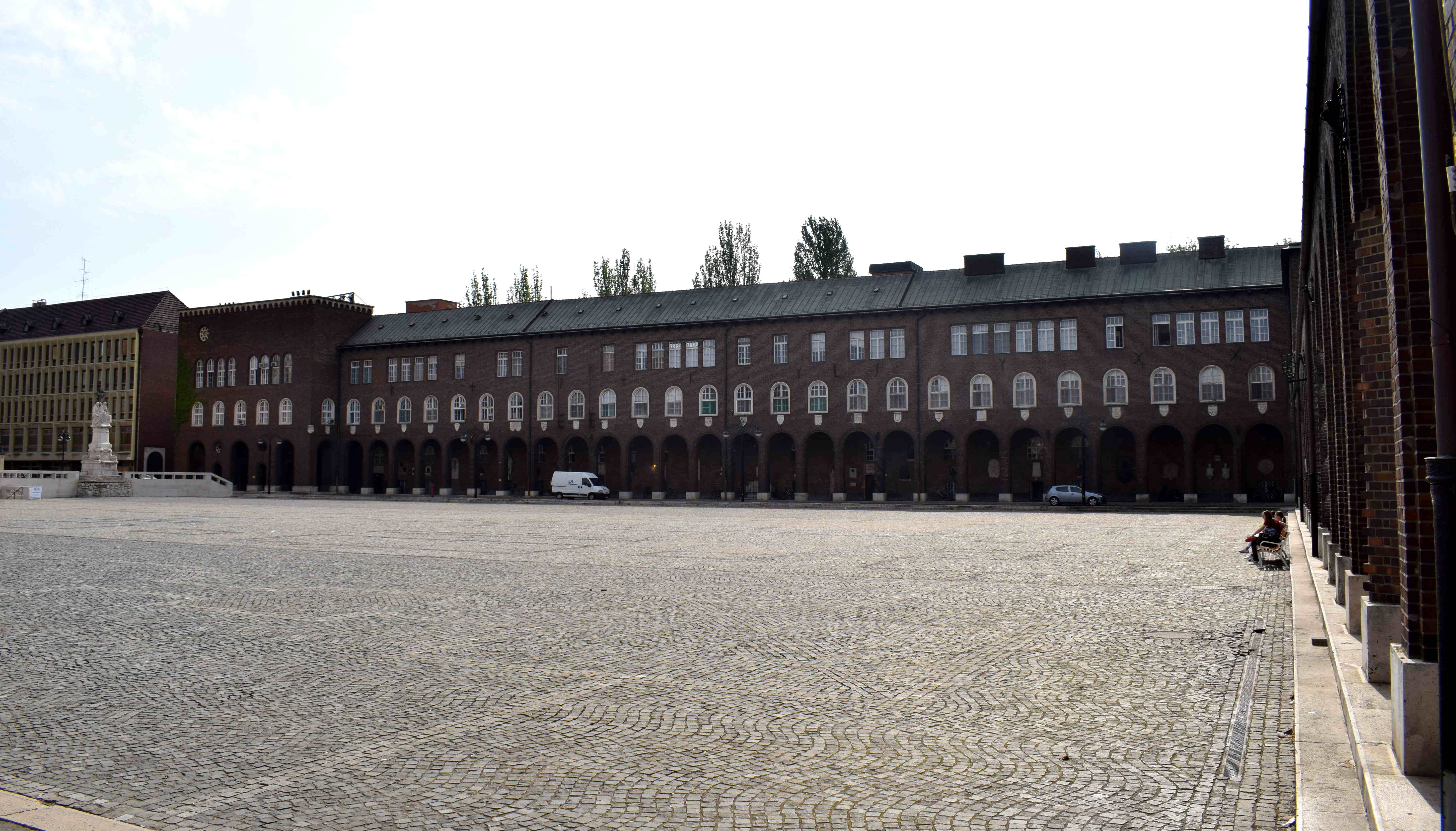 The square was laregely empty, but it did leave an impression of grandeur because of its size.
The square was laregely empty, but it did leave an impression of grandeur because of its size.
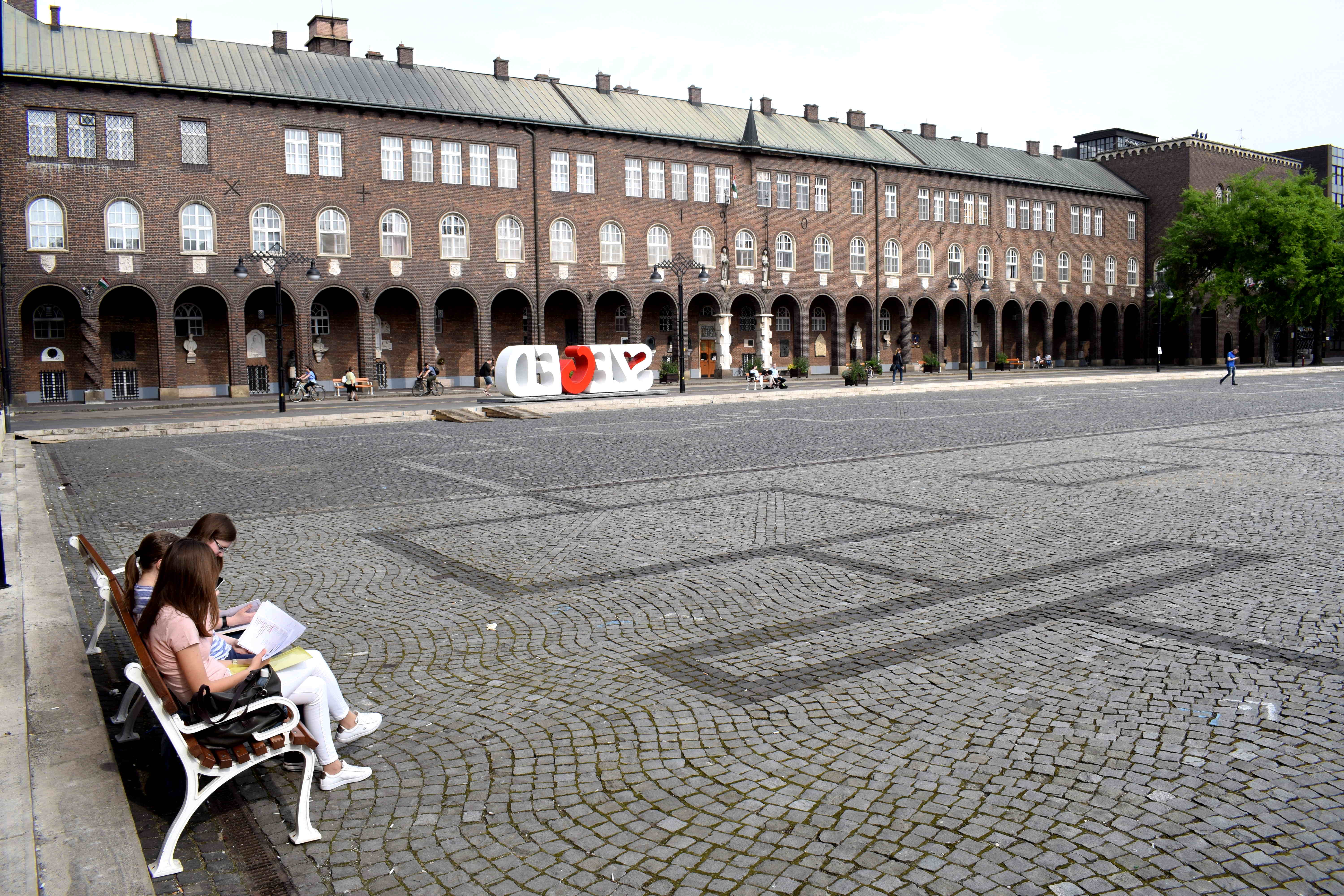 A lot of students were studying in this area, as it was nearby the university.
A lot of students were studying in this area, as it was nearby the university.
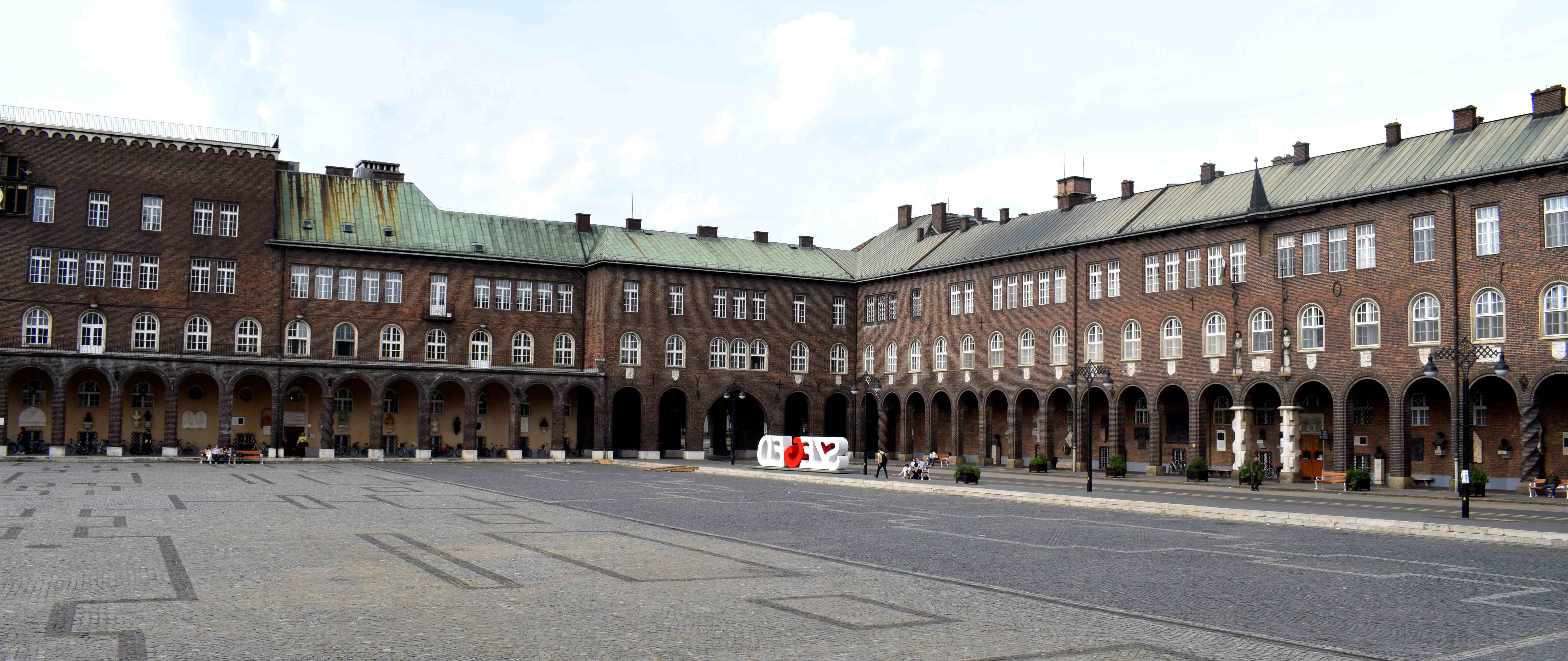 Another view of the walls.
Another view of the walls.
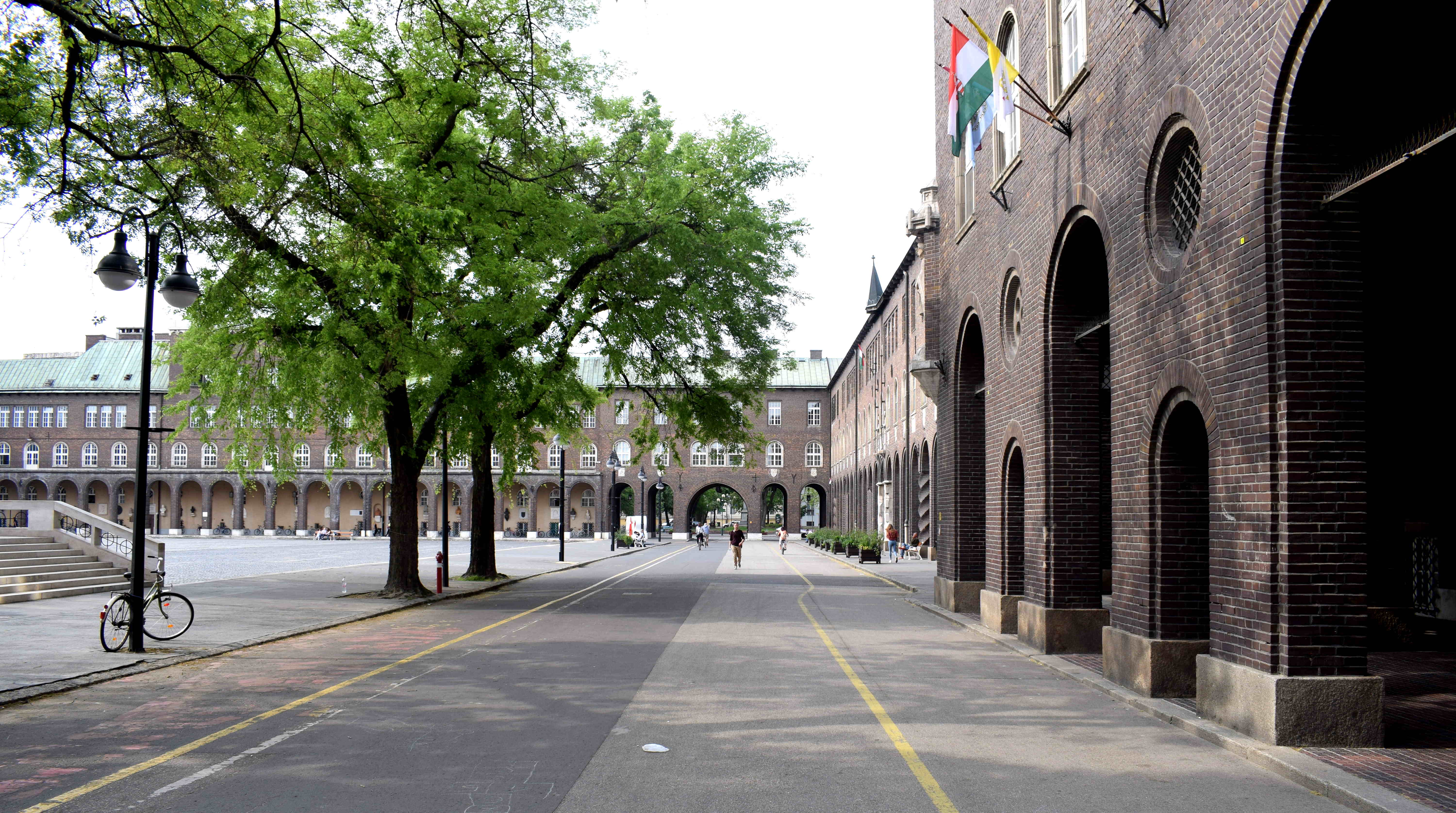 Bike lanes within the walls.
Bike lanes within the walls.
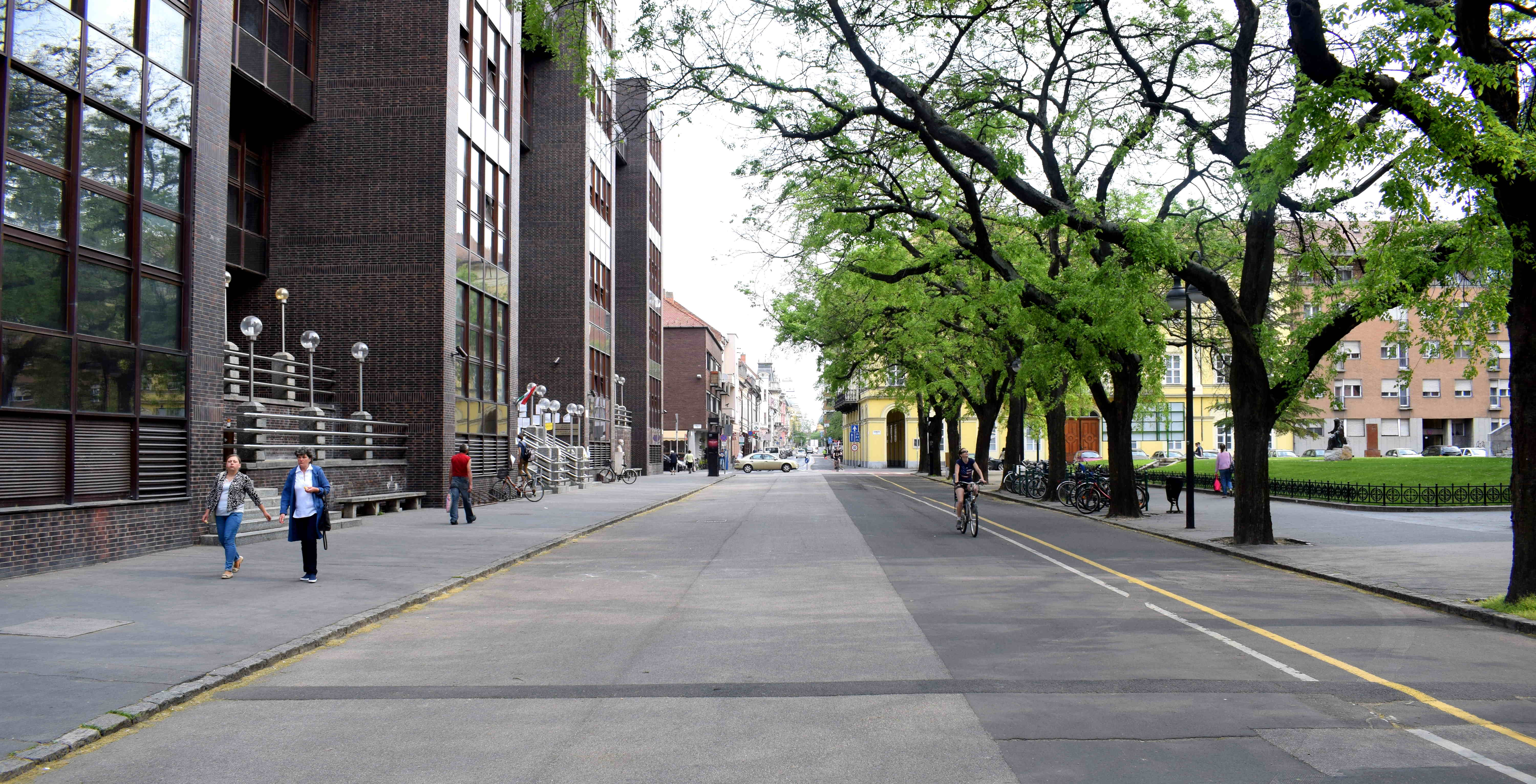 University buildings on the left.
University buildings on the left.
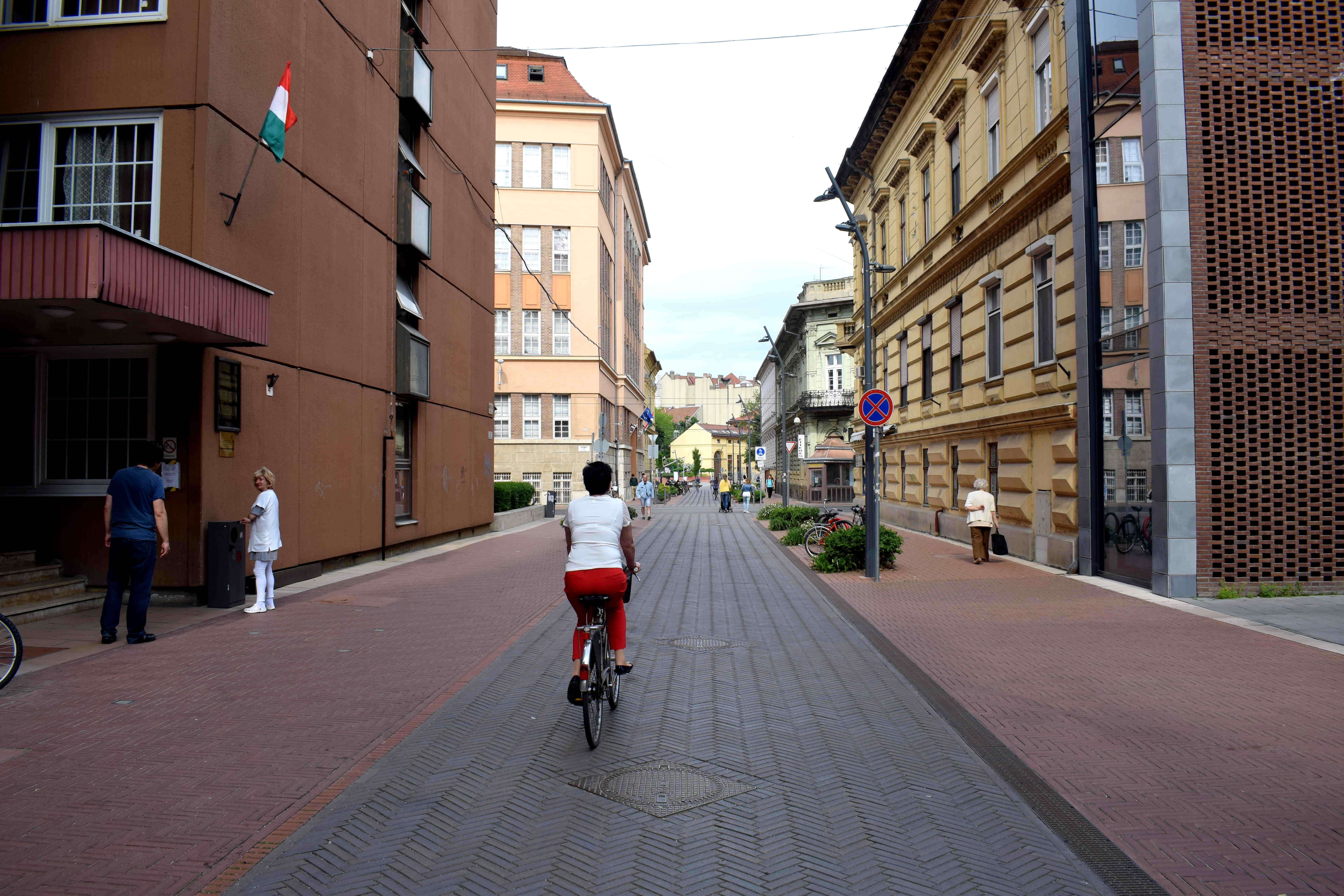 Some more biking.
Some more biking.
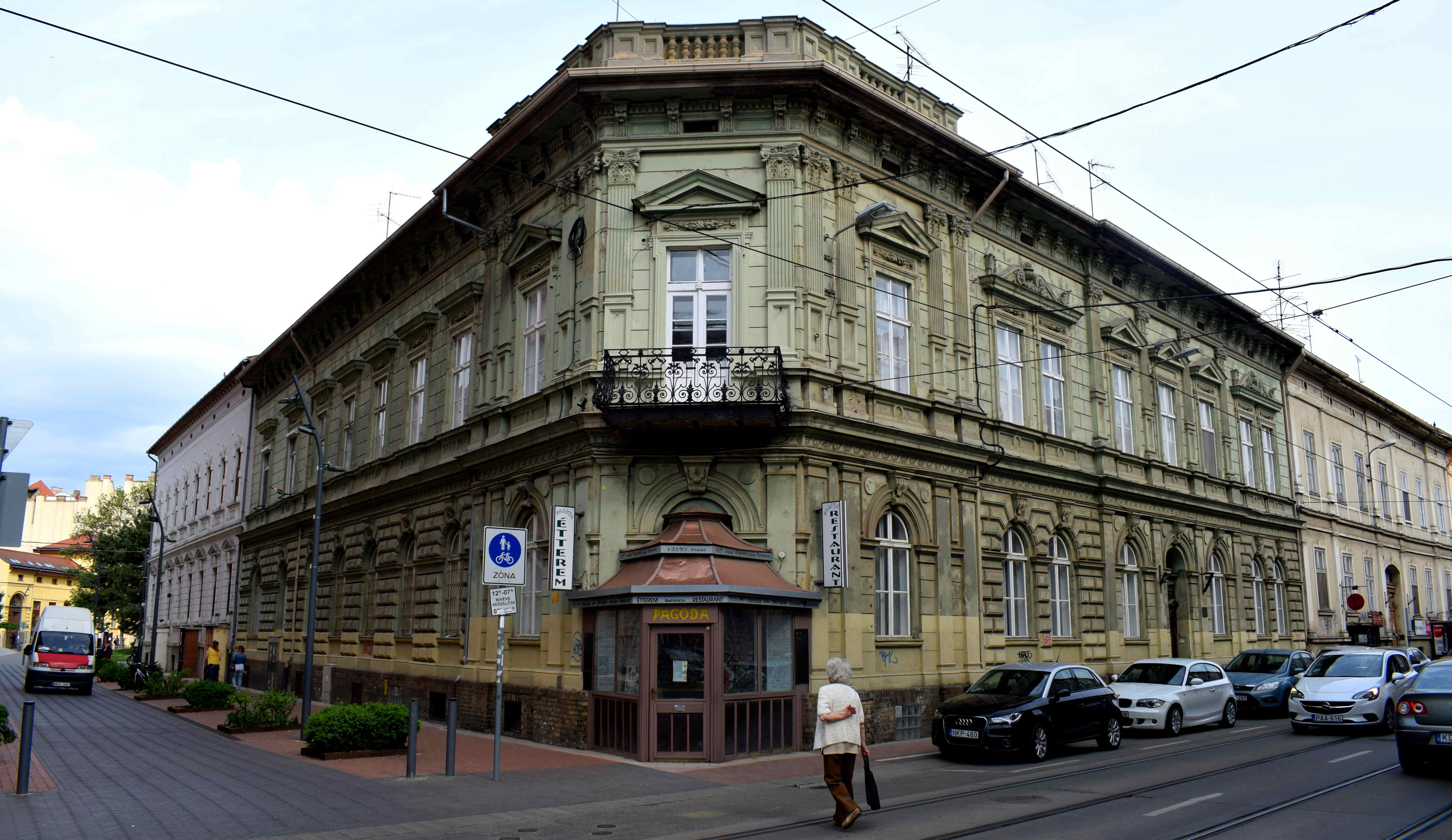 Back in the center.
Back in the center.
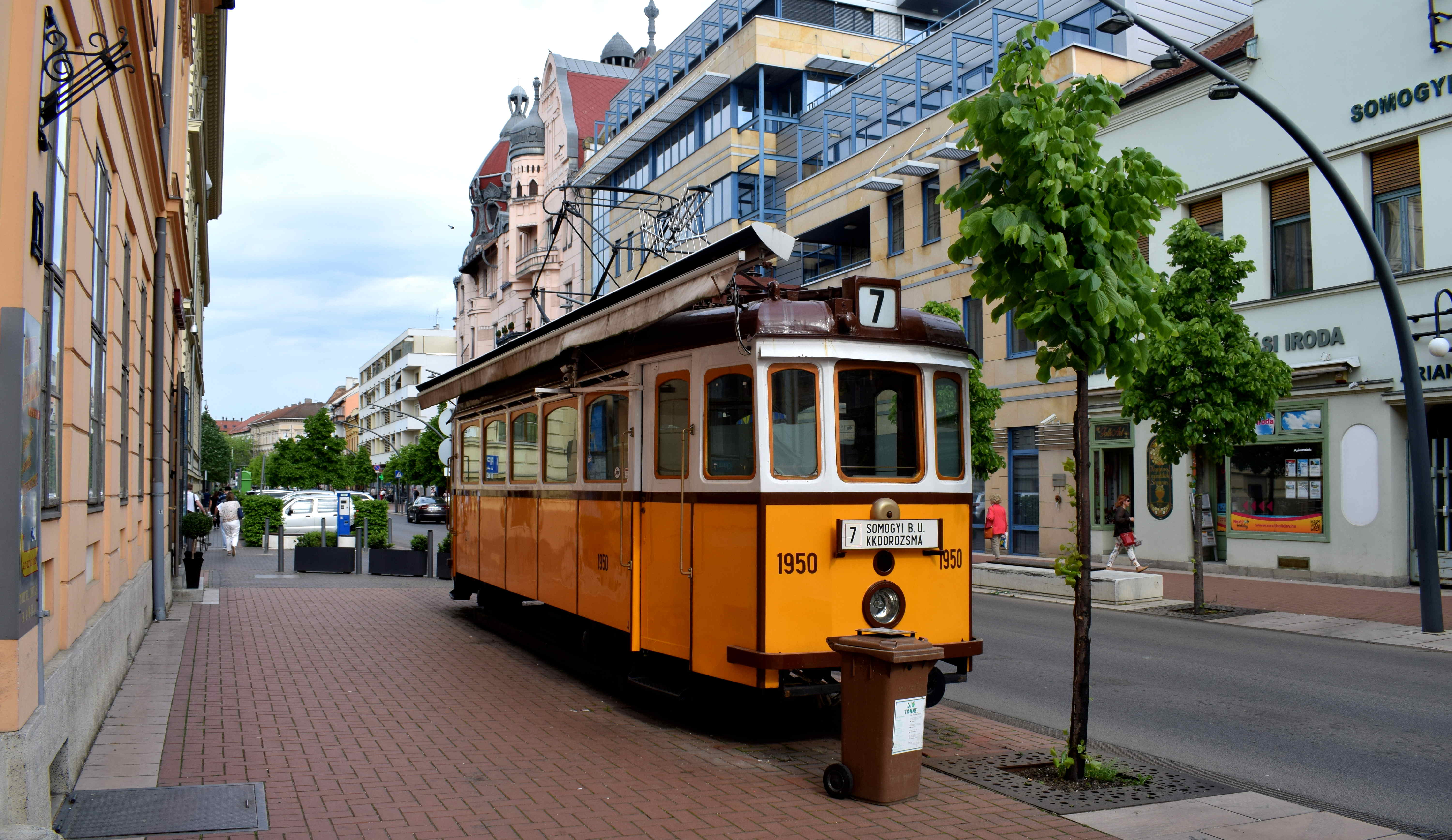 And a tram for the end.
And a tram for the end.
Overall, what can I say about Szeged?
It’s a beautiful city in the south of Hungary that probably rarely gets as much tourists as it deserves.
It was my first stop from Budapest before heading to Belgrade, and it was interesting to compare Szeged with Subotica.
Szeged is clearly in much better shape. The streets are cleaner, there is less graffiti, more biking infrastructure.
The contrast when you cross the border between Hungary and Serbia is striking.
But there are things both cities could learn from each other. Subotica should follow Szeged’s example in building more bike lanes and cleaning up the center.
While Szeged could learn from Subotica’s example and plant more trees in the center.
Overall, Szeged is a great day trip for anyone looking to see something outside of Budapest.
And instead of taking a direct train from Budapest to Belgrade and missing out on all these cities, I’d suggest taking a local train to Szeged and then Subotica or Novi Sad and then Belgrade. That way you see much more of this beautiful land.
